OK, in my rush to get the Paris post out, I skipped a very enjoyable tour of Belgium with our friends Dave and Dominique a couple weeks ago. However, here are a few pictures from the stop in Bruges.
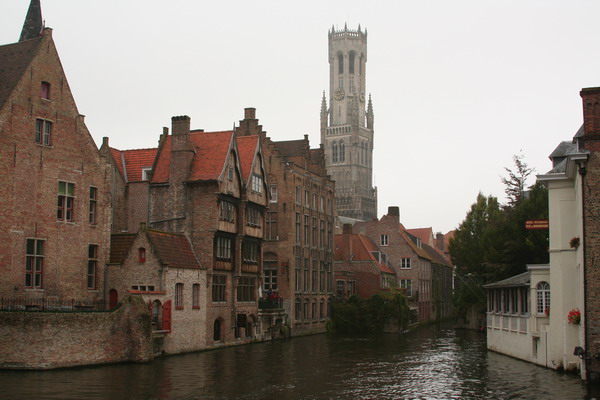
This is Dominique in the main square. As you can tell, Dave took this (and the next couple) pictures. For those who have traveled with us before, can you guess what I am doing here?
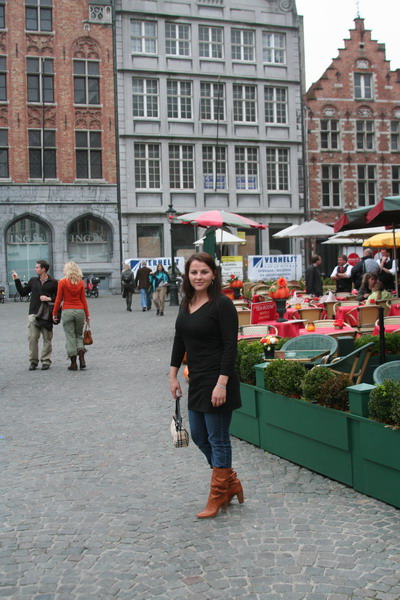
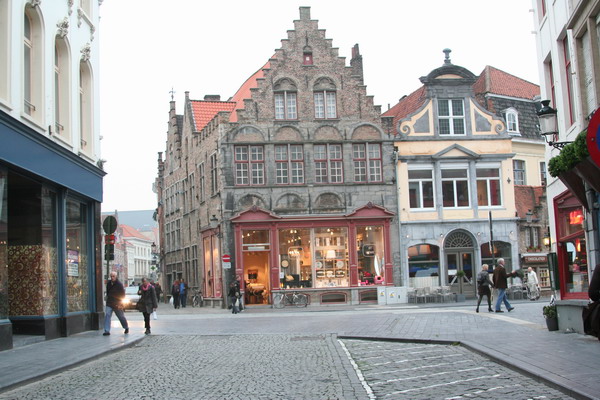
We have really come to appreciate Belgian chocolate. This is the inside of our favorite chocolatier, Dumon.
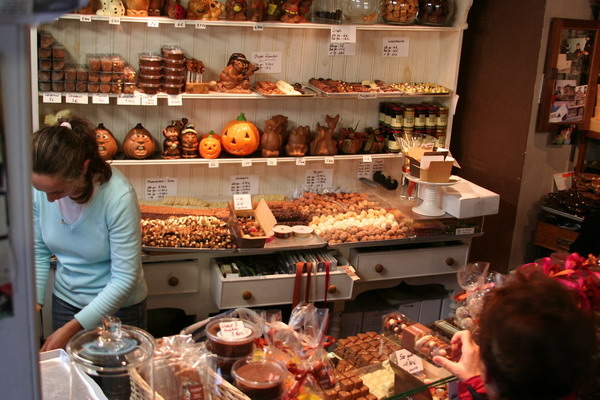
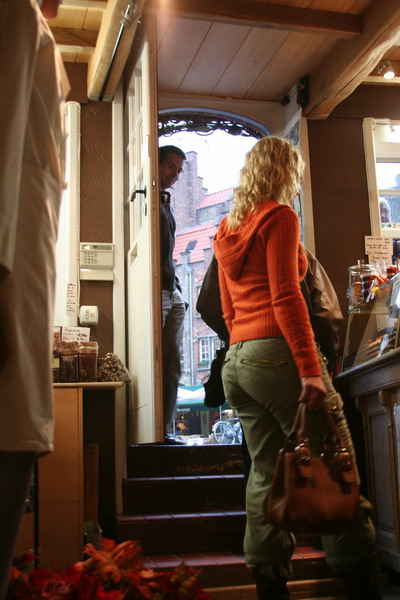
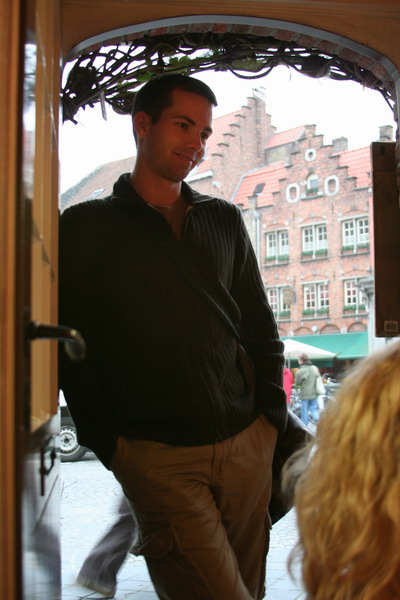
The next couple are from our walk through the town after dinner.
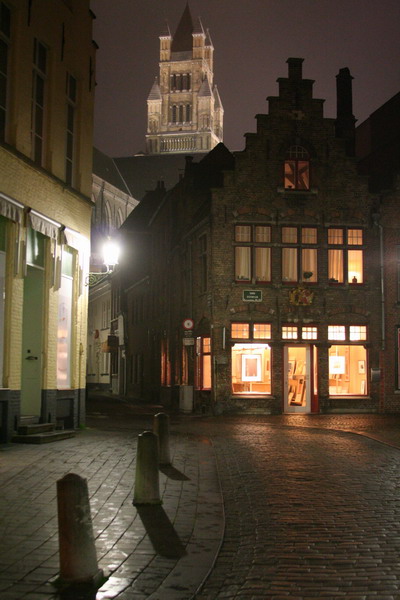
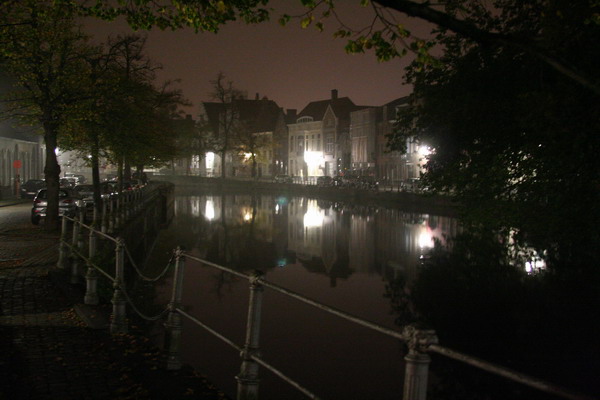
This final image is from the Church of Our Lady. This is the sculpture “Madonna with Child” by Michelangelo. I know I posted one like it on the last Bruges post, but I liked this image anyway.
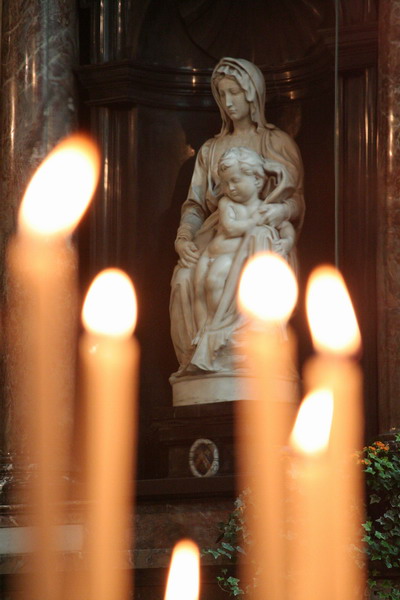
So, although we wish we could have spent a lot longer touring around, it was a great time.
The next post will have a few images from last weekend’s trip down the Rhine. So, until then.
–Jim
Category: Trips
Encore, Paris!
Hmmm… Paris. What to say??
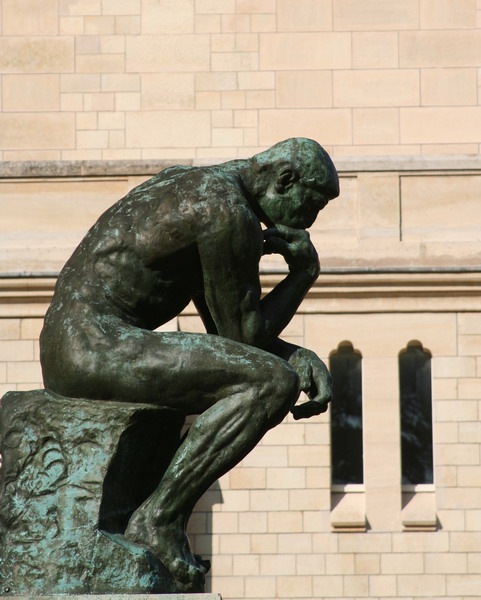
We just had a wonderful time in Paris, again. It’s still my favorite city to visit in the world.
We chose to focus on museums this visit. We even hit a few for a second time. As you can tell, these images come from the Rodin Museum. We loved his bronze work. It’s so easy to feel the emotion and understand why he’s the most acclaimed artist since Michelangelo.
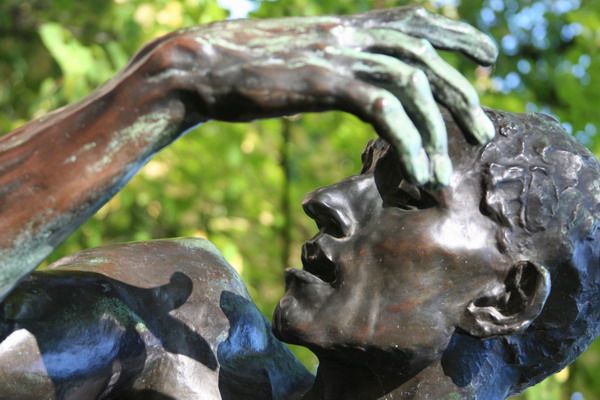
We also visited the Musee d’Orsay. If you’re not familiar with this
spectacular gallery, it’s a train station built at the turn of the 20th century that was turned into a museum to pick up in art history where the Louvre left off, Impressionism. It’s a great venue and a work of art in itself.
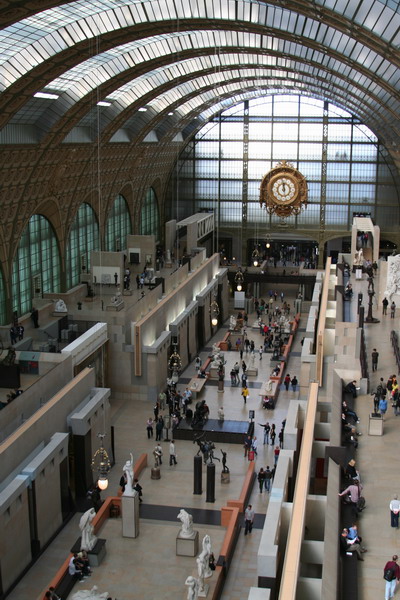
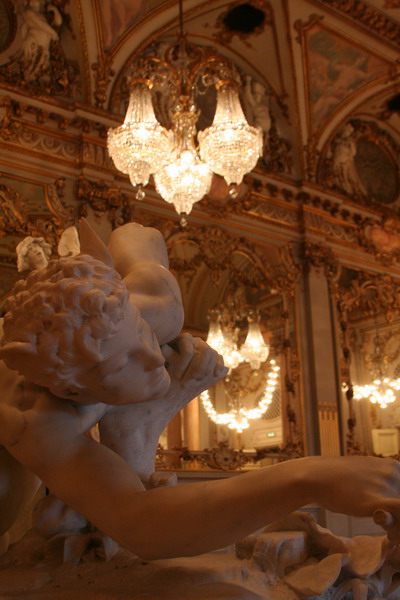
Through the clock is Sacre Coeur.
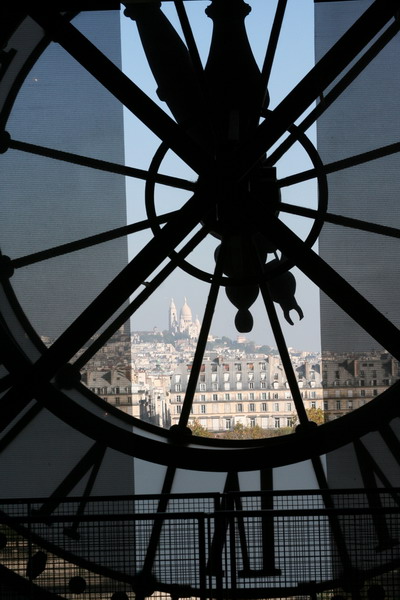
We also visited the magnificent Chateau de Versailles. What began as a hunting lodge in 1624, became the full time home of the French Sun King, Louis XIV in 1682. His heirs, Louis XV and the infamous Louis XVI and wife, Marie-Antoinette also ruled from this palace.
This is the Chapel, where the King had daily mass.
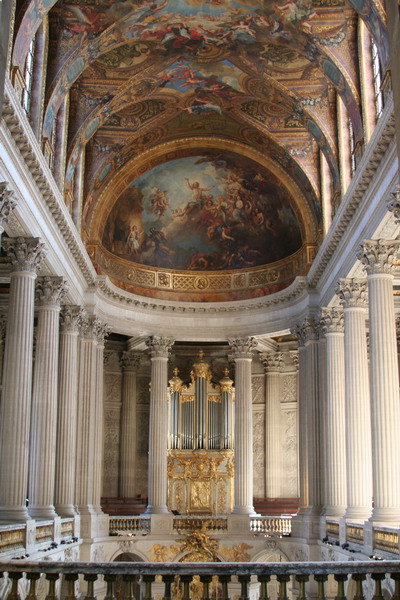
Here is the bust of the Sun King himself. He was revealed in this piece of marble by the great Bernini.
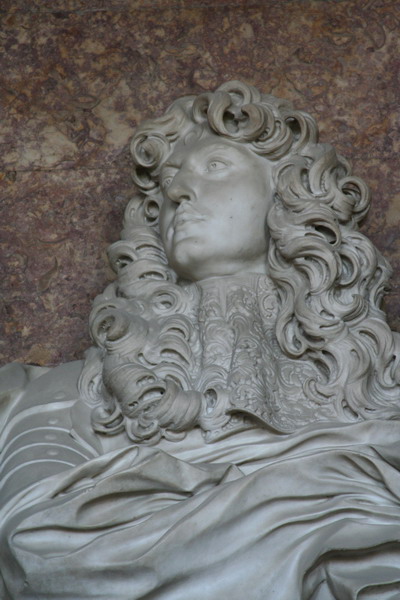
The rooms of the chateau were stunning.
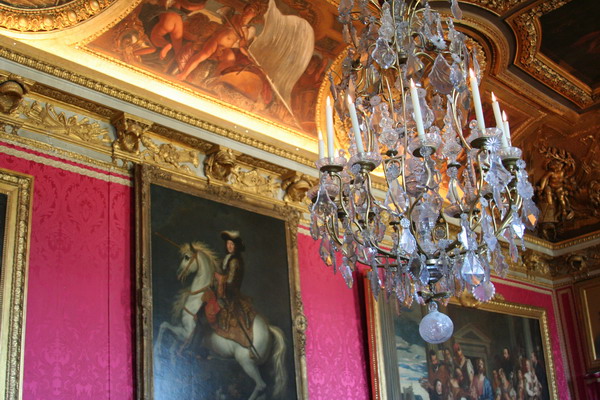
In 1678 the back terrace was turned into the most famous (and grand) room, the Hall of Mirrors. To give you an idea of the scale, it measures 250 feet long by 35 feet wide and 40 feet high. Its massive proportions are added to by it’s historic significance. In 1919, Germany signed the Treaty of Versailles which ended World War I.
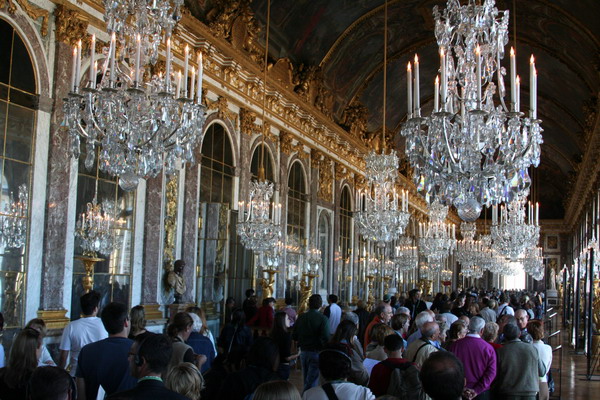
The artwork adorning the walls is often of the royal family. In this case, it’s the infamous Marie-Antionette and her children. Pictured are her eldest daughter, Madame Royale, the Dauphin (AKA heir apparent), Louis-Joseph (born in 1781), stands next to her while the third child (the future Louis XVII, born in 1785) is on her knees. This was painted a mere 6 years before the start of the French revolution. In some ways, the queen began the bloody revolution. However, the much-attributed phrase, “Let them eat cake” was probably not even uttered by Queen Marie-Antoinette (although it may have been). Similar to the way the Boston tea Party united the American colonies against the British, a certain diamond necklace united the French proletariat against the aristocrats and monarchy.
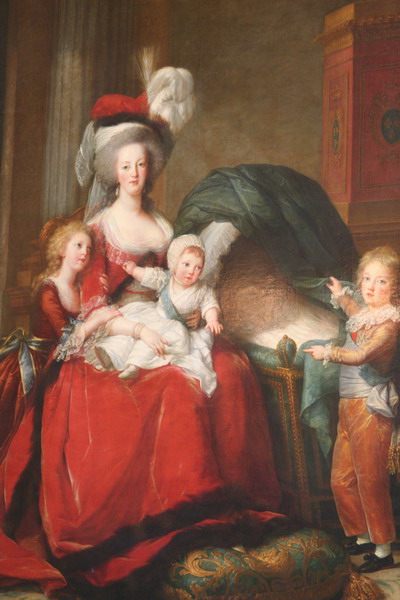
Here’s the story of the necklace and the queen: there is a young noble woman (on the verge of bankruptcy) who plays two men’s belief (the Cardinal of France and a jeweler) that she has the favor of the queen (Marie-Antoinette). So, she convinces the Cardinal to buy a 2,800 carat diamond necklace from the jeweler, give it to the noble woman, who would then (supposedly) give it to the queen. The idea was that the cardinal would then be able to gain the queens favor with this gift. Unfortunately, the necklace never made it to the queen and when she got the bill, the pieces fell into place. She and her husband Louis XVI, were furious with the cardinal and his disrespect. So, they demanded a public trial. Unfortunately, the cardinal was acquitted, but the noble woman was found guilty, flogged and imprisoned. However, since the jury had rebuked the French sovereign (a new precedent), it in fact marked a turning point and signaled the impending revolution.
Now, here is the view from the back of the chateau, overlooking the immense gardens.
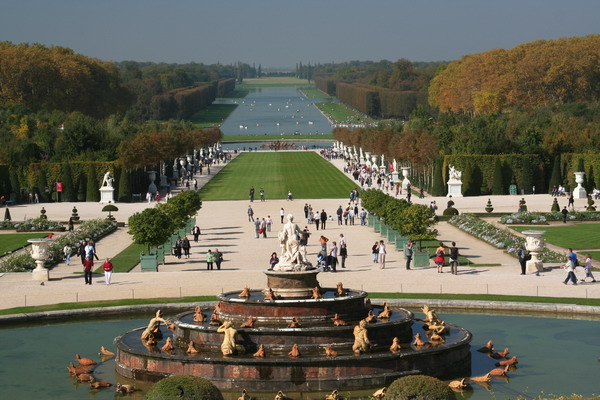
Here is the view back to the chateau.
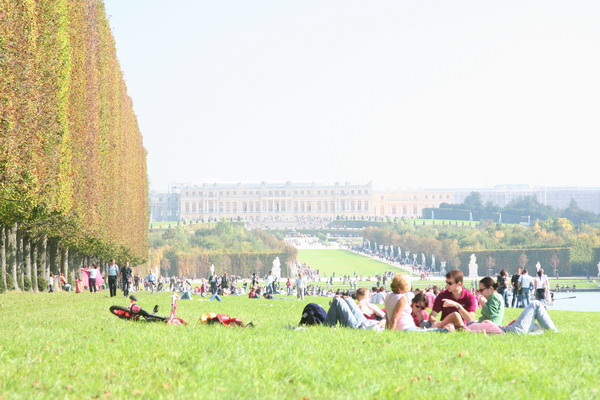
Next stop was the Panthéon in the Latin Quarter (just up the street from our hotel). It began as a church to St Genevieve, but has become a burial place for famous/influential French. One of the more interesting residents is Voltaire. Here is his crypt.
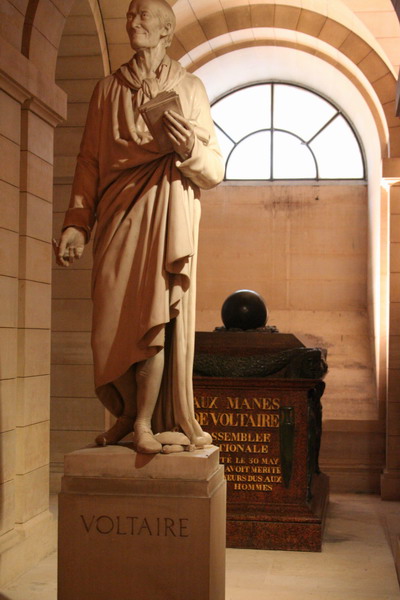
Here is the inside of the Panthéon, with my favorite touring partner.
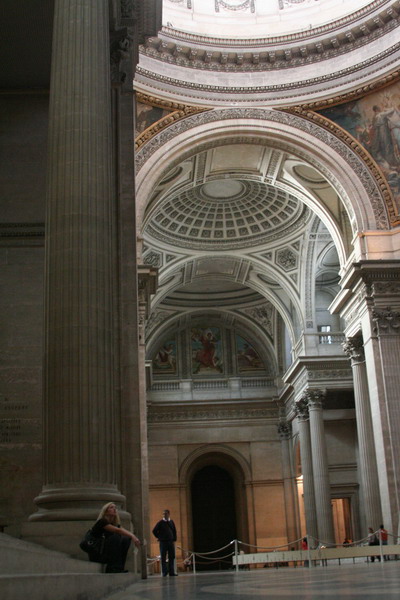
Also housed inside is something called a Foucault Pendulum. This was a device conceived by the French scientist of the same name in 1851 who wanted to physically prove the rotation of the earth (although that was already commonly accepted knowledge). His experiment was to mount a weight at the end of a long wire, release it and watch as the weighted bob moved a known amount with each passing arc, proving the Earth rotated underneath the swinging weight. This created quite a fervor in both the academic and and layman worlds. It was tangible proof that the Earth rotates in an easy to set up experiment.
As a side note, if you perform this experiment at the poles, the bob will trace a complete circle in the 24 hours the Earth make one complete revolution. Here, it went just over 270 degrees each day. You can see, it’s just about 5 PM in this picture.
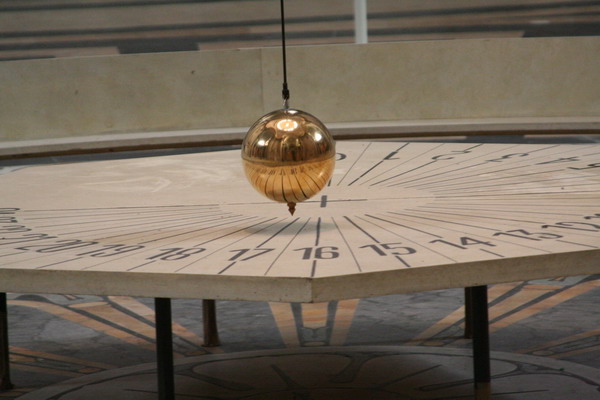
As night falls in the city of romance, the lights come on to illuminate sight like the stunning Notre Dame. Construction took about 200 years, but was finally completed around 1250.
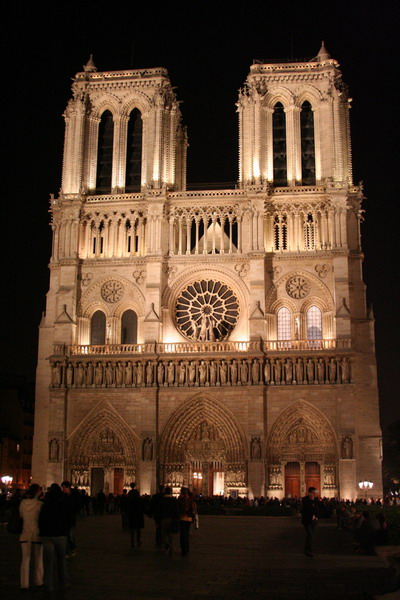
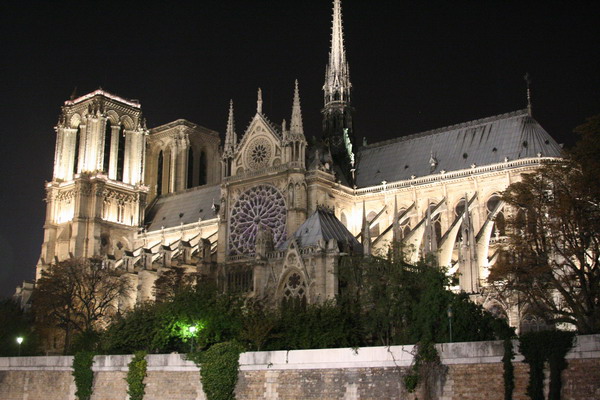
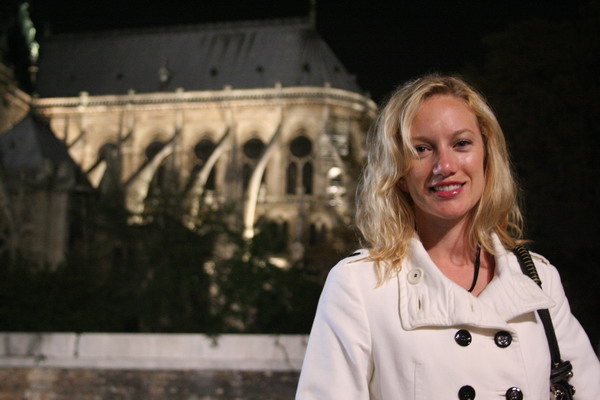
The metro is a great way to get from site to site in the city.
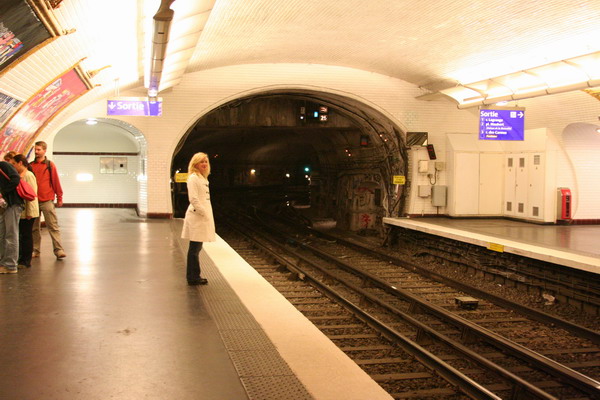
We also decided to go back to a couple familiar, but never common sites that are great after dark. The first is of course, the Arc de Triomphe.
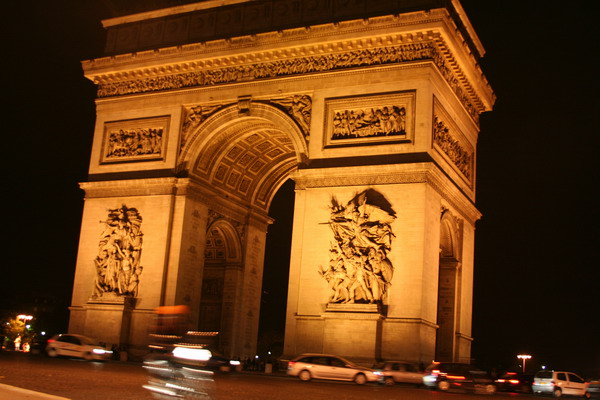
This relief is called the Departure of the Volunteers of 1792, or commonly La Marseillaise. This is interesting because it’s a unique sculpture where Liberty is cheering on the French people to rid themselves of tyranny. Also, the French national anthem is La Marseillaise and its lyrics are very similar to the emotion seen in this sculpture.
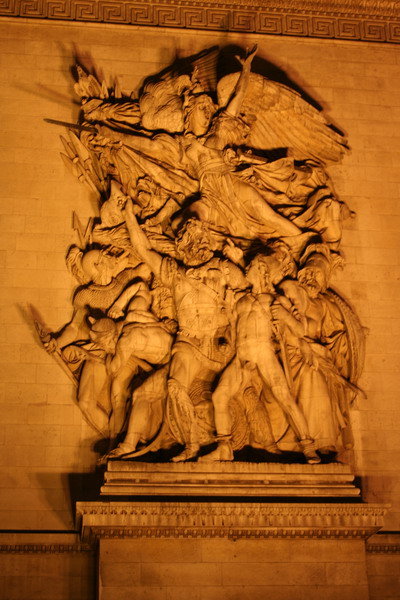
This time, we decided to visit the small museum in the top and go out to view the city from the top of the landmark where all roads converge.
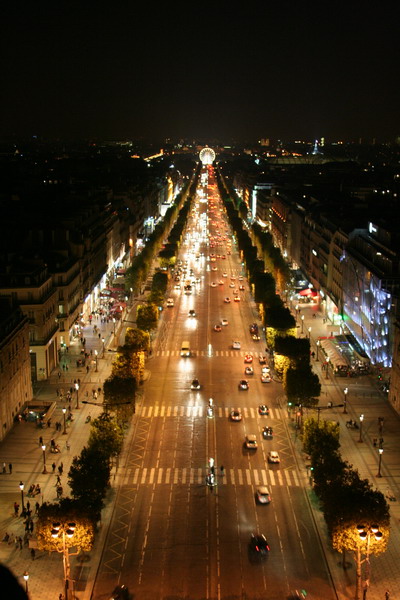
Then, over to the quintessential monument to late 19th century French engineering.
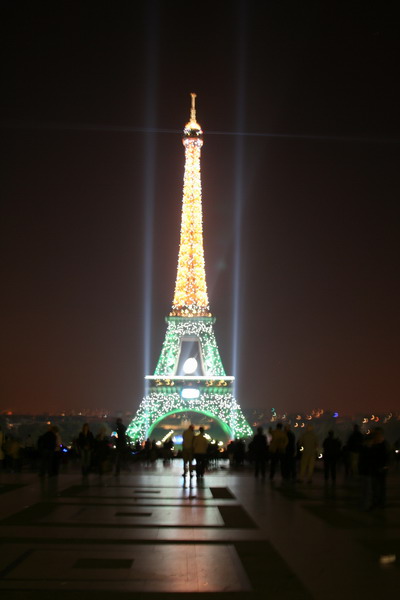
A view from the second floor of the tower.
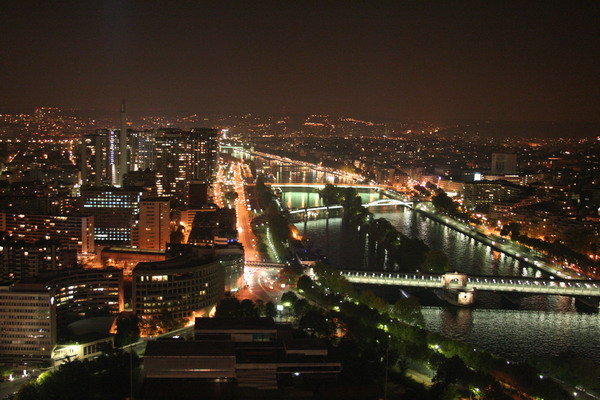
This is from 400′, looking up to the 1,000′ peak of the tower.
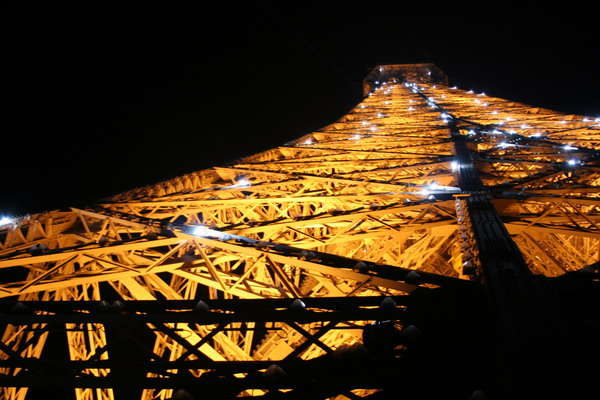
Reflecting back on the beauty of this landmark.
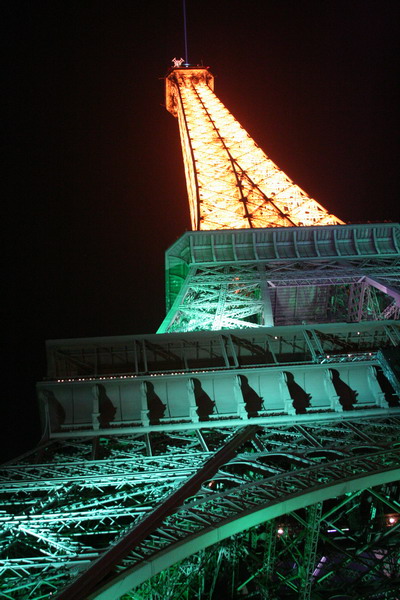
Yet again, we fell in love with the city. It was a great way to complete our re-connection time together, in the city of romance, love and science.
But, now we must wait a little while before traveling again.
So, until then.
–Jim
Venice, Italy
For our first “real” trip together again, we chose to visit the ultra-romantic city of Venice to get re-acquainted.
Although much acclaimed in history and pop culture, Venice is a relatively small town with only 65,000 people living in the city that is shaped like a fish. Our hotel was conveniently located near where the dorsal fin would be. However, since Venice is more like a town than city, everything is close.
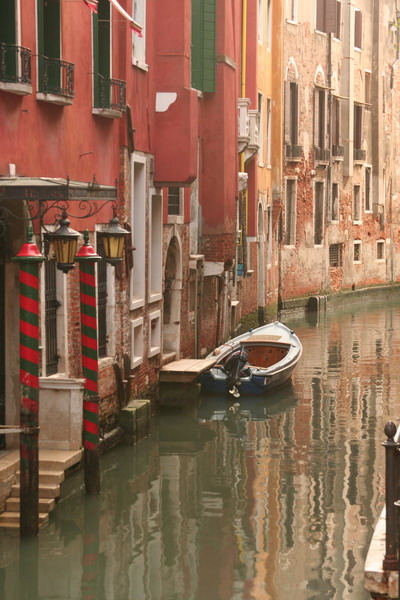
We spent a lot of time cruising on the vaprettos (like a water borne bus), or just wandering around. We thought the best part of Venice was simply taking it in as we passed from canal to canal surrounded by beautiful architecture.
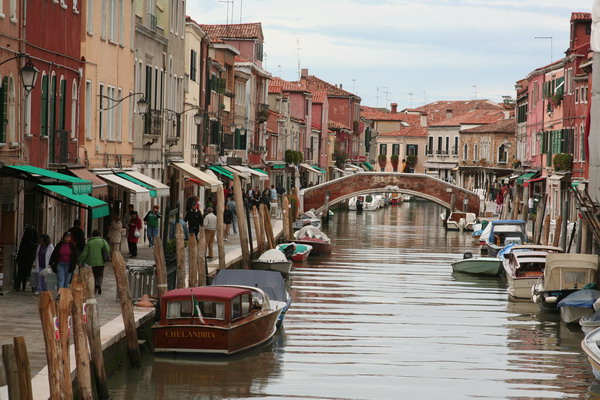
Of course, the gondolas were everywhere.
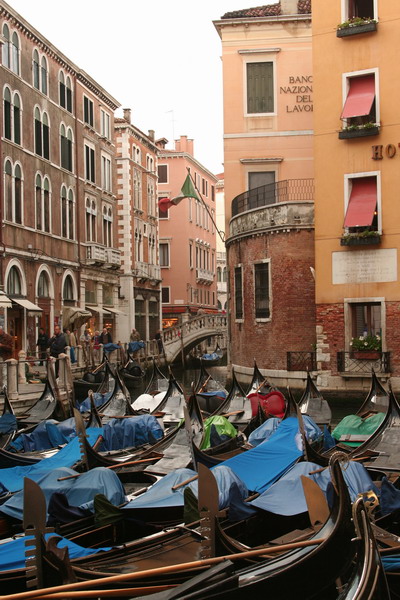
There is no real significance to these buildings. I just liked the way they look.
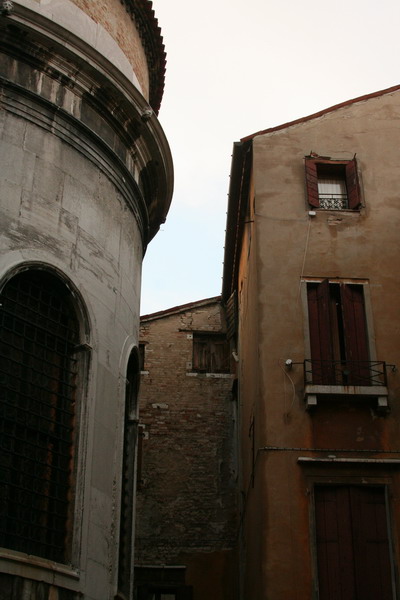
Saint Mark’s Square is probably the most famous landmark in Venice. There are a number of interesting museums in addition to the large church and bell tower you see in this picture. The building on the far right is the Doge’s Palace. Venice was an autonomous city-state for over 1,000 years, and this is where the elected leader lived and conducted business. Venetian government uses an interesting method. There is a grand council of noble or aristocratic families that elect 120 senators. Those 120 elect 1 man to be the Doge (or Duke) for life. He is the nominal leader of the city. However, his power was checked by a number of bodies, like the Council of Ten. This group decided pretty much on everything from foreign relations to financial matters. They were important all the way until 1797 when Napoleon conquered the city and dissolved the council.
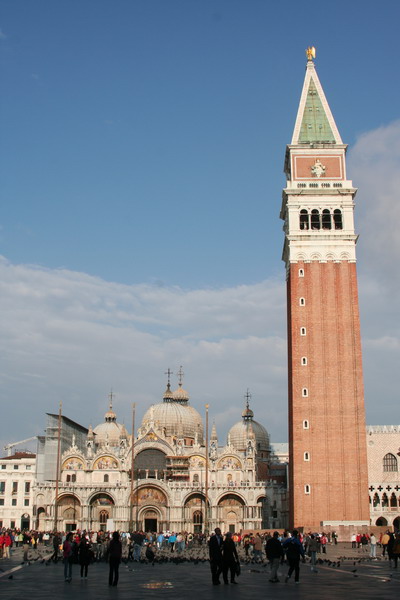
The pigeons of St Mark’s square are almost as famous as the buildings. They have gotten VERY used to being fed by the tourists.
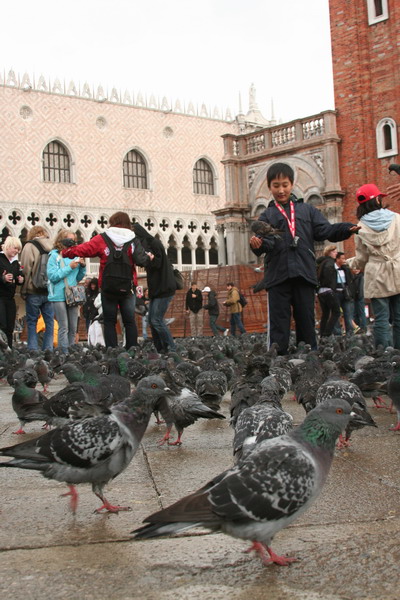
A bag of bird food provides much entertainment (not to mention amusement for those nearby).
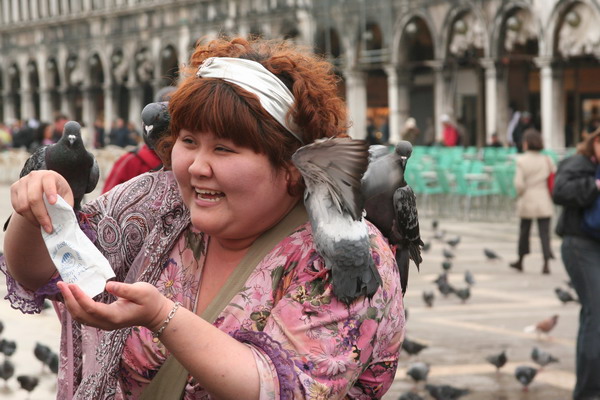

They have gotten so used to interacting with humans that even if you don’t have any food, they will land right on you.
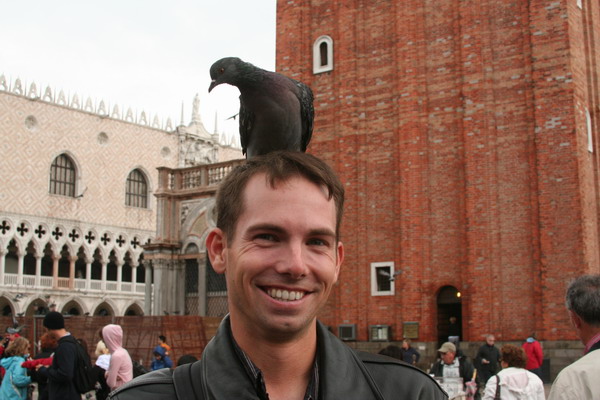
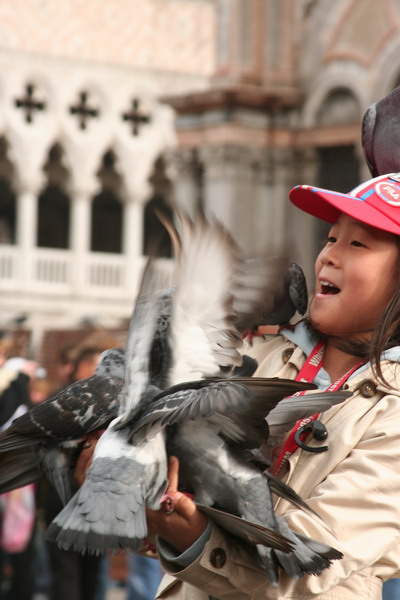
More gondolas.
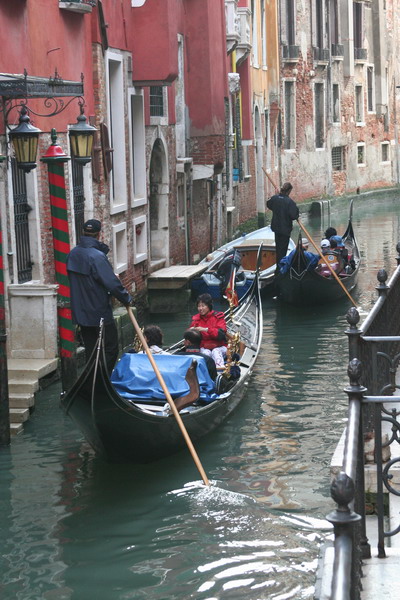
This image is the Grand Canal. It is Venice’s aqueous main street.
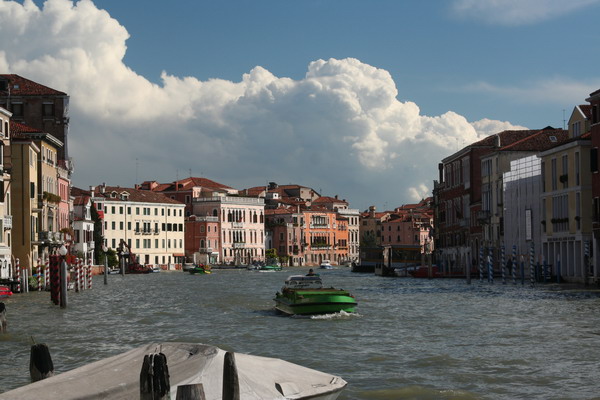
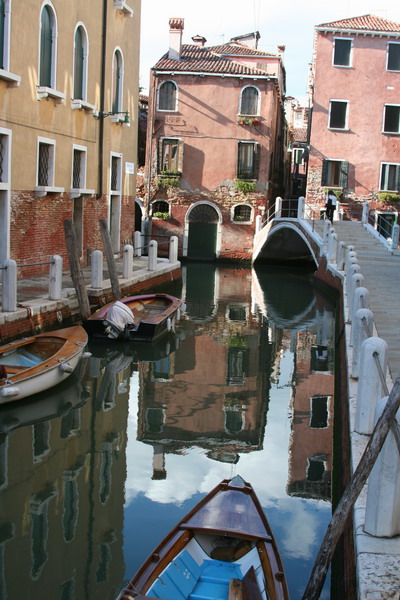
Some of the streets run right into the canals.
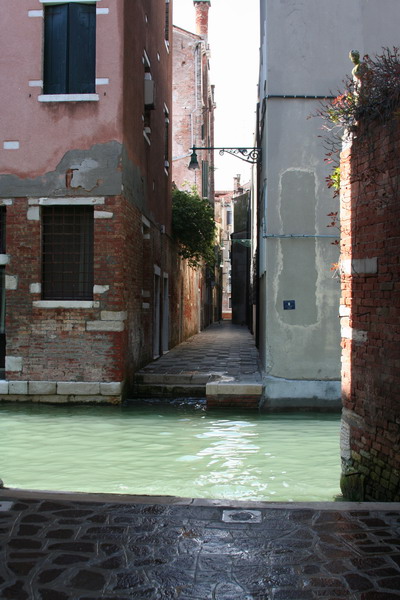
More canals and gondolas.
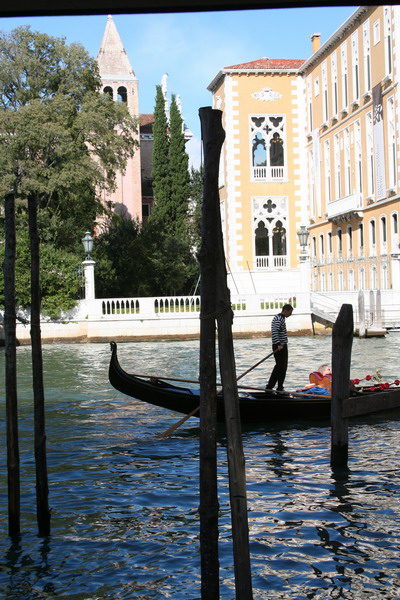
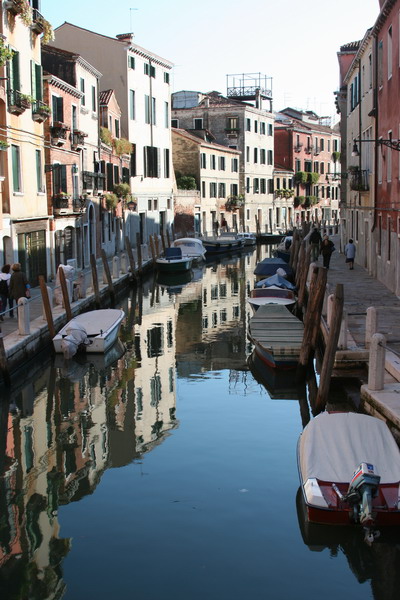
Creating glass has been a part of Venice almost since it’s inception. However at the end of the 13th century, the industry moved to the island of Murano to lessen the risk of a catastrophic fire in the city center.
We decided to hop on a ferry and check out the world-renowned Murano glass. It did not disappoint. Here are a couple images from a glass factory. The master in charge (on the right) spent 25 years learning the trade before he was even considered to be a master.
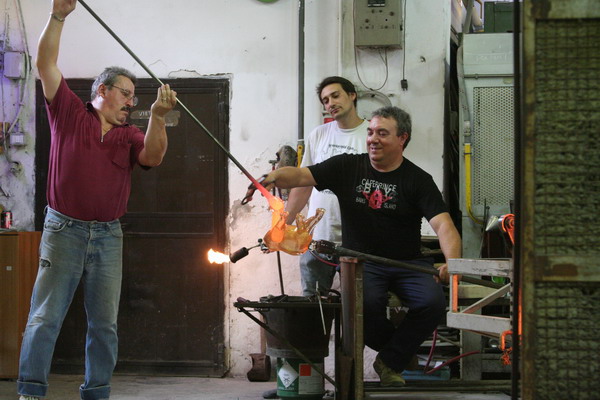
The glass objects they produce are truly works of art.
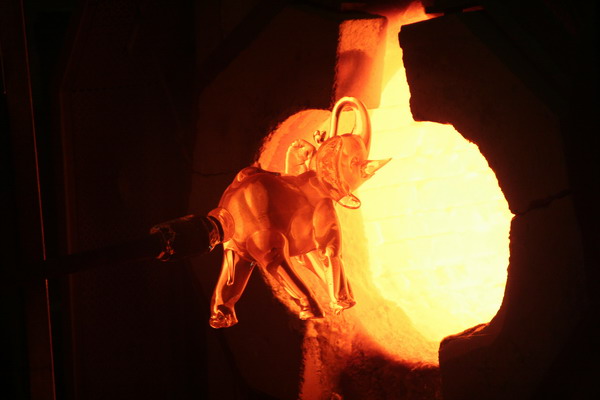
Back in the grand canal, gondoliers continue to paddle love-struck tourists around.

Some came complete with a serenade.
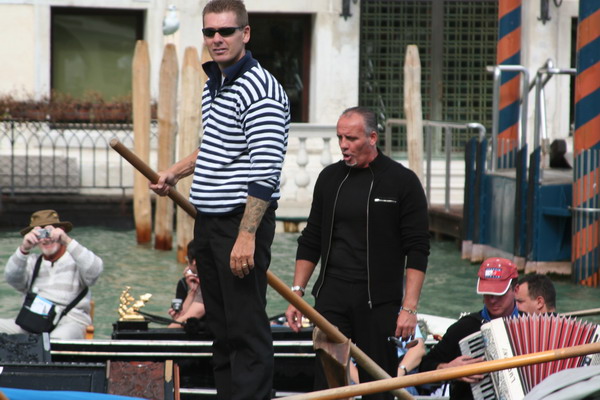
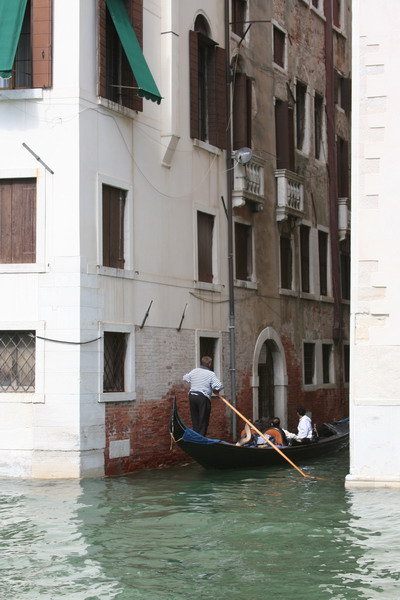
This is the Rialto Bridge. It is another architectural landmark of the city. This is the third bridge in this location, completed in 1591. The two earlier bridges were wooden and could open to permit passage of large ships. However, since this 160 foot stone span was built to last, that accommodation ended. Nevertheless, Rialto continues to be the commercial district of Venice.
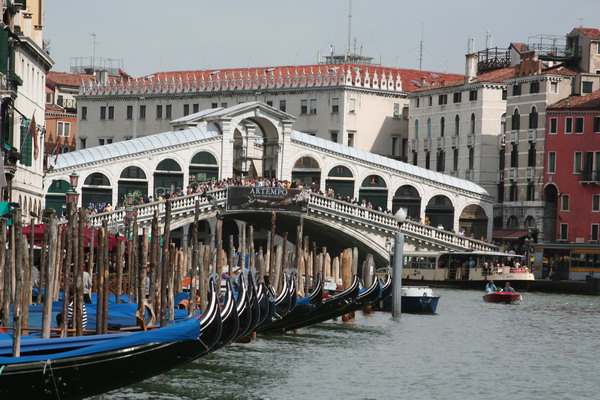
Another gondolier.

Since Venice is as close to sea level as you can get, it is very affected by tides and changing water levels. Unfortunately, in addition to the rising sea levels that are much touted in the media these days (the actual magnitude of that rise is debatable), the foundations of the city have sunk several inches AND the local tide levels have increased several inches. So, the combination of all three of those factors means that the city of canals deals with flooding on a regular basis. This is just a small example of what is happening.
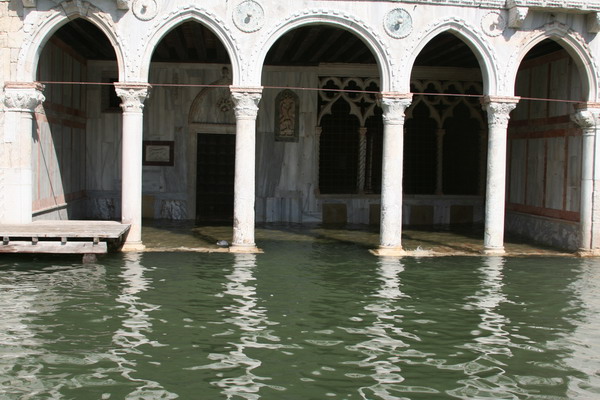
Venice by night is an experience all romantics need to have. It is simply amazing.
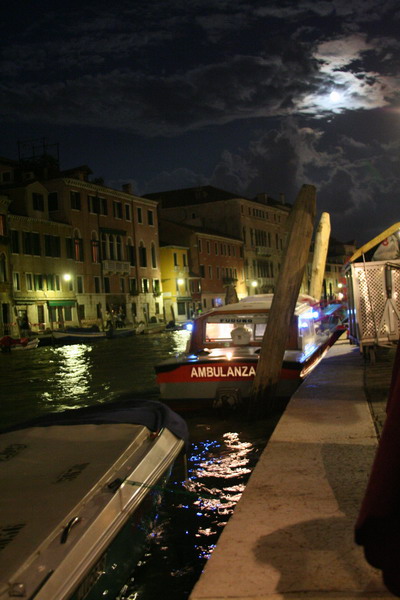
The great violin virtuoso and composer, Antonio Vivaldi called Venice home. Now, musicians pay homage daily and his familiar tunes can be heard in a number of concert halls every night. We chose to hear a well played rendition of his “Four Seasons.” Anna and I decided that Fall was our favorite season.
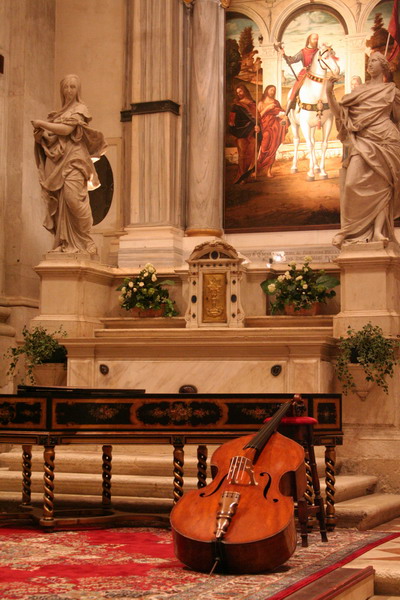
Images from a couple of nearby restaurants.
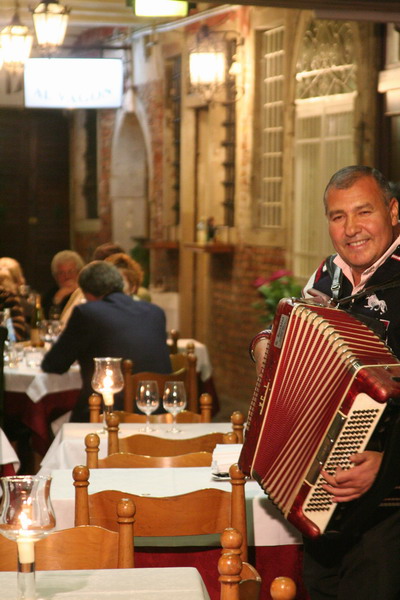
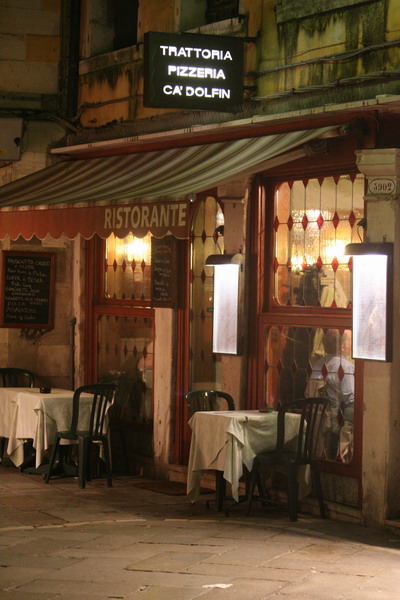
This is the view at night from the Rialto bridge. Everything becomes triply romantic in the city after dark.
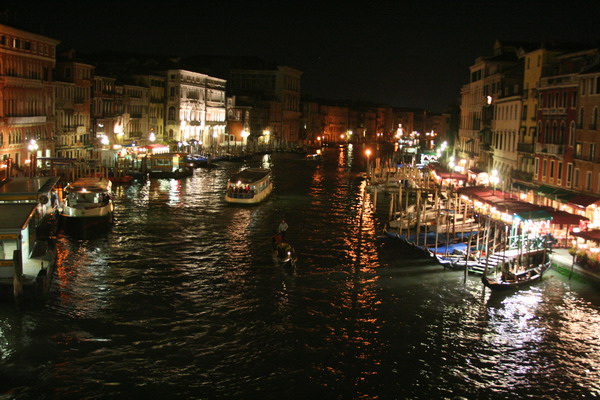
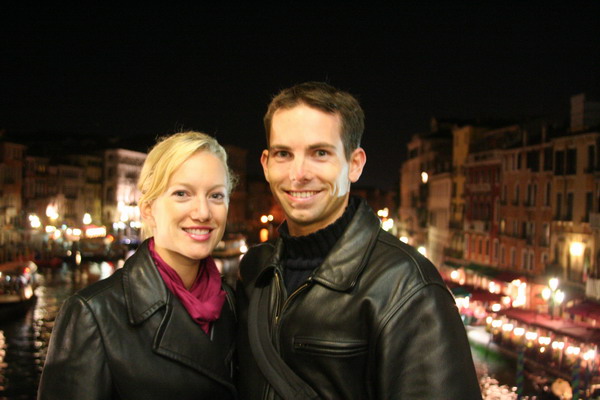
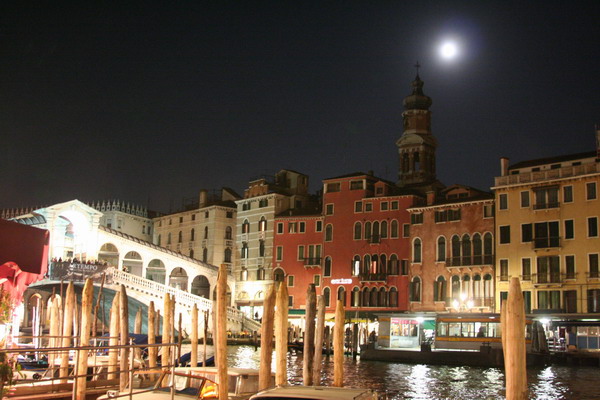
Anna didn’t have a hard time finding gelato she liked.
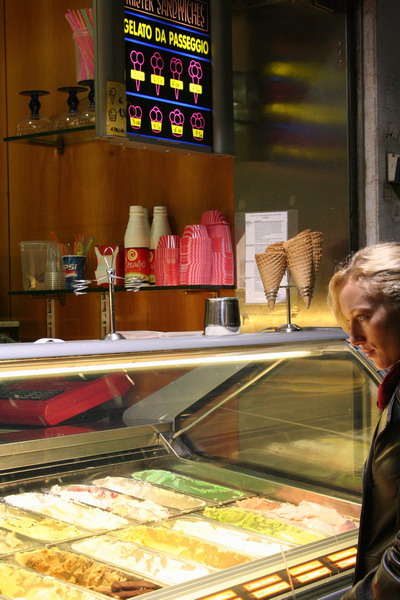
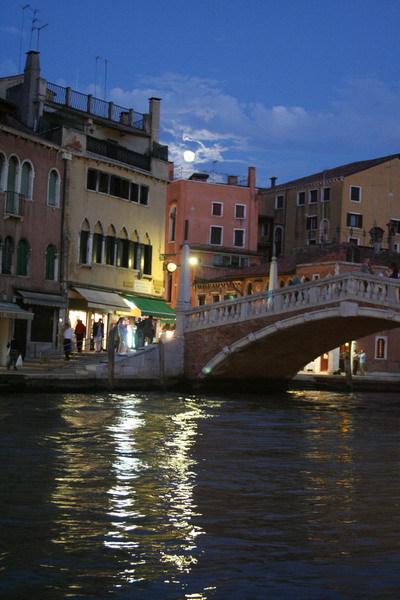
That concludes our visit to the romantic city of Venice. It was a great place to get close again.
I am finishing this post from our hotel in Paris. So, soon I will have the next installment of our romantic adventures in Europe.
Until then…
–Jim
Blondie in India- Part 2
When the rain started, it didn’t stop for the rest of the two plus weeks I was there. Rainy season in India is nothing to scoff at, there were numerous times when I couldn’t sleep at night because I was afraid that the roof would blow off! It was nonstop for about a week, and then started to go into a three day cycle. There were three days of nonstop rain, followed by a morning of sunshine, then back into the rain. As a result, there was very inconsistent power, and of course I forgot to bring a flashlight. So going outside to use the bathroom in the middle of the night was more of an ordeal than it should be. Since the rain refused to stop, our clothes also refused to dry. By the end of the last week, everyone was walking around with moldy, stinky clothes and most had just given up the attempt to clean their clothes. The great thing about rainy season is that within the two weeks that the rain started, everything started to grow like crazy and the landscape changed dramatically.
Here is a photo of people in the field across the road from the ashram picking rice. Notice how the palm tree is having a hard time staying upright. This was a mild day.
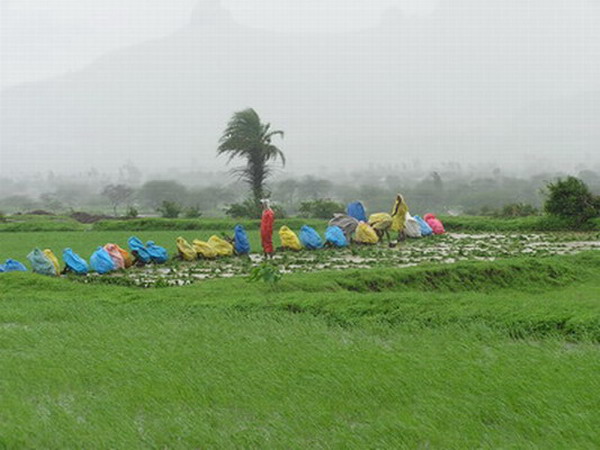
Here are some pictures of the same landscape that was dry and brown just a week prior.
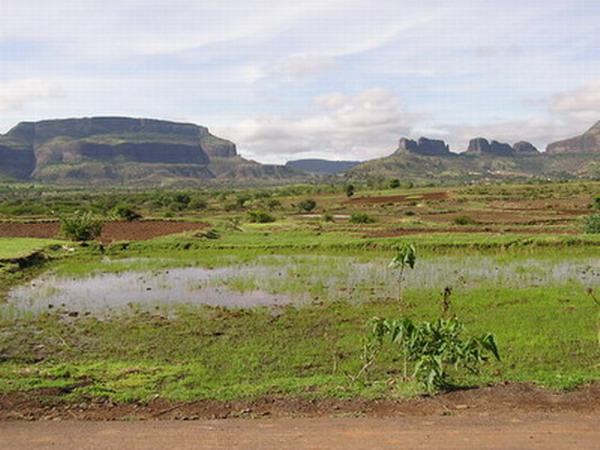
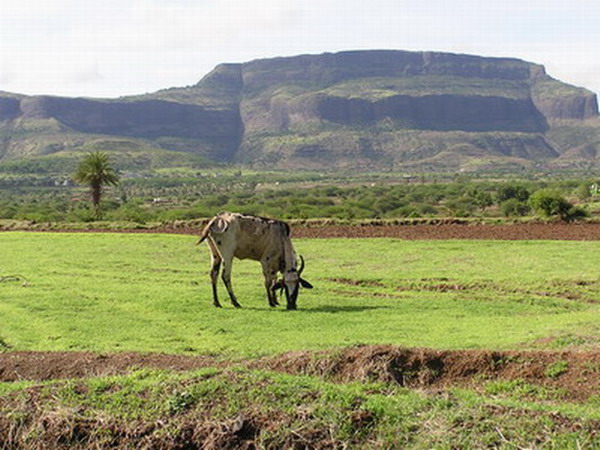
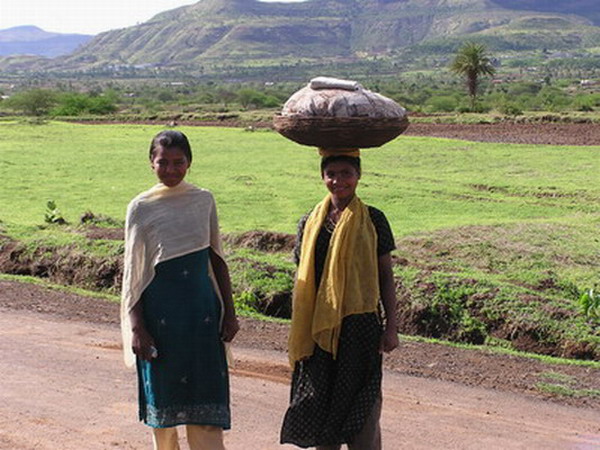
These are some women from the local village who were making use of the abundant rain water by washing their clothes in the puddles on the street.
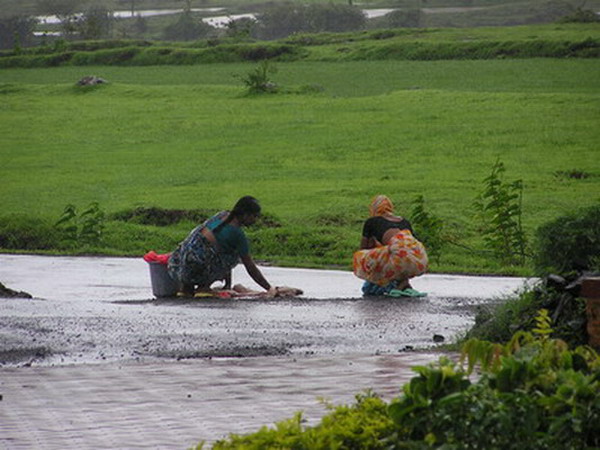
When people go through a rough situation it tends to bring them closer faster and this was the case at the ashram. Here are some of my new friends.

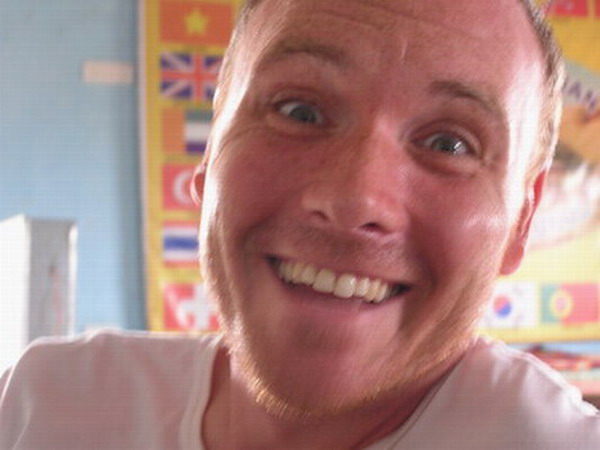
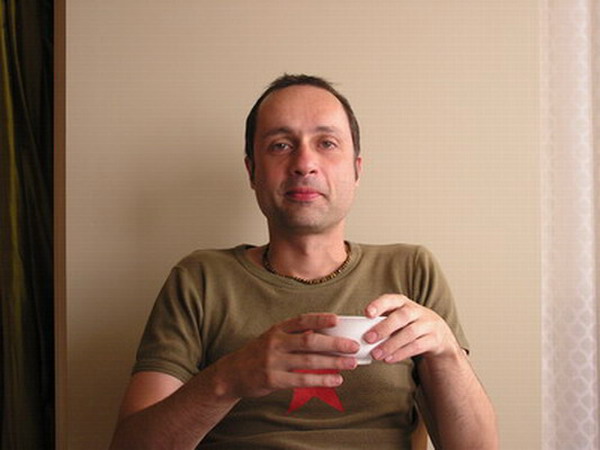
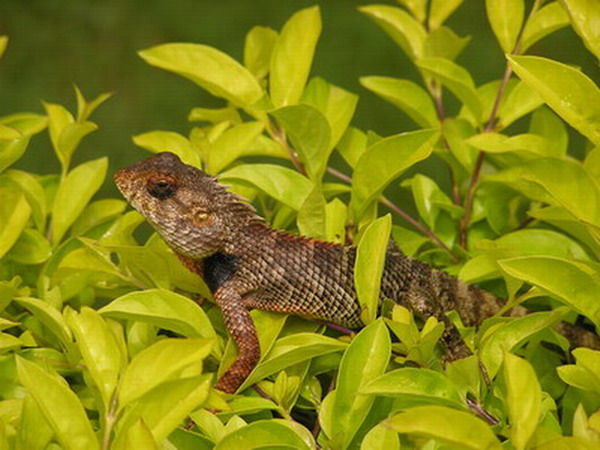
Considering the fact that there were 4 women sharing the same room for a month, I think we got along quite well. These are my awesome roommates.
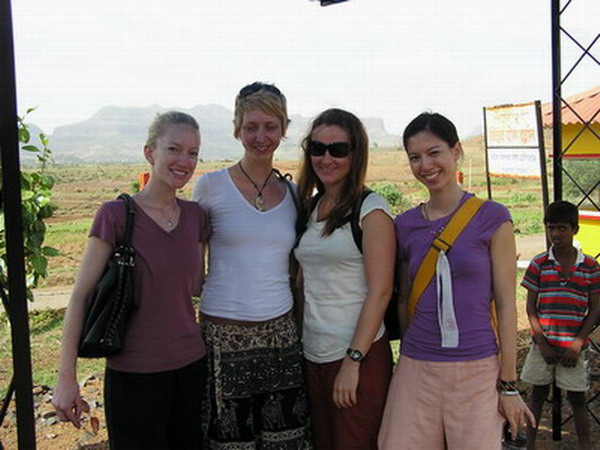
This is a view of the inside of our room.
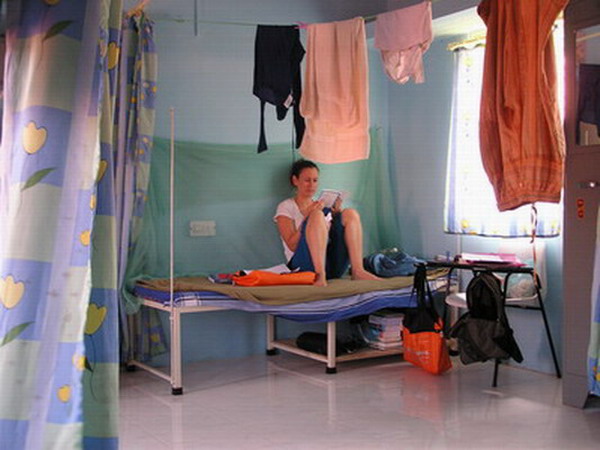
Below, you can see I took pictures of typical meals at the ashram to give you a better idea of the whole Ashram experience. The food was a sattvic diet, which is the traditional yogic diet. It is meant to not over stimulate the senses. Thus there was no garlic, onions, nor too many spices. The only real spices they seemed to use were turmeric (and lots of it), mustard seed, lots of salt, and cilantro. These few spices are great, but when used for every meal, three times a day, for an entire month, they get to be a bit much. As a matter of comparison, when I finally ate outside of the ashram (after 3 weeks of this strict diet), I ate garlic naan (garlic flat bread), as well as numerous other spices. Consequently, I felt more energetic with better mental capacity than I had in weeks. Regardless of whether it actually made a difference or not, if I never see another potato curry for the rest of my life, that will be fine with me.
Breakfast:
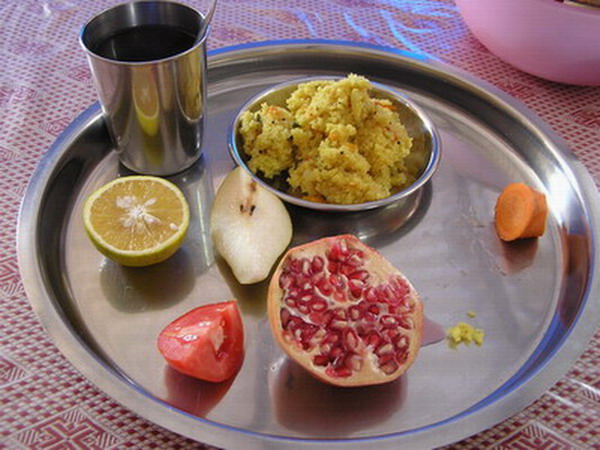
Lunch:
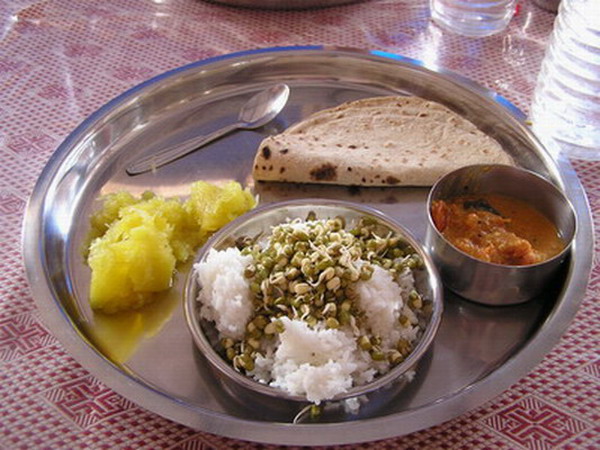
Dinner:
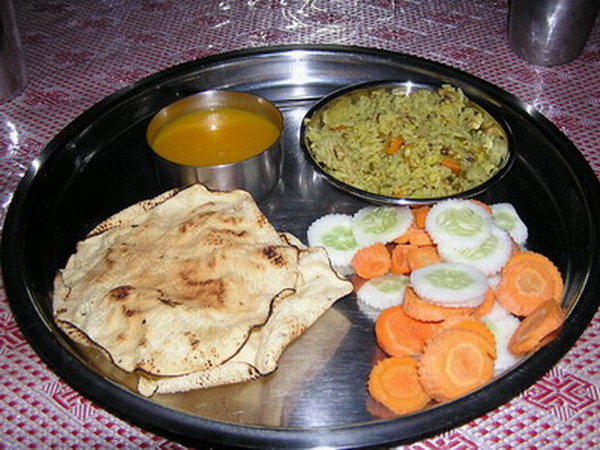
There were numerous cleansing processes that we learned while at the ashram. One is the neti pot. This is where you insert a sort of tea pot with a long spout, filled with salt water, into one nostril. The water goes through your nasal cavity, cleaning it out, and comes out on the other side. Surprisingly, we were actually graded on this process and how constant the stream of water was coming out the nostril!
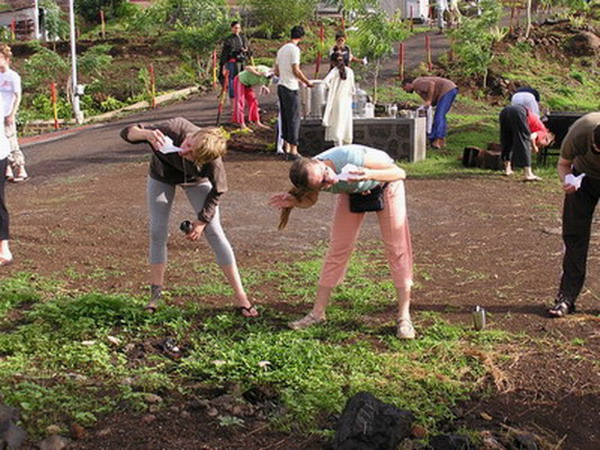
Another cleansing process involved drinking 4-6 glasses of salted warm water, and then vomiting it back up. Sounds like fun, huh? This is done to clean out the mucus that accumulates in your stomach and esophagus. It was one of the more unusual practices that they did at the ashram. I wanted to have the original yoga taught to me, right? Well, here is example of how you should be careful what you ask for. This is one of the many cleansing processes talked about in Hatha Yoga. So, I joined my fellow classmates in drinking saltwater, but only made it to 2 glasses before I couldn’t handle it anymore. This “cleansing” process was definitely an interesting experience that I will not easily forget.
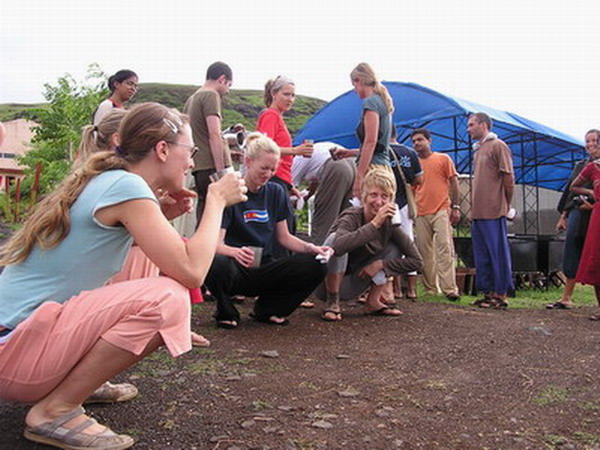
Here is my friend, Katie, trying to get the salt water back up. Sorry to any of you who have a weak stomach.
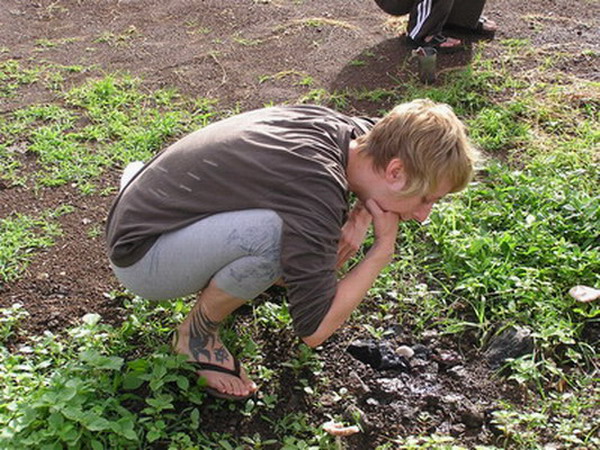
Another advanced cleansing process, which I did not do, involves sticking a tube through your nostril and then pushing it in until it comes out through your mouth. This process is demonstrated here by one of the advanced students.
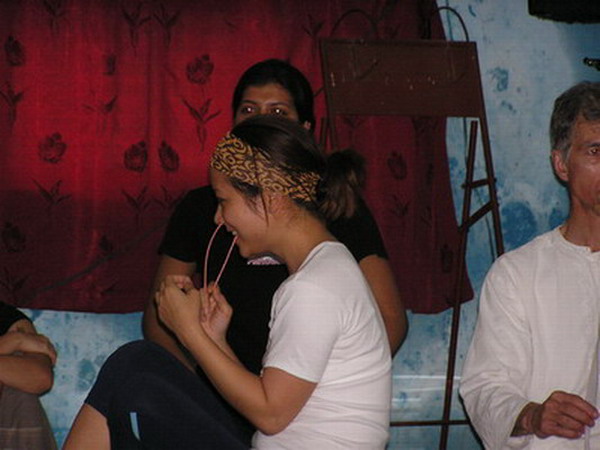
Yoga gymnasts.
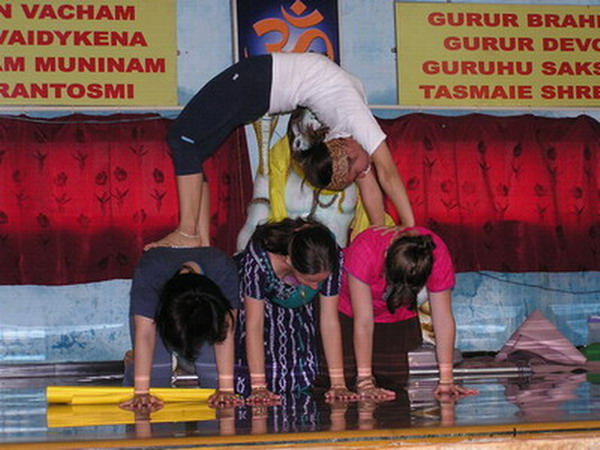
This is the guru of the ashram, Guruji. He, his wife, and son all wore the typical saffron colored robes at all times. This indicates their high status and understanding of yoga.
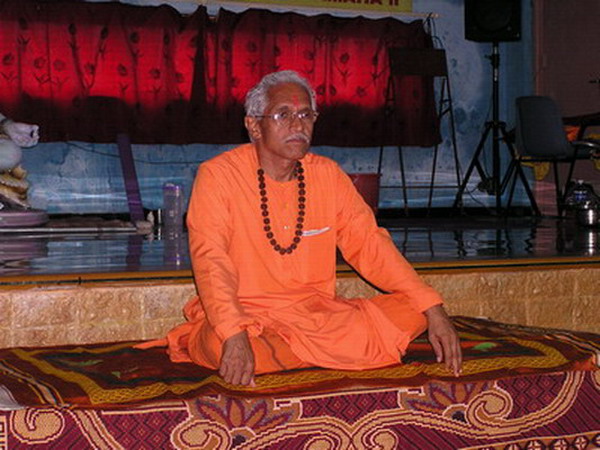
This is his wife, whom we all called Mama Guruji because we couldn’t remember her real name. She has an amazing singing voice and here she is singing the opening prayer for us.
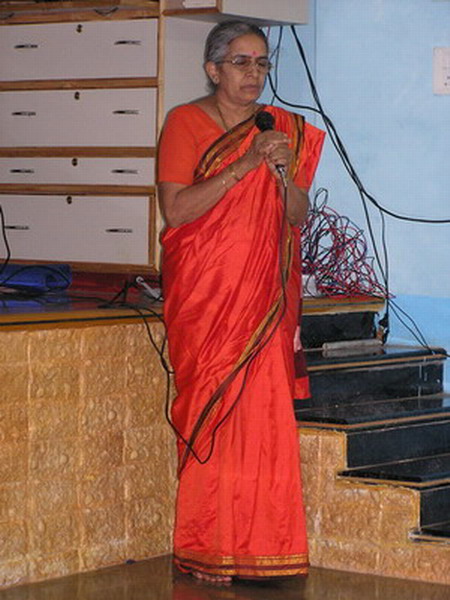
Here is Gandharji standing next to me. Strangely enough, after a month of not eating much and losing more weight than I ever imagined I would, he still makes me look big.
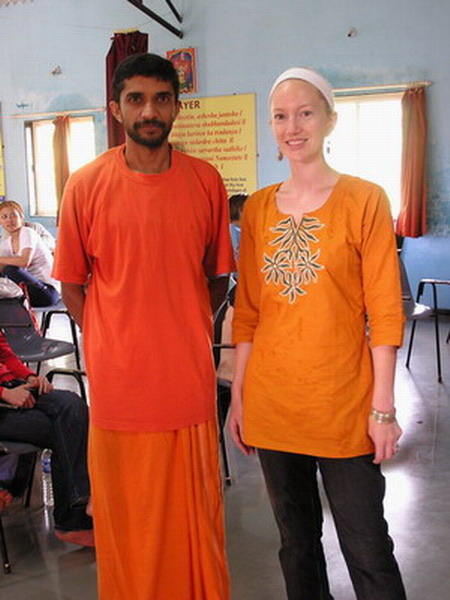
This is the person, Ananji, who ran the shop where we could by most of the items that one might need while at the ashram, soap, t-shirts, books, cookies, what have you. He was always smiling like he knew something we didn’t. I wonder what it was?
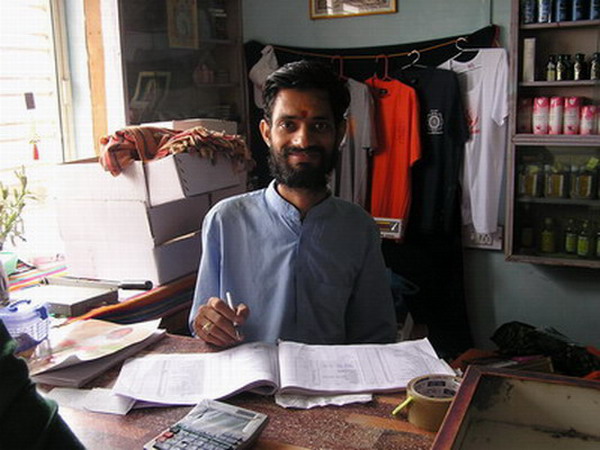
This is a photo of the statue of Lord Shiva that sat in the front of the yoga hall. Every morning we would chant for about a half hour and most of those mantras that we chanted were to Lord Shiva. It was a bit disconcerting to me that we were worshiping a figure with blue skin and looked like a transvestite, so I stopped going to these chanting sessions in the end (plus, I wasn’t looking for a new religion). Shiva is one of the three gods in the Hindu religion, along with Brahma and Vishnu. I didn’t want to be disrespectful to the Hindu religion by not attending chanting or making fun of Shiva, but come on … a blue transvestite??
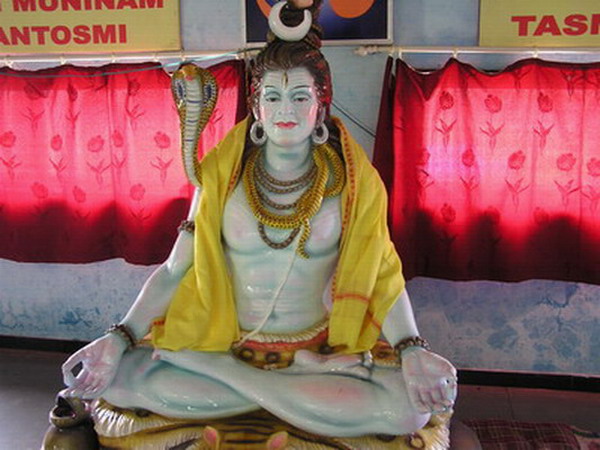
On the last weekly day off I decided to go to another town nearby, Trimbuk, which holds one of the twelve most holy temples in all of India. Unfortunately cameras are not allowed into the temple walls, nor are non-Hindu people, usually. But, this temple allowed me and my friends inside, sans cameras. I managed to get a shot of it from the outside.
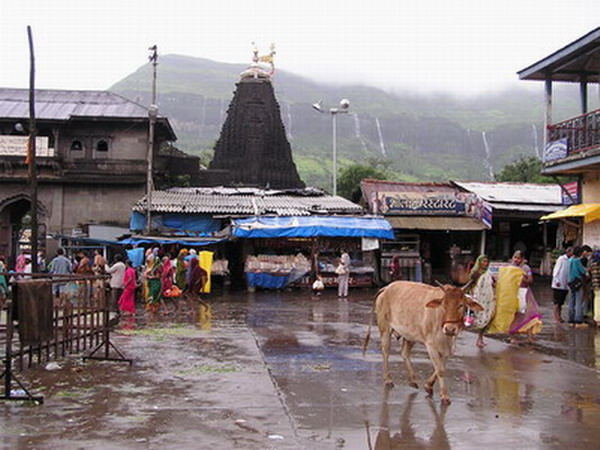
Some of the local people.
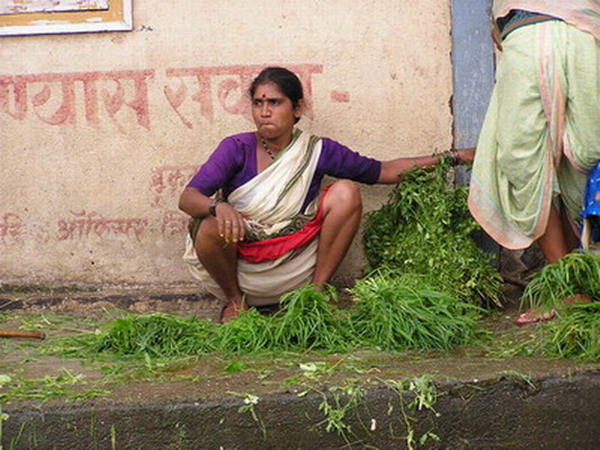
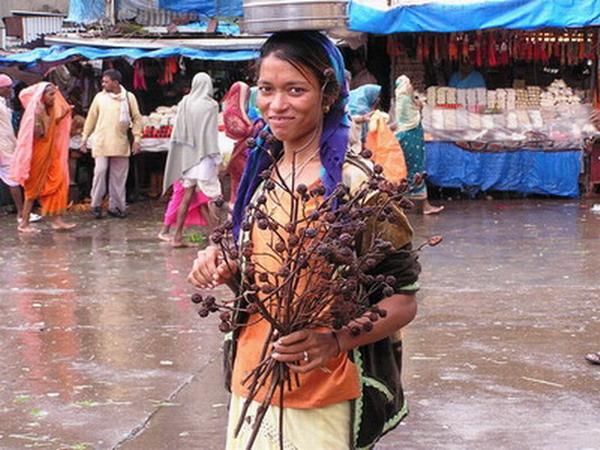
On the very last day there was a talent show held at night. Here are the announcers of the evening, Jeff, Katie, and Chris, showing off their OM chanting skills in their new “Supermantra” t-shirts.
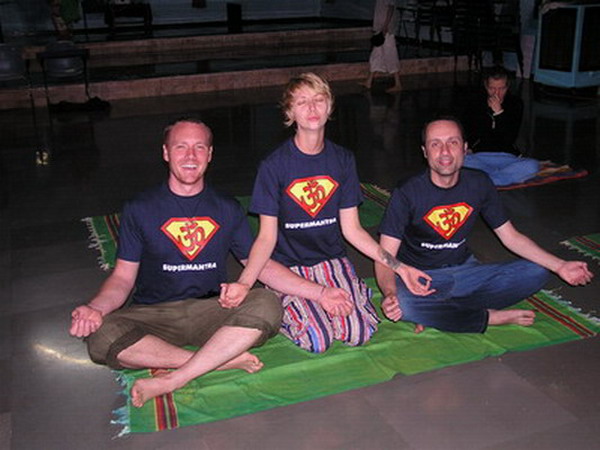
When the month was finally over, some friends and I decided to stay at the Taj Mahal Palace in Mumbai for a night, just to enjoy some opulence as a contrast to the basic living we had been doing for the past month.
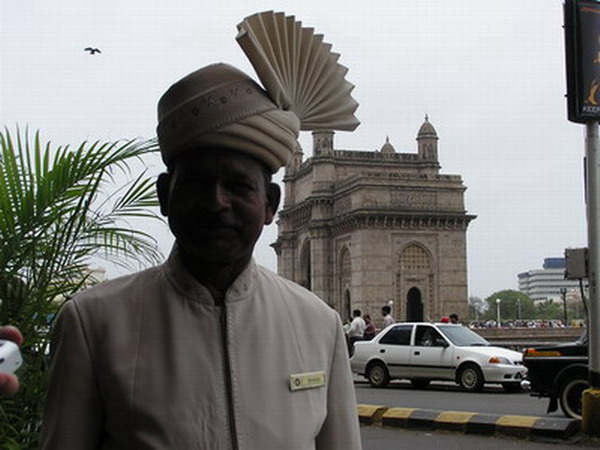
The Taj Mahal Palace is one of the nicest, if not the nicest, hotels in India. The price is insanely high, but it was worth it. This is the view of the Gateway of India taken from our hotel window. The Gateway of India is the most widely recognized landmark of Mumbai, built in 1911 to welcome King George V and Queen Mary to Mumbai. This gateway is traditionally the first thing that people see when arriving by ship via the Arabian Sea to Mumbai. It is also located in the nicest areas of Mumbai, Colaba. So a night at the Taj served to balance us out with the extreme opposite to ashram living. Then we were ready to continue normal life.

On my last day in India I decided to get a henna tattoo. This was an interesting experience and I thoroughly enjoyed getting a henna tattoo. It was much more pleasant than an ink tattoo. No pain required! Traditionally henna tattoos are applied on women’s hands for their wedding days or for a special occasion. Henna is applied like icing put on a cake. It comes in a cone, and the tip of the cone is cut off. The person applying the henna proceeds to draw on your hands with the henna icing. There are stencils available, but the person who did mine did it freestyle and was finished with both hands within a half hour. It was amazing to watch. There is so much skill and precision involved. Then I had to sit with my hands up in the air and not touch anything for at least an hour, which you can imagine was quite difficult. Amazingly, I succeeded in not smudging the henna, and this is the result:
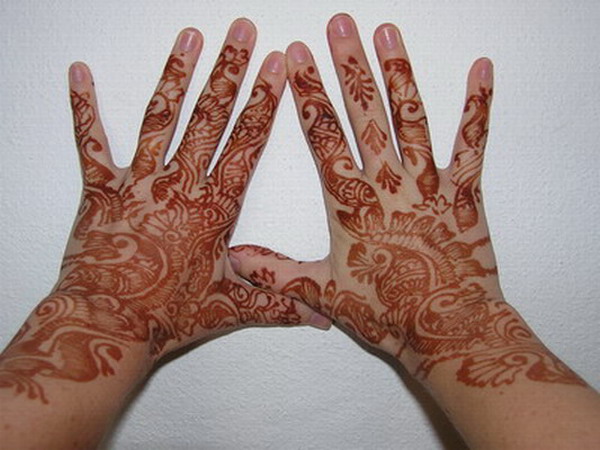
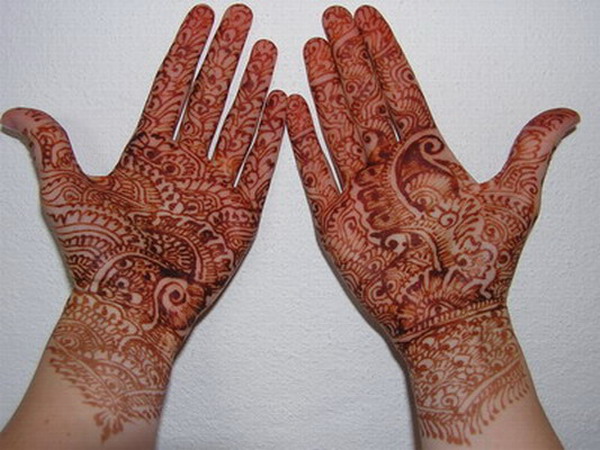
For my last photo I will leave you with a simple impression that is so very India.
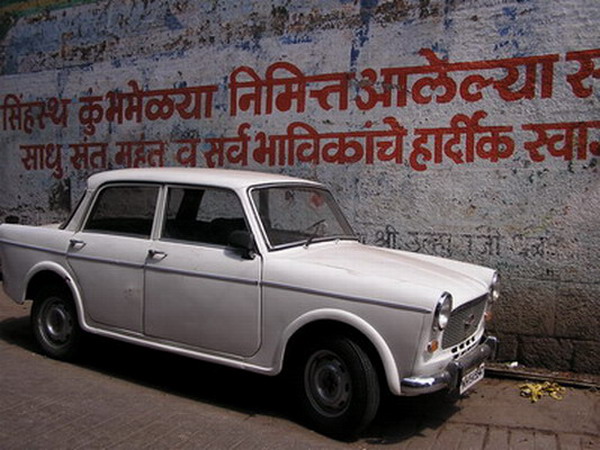
I learned so much while I was India that I hope never to forget. One such lesson is that we in the west, and America especially, live a very blessed life. We eat every day as much as we want, have shelter over our heads, have running, hot water showers, and have the ability to reach all of our goals by hard work and determination. In India, this Horatio Alger dream is not there. There is such an acceptance of social class structure (read: caste system) that there is no way out of the social class that you were born into. It is just accepted. Being a female in India is similarly difficult, and it really made me appreciate the giant steps forward that our western society has made through the sacrifices of our mothers and mothers’ mothers for our sake. I knew this information before I went to India, but to see the way that people live and the way that certain people are treated, it really hit home that I am incredibly blessed. It made me truly grateful for what I do have and made me more at peace with what I don’t have (which, admittedly, isn’t much). I have seen poverty and desperation before, but nothing compared to India. It drove home the idea that I really should be grateful for what I have right now, more than any other place I have visited before.
The ashram itself gave me a lot of new experiences that I can honestly say I will never have again. For example, the stomach cleansing process was one I hope to never repeat in my life, but now I can say I have done it. This kind of group experience, vomiting together, made us all a very cohesive yoga team and I have made some great friends that I hope I will keep in touch with. When you go through tough times with people it certainly makes you bond a lot quicker and longer. My thoughts of the ashram will forever be linked with the friends I made there to a greater extent than the actual yoga.
Interestingly, the more I learn about various religions, the more I realize at the core, all religions want to achieve the same thing. They just use different methods and terminology to get to that same “place of higher understanding.” Truly when it comes down to it, we are all so incredibly similar and the differences that keep us feeling so separated from others are all just a matter of semantics. When I realized this in India, it was a lot easier to communicate with people and feel safer in a country that before seemed so aggressive and unwelcoming. It led me to much better interactions with people. I stopped expecting misunderstanding, even though it seemed there was a vast cultural gap between us.
I will treasure my experience in India forever, and I thank you for reliving my journey with me.
Hari Om,
Anna
Blondie in India- Part 1
Ah India, where to start? Unfortunately all of my pictures from the first 5 days that I was in Mumbai by myself were lost. So I don’t have any pictorial evidence of being there, but please believe that this was the hardest time that I spent in India. I was constantly bombarded with people, mostly children, begging for 5 rupees which is approximately 10 American cents. I have never been faced with amount of poverty that I saw in Mumbai. From the minute I got off the plane, there were hoards of people around me at all times asking for money or just staring at me. There are very few western people in India to begin with, and a blond American female traveling by herself is an extreme rarity. So I was the receiver of much unwanted attention. While traveling, people would reach out to touch me as I was walking by or even in the car. I am assuming it was just to see if I was real, but it was quite unnerving at first. It took me quite a few days to get used to that level of attention from everyone.
Also quite prevalent is the idea that since I am a westerner, I must have money coming out of my ears. So every person I ran into seemed to want either baksheesh (tips or handouts) or charge about 3 times too much for the goods they were trying to sell me. As I did most of my shopping in the 5 days that I was on my own, I got quite good at bargaining with people. Although I usually ended up spending a bit more than an Indian would, both parties were usually happy with the transaction. In between shopping trips I went to a couple tourist attractions, such as Elephanta Island, which in true Indian fashion holds nothing even resembling an elephant anywhere on the island.
I learned quite a few things about Indian culture during my short time on my own. One is, if a woman makes eye contact with a man that means she must be looking for a good time. Another is that if you are a blond female, they assume you are looking for a good time whether you look at them or not. I attempted to blend in at first by wearing some Indian clothes that covered my shoulders and showed no leg, but that didn’t seem to change anything. So finally I just accepted the fact that everyone was going to stare. Then I became a lot happier with the whole situation.
When I finally was becoming more comfortable with Mumbai and all the chaos that was involved there, it was time to go to the ashram. I was glad to be starting my adventure in yoga.
Here is a picture I took from the bus on my way to the ashram. He seemed to me like the James Dean of India.
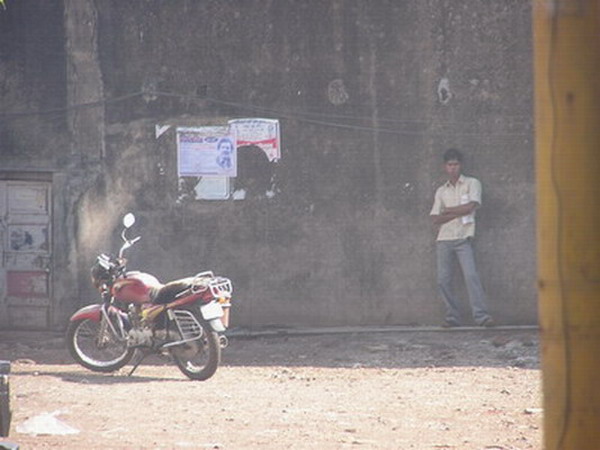
These women were filling bags of dirt by hand to transport to the other side of the road that was being built to dump in a pile. This gives manual labor a whole new meaning.
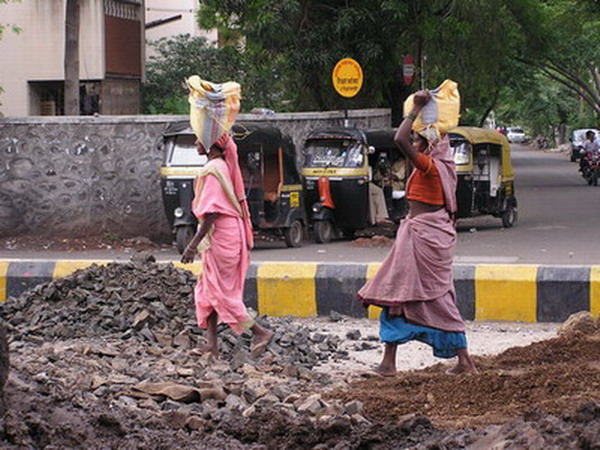
When I finally made it to the ashram after a day of travel, this “OM” sign in Sanskrit on the side of the mountain served as an excellent welcome and entrance into the world of yoga.
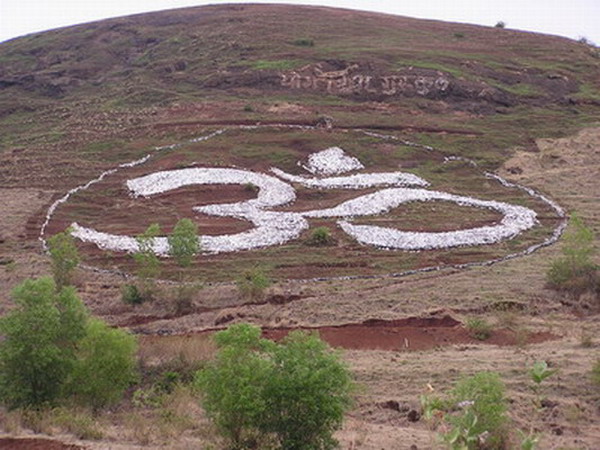
This is the entrance to the ashram.
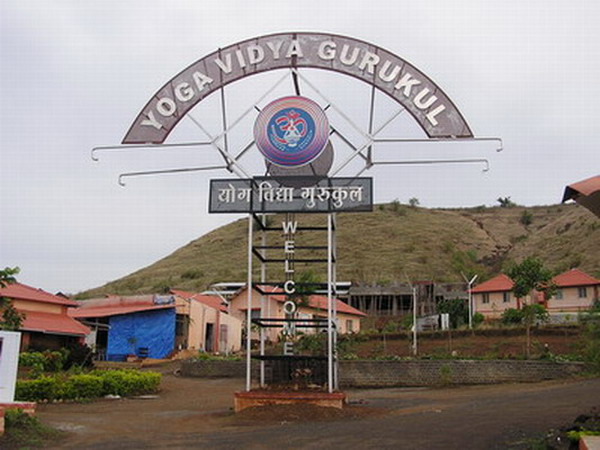
My home for the next month and my new roommate, Natalie.
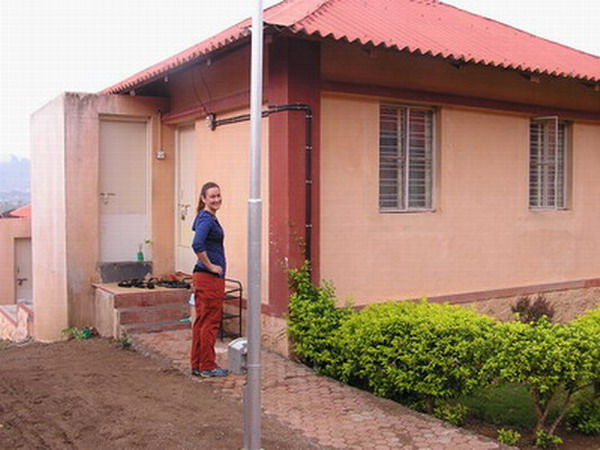
The view from the ashram before the rainy season started.
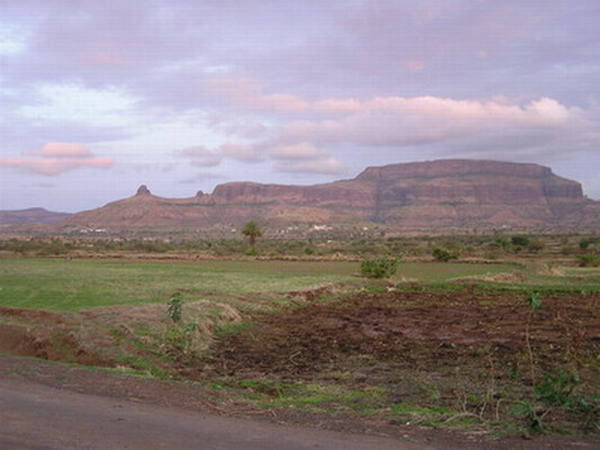
On our first day at the ashram we were given a presentation by some of the people who would be teaching us yoga. Some of them were quite reminiscent of Gumby.
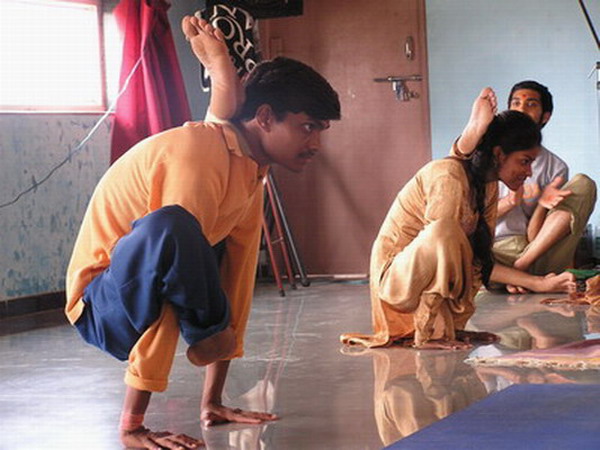
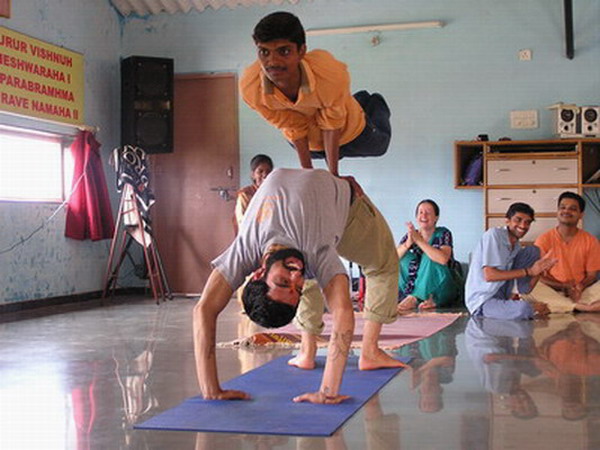
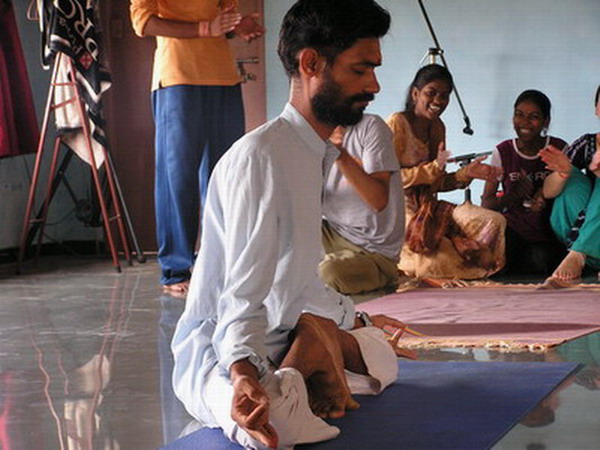
He makes it look so comfortable!
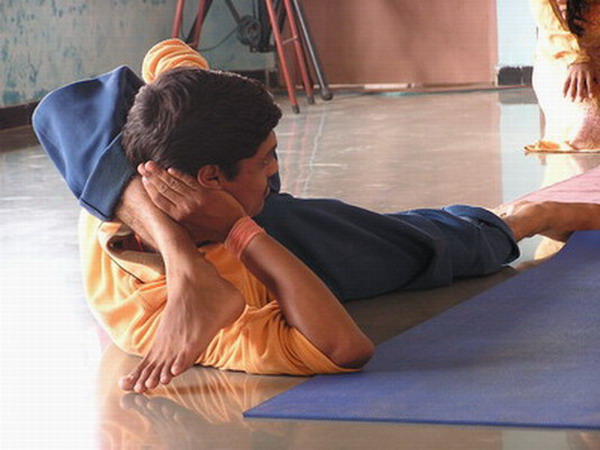
This is Hansraji, a volunteer who had just taken the teacher training course the month previous. I was a bit nervous that we would be expected to perform this asana by the end of the month. Asanas are what most westerners know as yoga. They are the different positions that you attain and hold. The other aspects of yoga which are not commonly taught are pranayama (deep breathing), karma yoga (doing good things without the expectation of reward), meditation, and chanting. All of these things are done for the common goal of attaining Samadhi, or the union of self with the universe. They are just different vehicles used to get to the same place in your understanding.
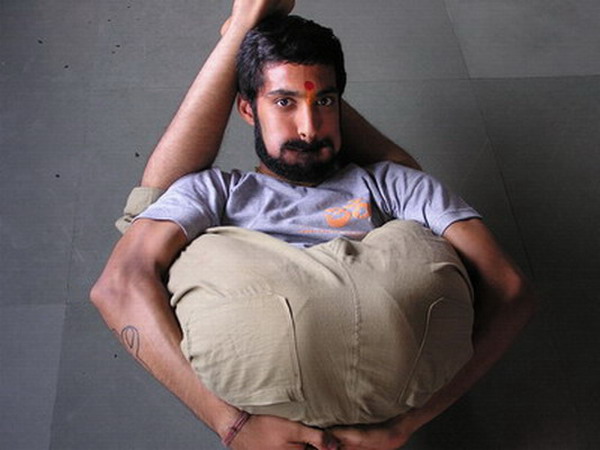
This is Gandhar, our teacher and son of the ashram guru.
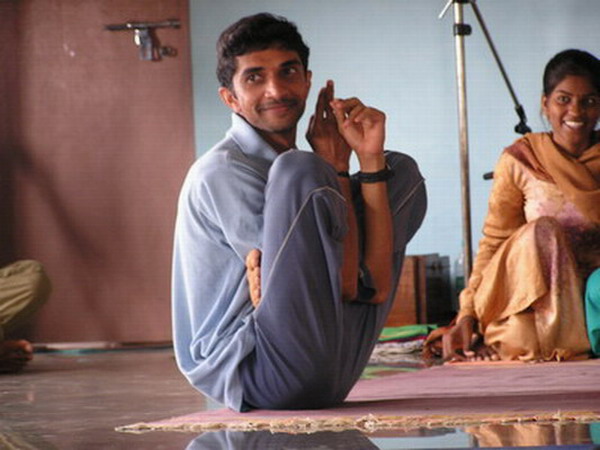
Now it was our turn: Everyone get into a pretzel!
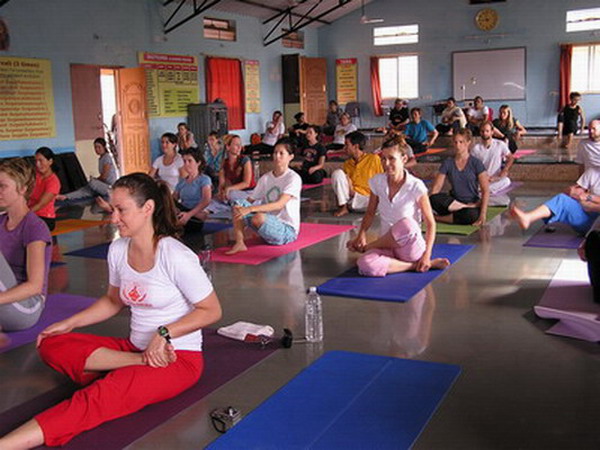
In the first week, a few others and I walked down the street to the small town that was near us. As this was a farming community, we saw plenty of cows and people trying to till their land and get it ready for the rains which were coming soon.
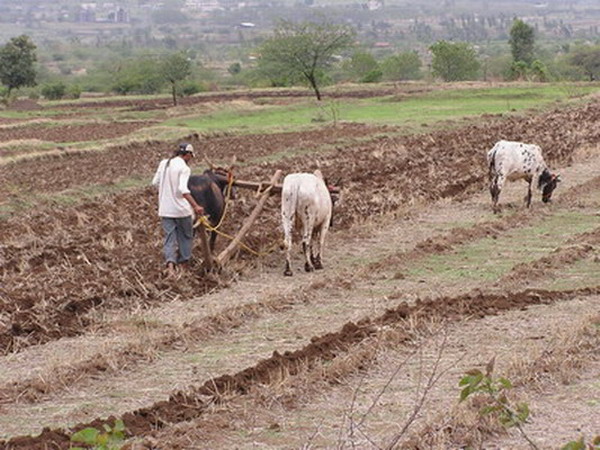
Also, when the neighborhood kids saw us coming, they ran out from their houses and started asking for photos. They do not have cameras and loved being in photos, so we gladly obliged.
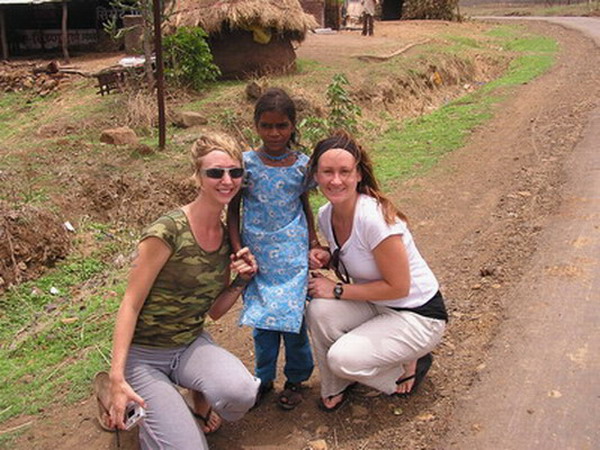
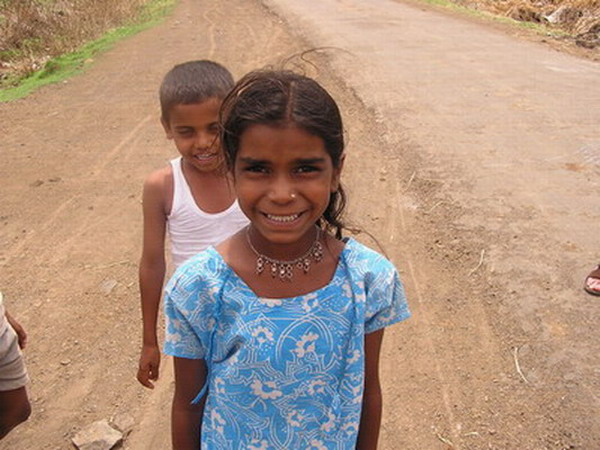
Then they wanted to take the pictures, so I nervously handed over my camera to the girl. To my surprise, she was actually a pretty good photographer.
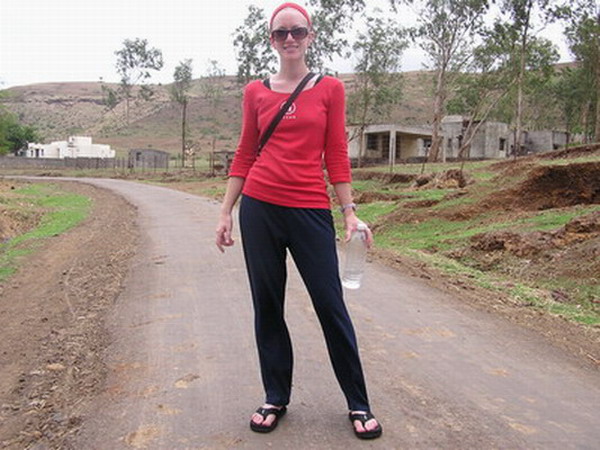
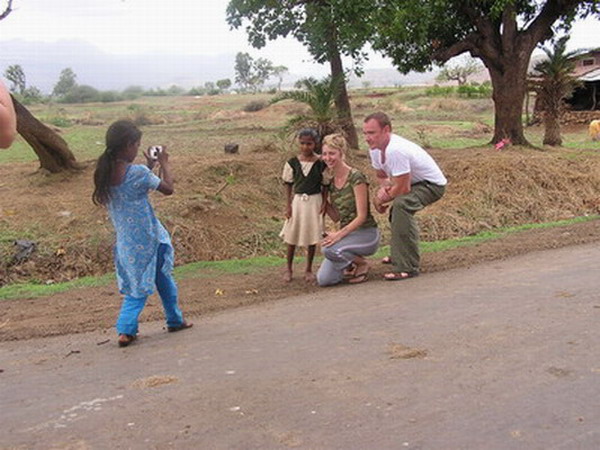
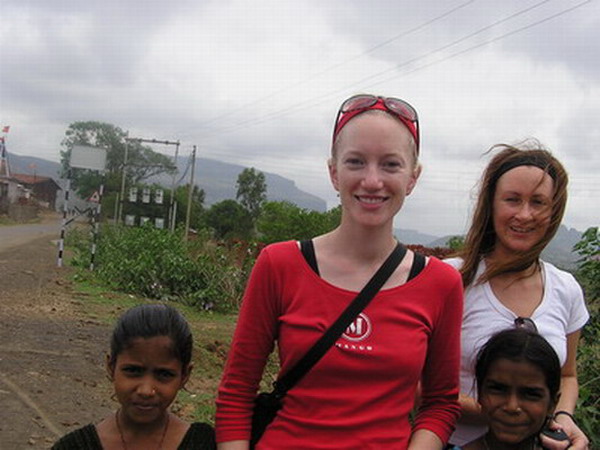
Weekly we would get one day off to go into a nearby city, Nashik, which holds about 1 million people and importantly at least one internet café. We would do a little shopping, internet surfing, and eat some forbidden food, including chocolate, meat, and coffee or tea.
This is what I encountered at the markets.
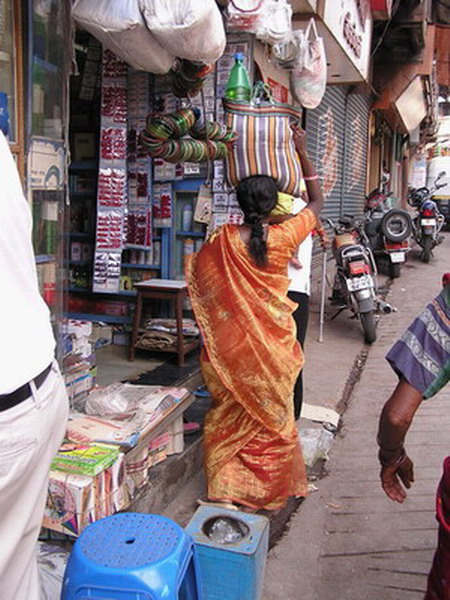
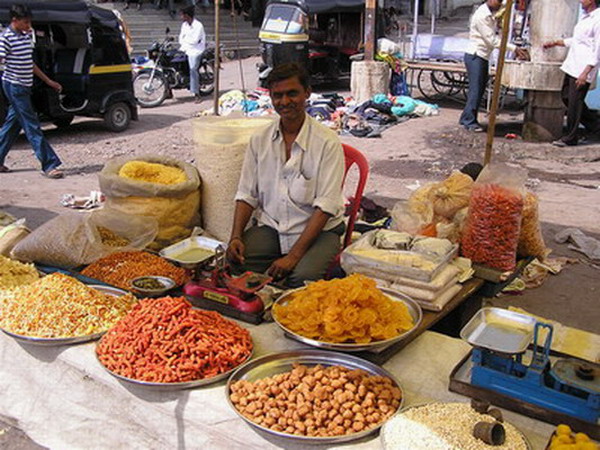
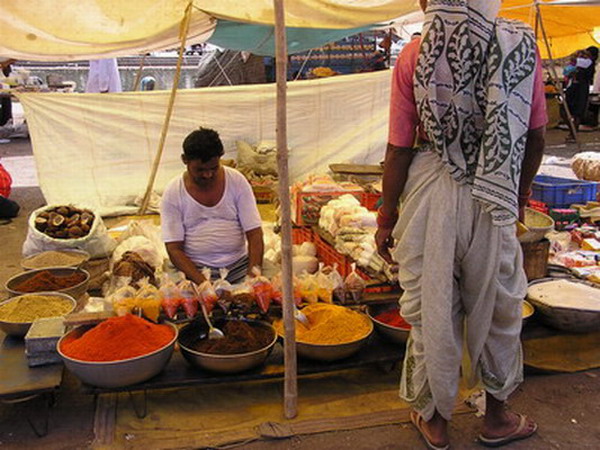
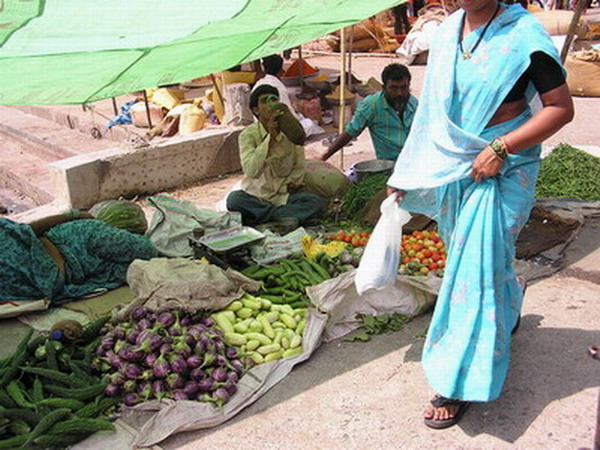
Here is one of the guys I was hanging out with for the day, Jeff. He was trying to get a little sunscreen protection, since the sun was so intense. Of course, all the locals were staring at us like we were aliens, slathering some sort of weird salve over our pasty-white bodies. It is strange that most of the skin care products sold in India are for skin whitening, while pasty-white Westerners are always trying to get more tan. Life is ironic.
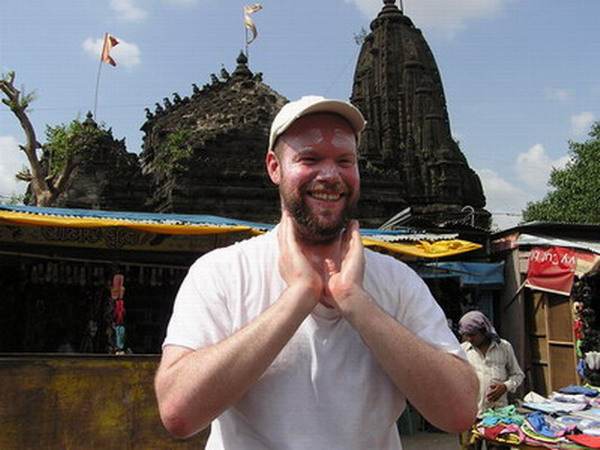
This vendor was selling fish straight out of the water next to him, which he had just cut the heads off of. There were flies and blood and guts everywhere. You can just imagine how pleasant it smelled.
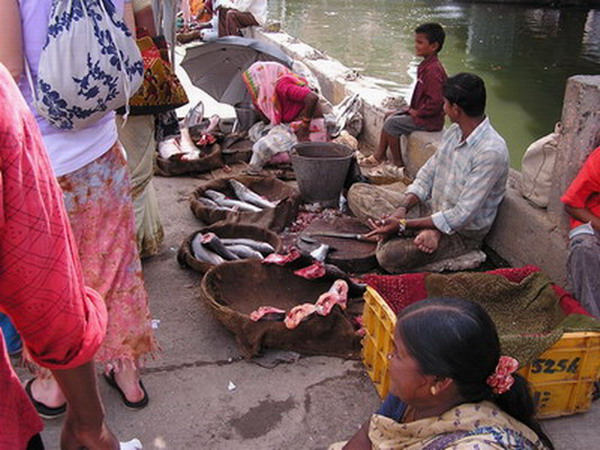
This is a great example of how the cows in India basically run the place. They share the same food, water, and land rights as humans. They are free to wander wherever they please. They have no owners, and are revered as holy animals. People often will feed them scraps for good karma. The cars in India will not stop for bikes, other cars, pedestrians, or other animals, but they will come to a dead stop for a cow. It is very interesting to see the difference in treatment from the rest of the world, which only sees cows as hamburgers waiting to be eaten.

This girl is drinking the same water that she just washed her clothes in, which the cows live next to, people throw their trash in, and everyone uses as a toilet.
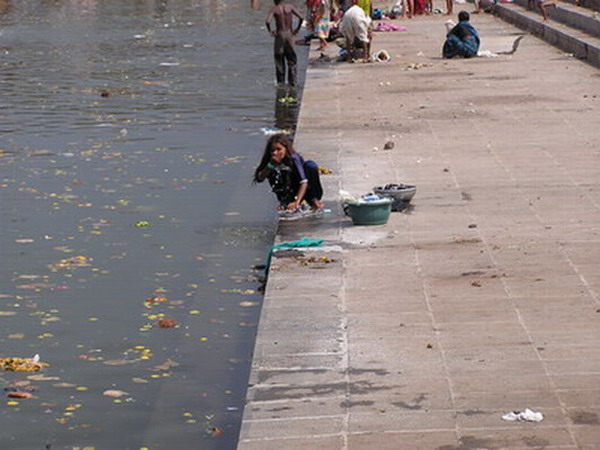
My travel companions for the day.
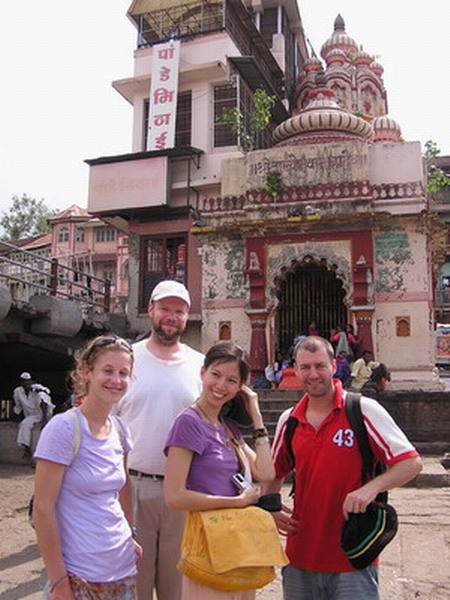
One of the many statues of Ganesha, the remover of obstacles.

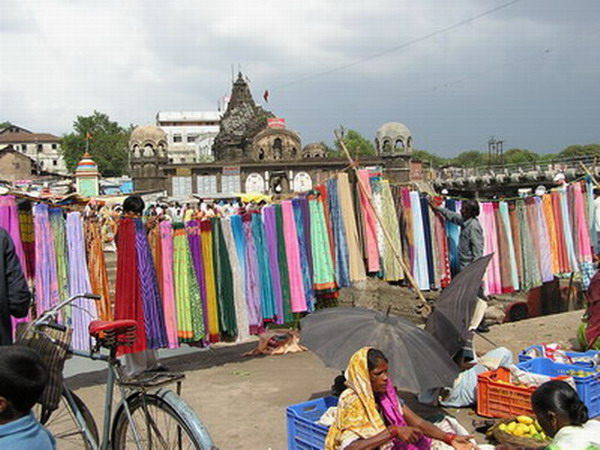
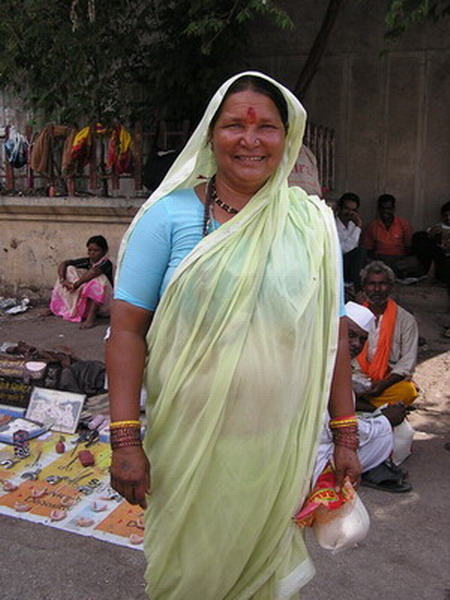
This end of the first couple weeks in India. By this time I was getting quite used to taking a shower out of a bucket of cold water, observing silence during meals, and doing yoga for 4 hours a day. After the second week at the ashram the rains started. It seemed that the heavens opened up and started throwing huge buckets of water down to earth with gusty winds added in just for fun. You will see the landscape change before your eyes in the next post.
Hari Om,
Anna
The Black Forest
As the final leg of our adventure, we decided that a little relaxation was in order.
So, we drove north, through the fairy tale land of Germany’s Black Forest. This forest is known for Cuckoo clocks, ham, grandfather clocks and is the setting for many of the Brothers Grimm fairy tales.
As we drove (and got out to hike around a couple times), we thought for sure we would see Hansel and Gretel crossing the road. Perhaps Rumpelstiltskin would be sitting next to the large tree, just over there… but alas, it was not to be. We didn’t meet any of those characters, merely an enchanted forest.
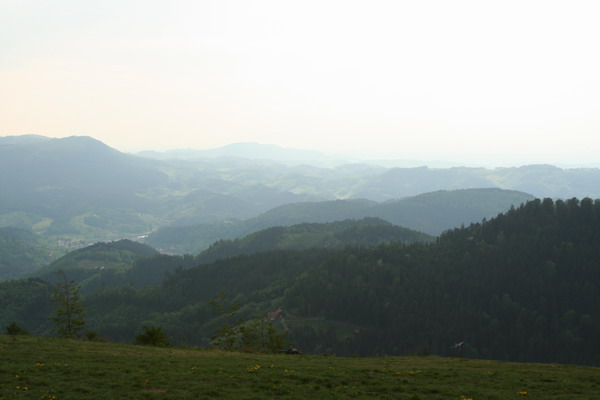
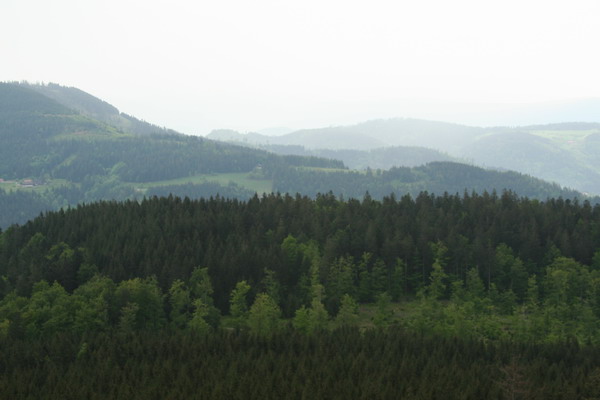
We also stopped by this small lake called Mummelsee. Legend has it that there is an evil sea king who lives in this deep lake. However, it’s only 17 meters (55 feet) deep and we didn’t see anything remotely evil, except perhaps the large parking lot that holds buses containing streams of tourists during the high season.
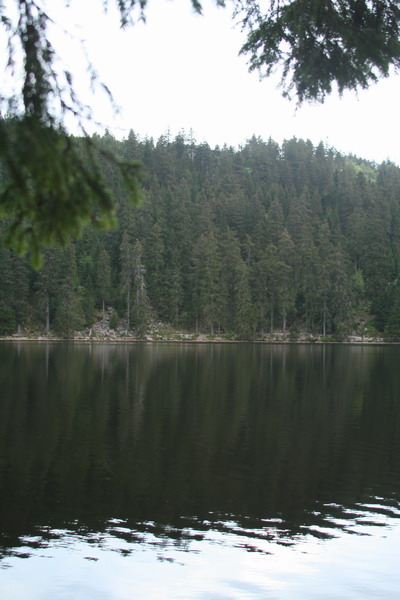
Although Mürren was very low-key, there are few places to relax better than a stay in the German city of Baden-Baden. As I type this, I am in a large square, using ubiquitous wi-fi to access the site. There are people all over, cafes serving coffee and food and a fountain of mineral water bubbling over rocks. It’s that mineral water that we came to enjoy. This city has been known as a bath town since Roman times. There are naturally heated springs flowing underground and two large spas have tapped into them.
Purportedly, former President Clinton said “Baden-Baden is so nice,
that you have to name it twice” after he and Hillary visited. And, while we wouldn’t rely on water to cure any ailments, Mark Twain was so enamored after his time here, he said, “I firmly believe I left my rheumatism in Baden Baden. The town is welcome to it. I would have preferred to leave something catching, but it was not in my power.”
We began our visit here with a stroll along the Lichtentaler Allee and popped into this rose garden. While it’s a little early still for the roses, it’s still pretty.
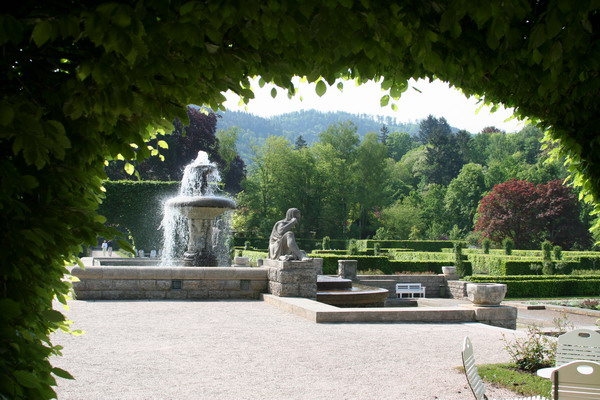
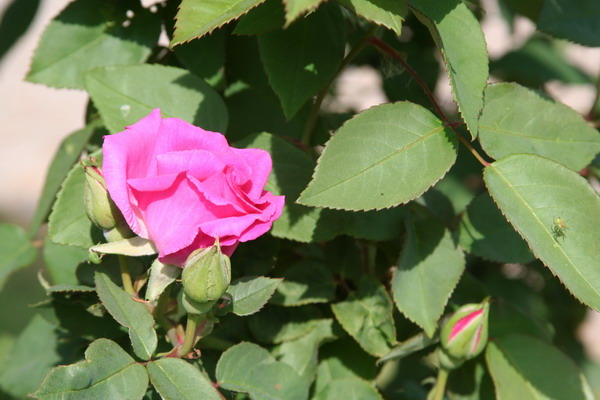
Farther down the Lichtentaler Allee, we found more flowers…
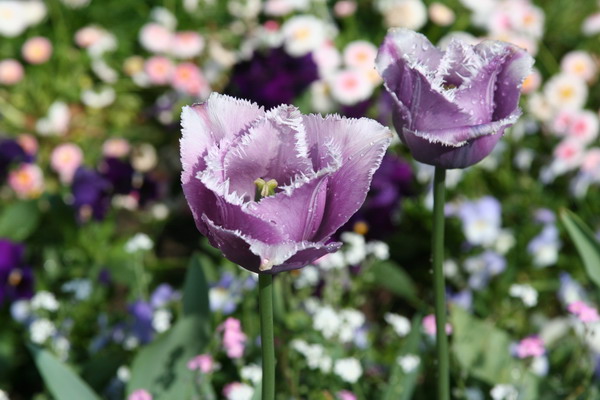
And some aquatic friends.
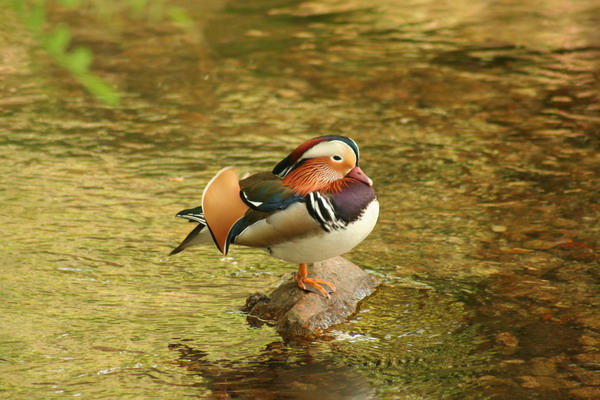
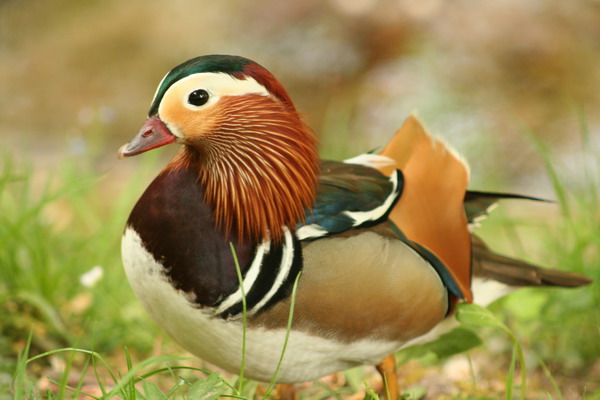
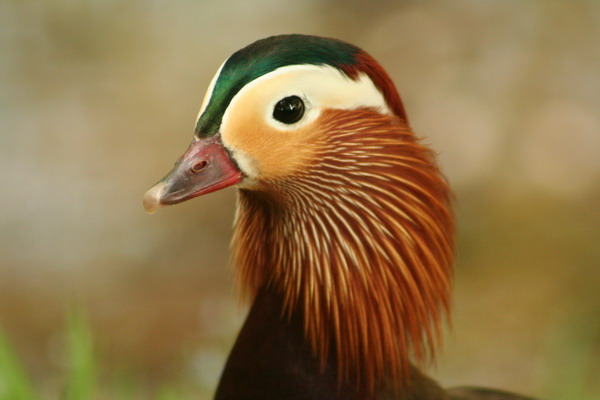
Now, back to the baths. Although I don’t have any images to share with you all, we did go to both of the major baths, the Friedrichsbad Roman-Irish Bath and the Caracalla Therme Baths. Both are supplied by naturally heated underground mineral water. They were very different, but both were relaxing. Our favorite was the Friedrichsbad Roman bath, which takes bathers on a sixteen stage journey of cleanliness and relaxation in an elegantly decorated building:
1. warm water shower
2. warm air bath 54 C (129 F) (also known as a sauna)
3. hot air bath 68 C (154 F)
4. shower again
5. soap and brush massage (if you pay the extra charge, which we did)
6. shower … again
7. thermal steam bath 45C (113 F)
8. thermal steam bath 48C (118 F)
9. thermal full bath 36C (97 F)
10. thermal whirl pool bath
11. thermal kino-therapeutic bath (read: lots o’ bubbles)
12. shower one last time
13. cold water immersion bath 18 C (64 F) and let me tell you, this one was cold, but surprisingly very refreshing!
14 dry off with a warm towel, which feels divine after the cold water
15 application of moisturizing cream (to reverse the raisin process)
16. rest area, where for 30 minutes you are bundled up cocoon-like in blankets (and most people doze off for a while).
After that experience, we wandered the town center on a cloud. It was a great bathing experience. This morning, we also sampled the mineral waters in Caracalla. It was more of a recreational facility with a number of baths. However, there was no focus on the relaxation. The best part for us was the variety of indoor and outdoor pools. It even had a high speed lazy river, that was like floating on a giant bottle of mineral water.
So, after our relaxing stay in the Black Forest, we returned home. Unfortunately, this will have to be our last trip together for a while. I am headed out to Iraq next week for about 6 months. I don’t know if I will continue to post, but either Anna will post her continued travels, or if nothing else, this winter, we will have more joint trips to share with you all.
So, until then…
–Jim
Switzerland Part 2 — Mürren
After our adventures in the Interlaken Valley, we moved our base camp further up the mountain to the village of Mürren.
This magnificent little village is only accessible by hiking trail and train. Since we had a bit of luggage (including the computer I’m typing on), we opted for the easier, but still picturesque train.
The period after Easter until mid-May is in between the winter and summer seasons. So, most shops (and people) are closed/gone on holiday. Fortunately, in early May, some places are opened back up. Such was the case for the B&B where we stayed. The owner of this lovely place, Denise, opened a day early. It was the perfect location and if you decide to trek to Mürren, we highly recommend the Chalet Fontana.
Since there are no cars in the town (except a couple work trucks that seemed to be everywhere at once!), hiking was the plan for our time there.
Mürren is on the east side of the Lauterbrunnen Valley and offers a great view of the Eiger, Mönch and Jungfrau mountains on the other side of the valley. Although this is a resort town, we virtually had the place to ourselves. The hiking trails were very easy to navigate and gave views that are second to none. As you can see here, at 1,650 meters (or 5,400 feet), it is often already above the clouds.
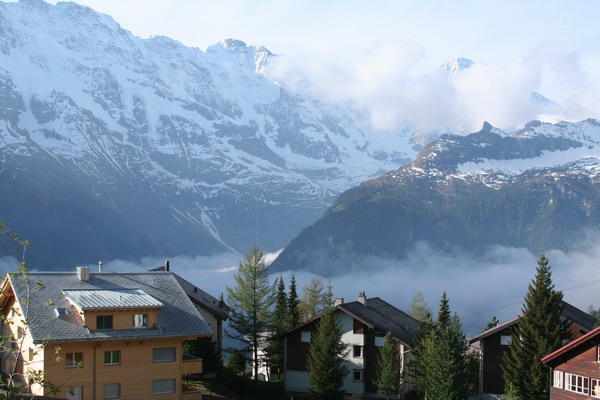
Here’s a perspective of Mürren as we emerged from the trees.
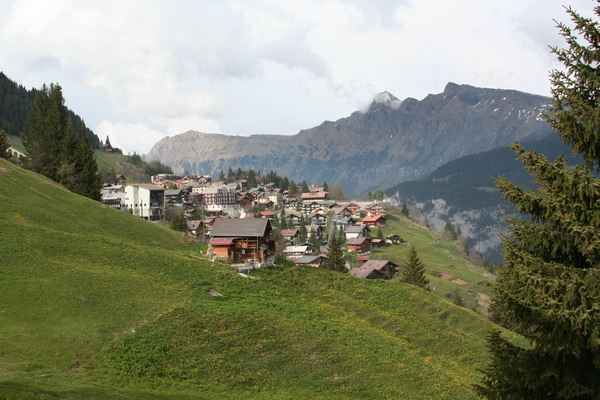
Unfortunately, there wasn’t an abundance of wild fauna, but there were quite a few domestic and relatively tame ones for our viewing pleasure.
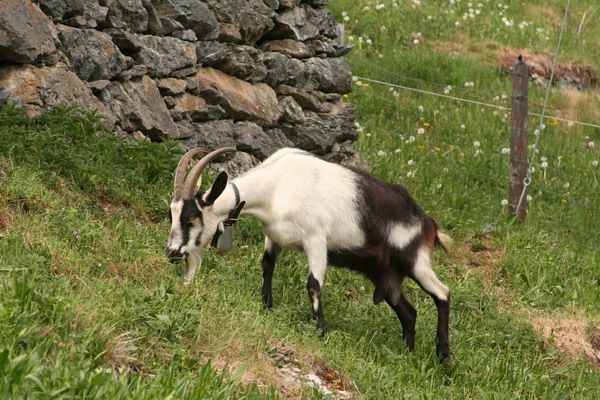
Here we are on another hike. This is one of those times I wished I brought a tri-pod with (or that there were other people on the trail). So, I used a small pile of rocks instead. Anna makes a nice blond pine tree, don’t you think?
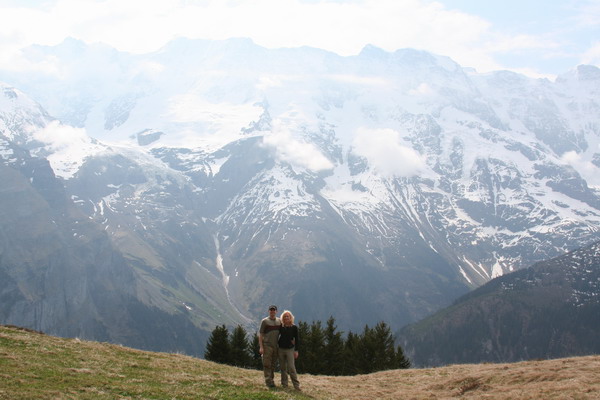
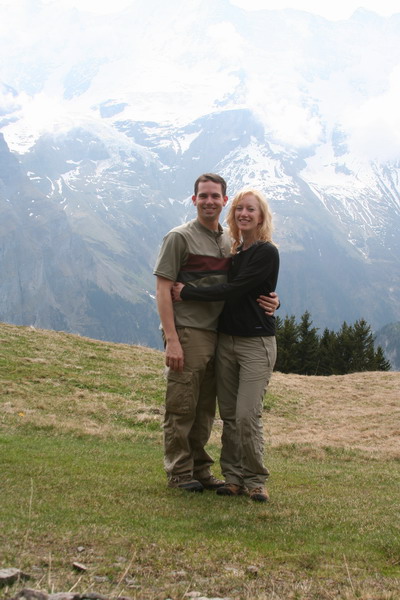
Here’s the view back down to Mürren.
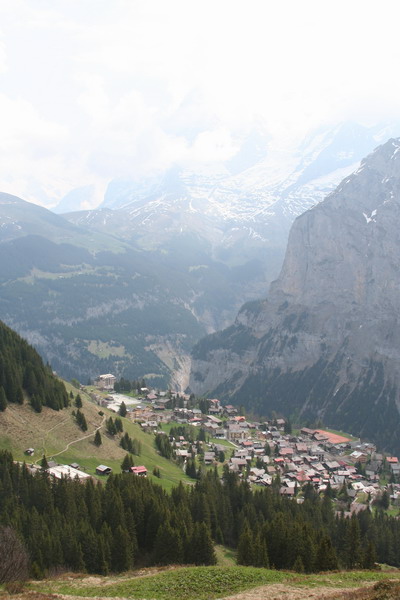
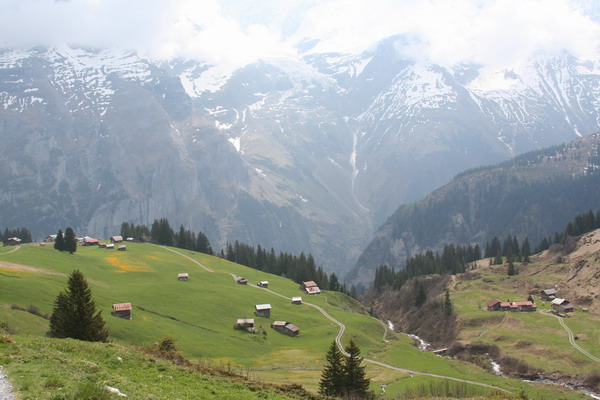
The mountain wild flowers were very pretty too.
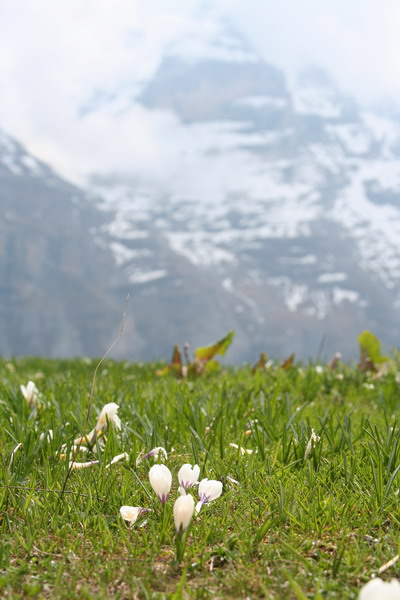
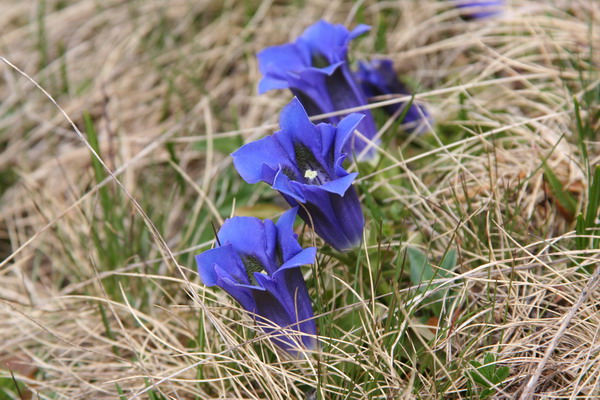
The plan for this hike was to go all the way up to the gondola station, Birg (2,677 meters or 8,800 feet), then ride that up to the peak of the Schilthorn (2,970 meters or 9,750 feet).
However, for those who have accompanied us on hikes in other locations you know that I can be a little zealous in my hiking goals… This time though, Anna talked some sense into me. The clouds covered Birg and she said she saw lightning. While I didn’t see the lightning myself, I trusted her judgment and reluctantly acquiesced, so we headed back down the mountain.
Anna wanted this picture as proof that it was indeed bad weather…
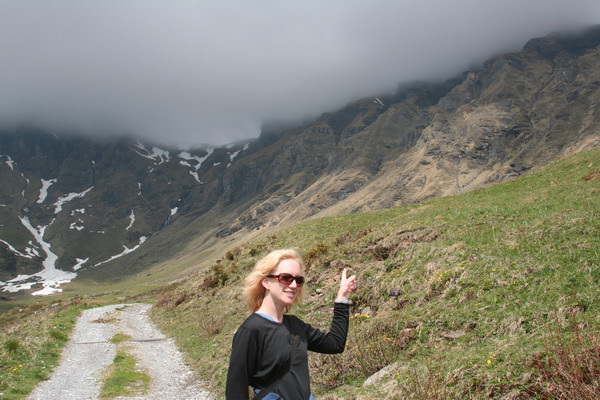
The next day, it had cleared up sufficiently to actually see Birg and the Schilthorn Peak. Instead of retracing our hike to re-attempt the peak, we opted for the easier gondola. Again, since it was early season, the ticket prices were reduced (although still expensive).

On the peak there is a revolving restaurant called the Piz Gloria. It was completed in 1968 and it’s claim to fame is that before it opened to the public, it was used in the James Bond film, “On Her Majesty’s Secret Service” in 1969. For those who have actually seen the film (neither Anna nor I have), it was the one where George Lazenby played 007 (after Sean Connery and before Roger Moore). The view, although partly obscured by the haze and clouds was still beautiful.
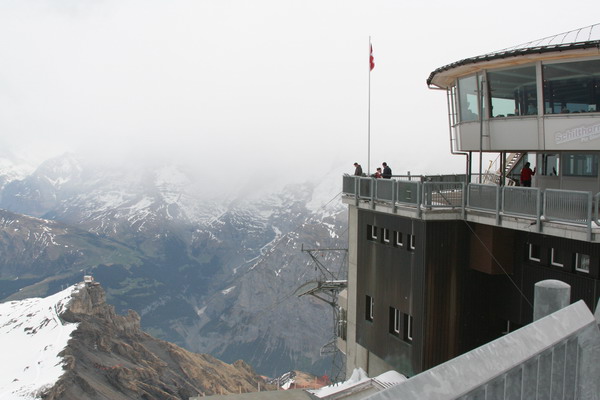
Here is the view looking back down at Birg. You can see there was a bit of snow on the trail. As it has been in Germany, this spring has been exceptionally warm. Denise told us she skied down from here just two weeks before. Now, there’s hardly any snow left. Perhaps next time we come back, we’ll come to ski (and hike).
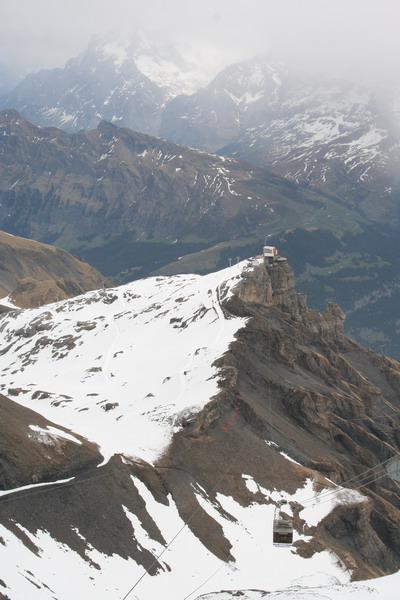
Yet another view of Mürren. I couldn’t help myself, it was just too cute.
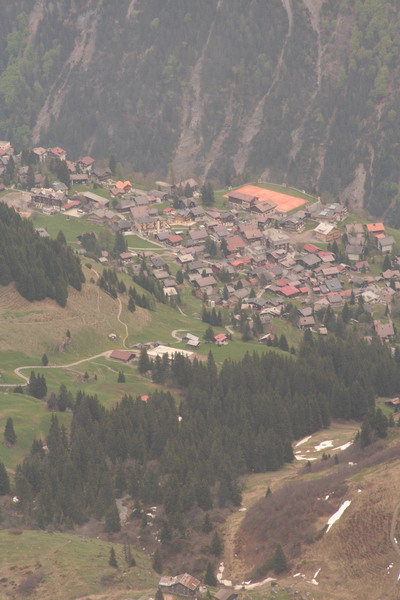
Here are a few images from yet another hike. This time down past the smaller (even more remote) village of Gimmelwald. It has been saved from further development by its designation as inside an avalanche zone.
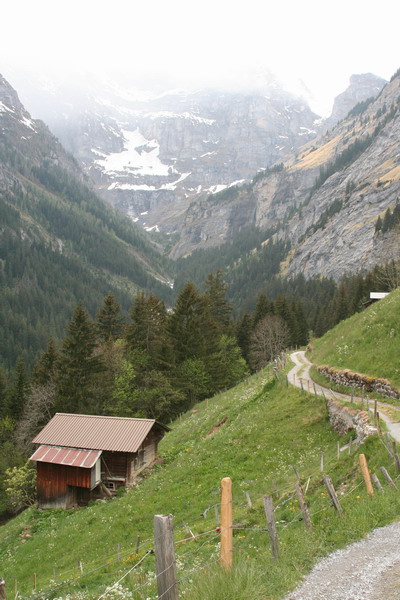
There were pretty wild flowers here too.
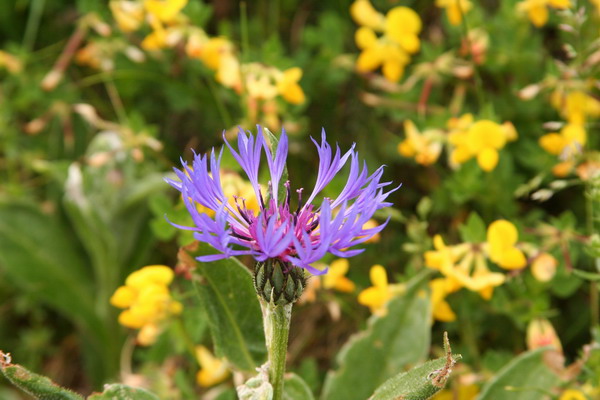
This waterfall was Anna’s favorite.
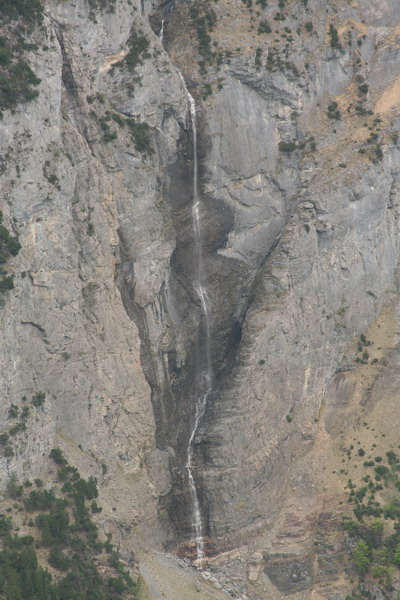
Trümmelbach Falls was my favorite, but this one was my second favorite.
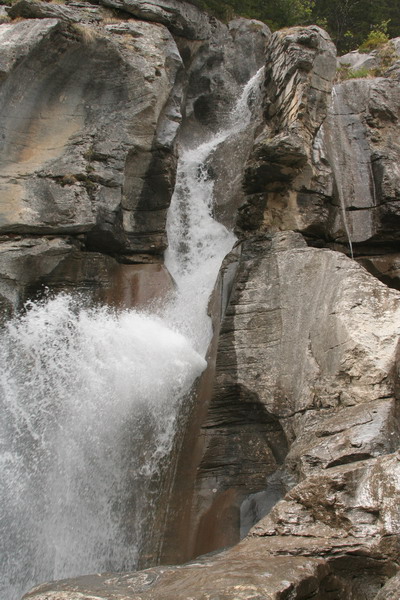
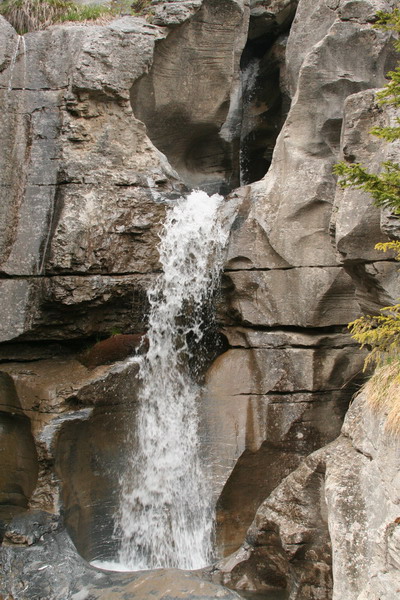
Swiss architecture all over the country was beautiful, but in the mountains, the combination of synthetic and natural was amazing.
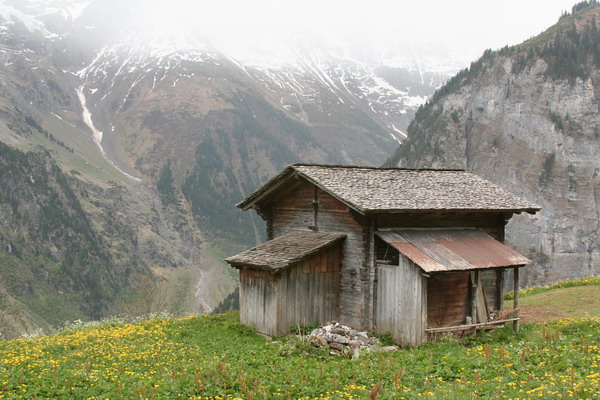
The next morning, we packed up our bags and headed back down on the train. We really enjoyed our time back in the mountains. It was hard to leave, but we are excited that the Alps are only a (relatively) short car-ride away.
Up next is a bit of relaxation in the bath town of Baden-Baden on the edge of the German Black Forest.
–Jim
Switzerland — Interlaken adventures
The past few days, Anna and I have enjoyed an adventurous trip to Switzerland. We picked the city of Interlaken for the magnificent landscape and the variety of adventure sports it offered. The first day, we got acquainted with the city.
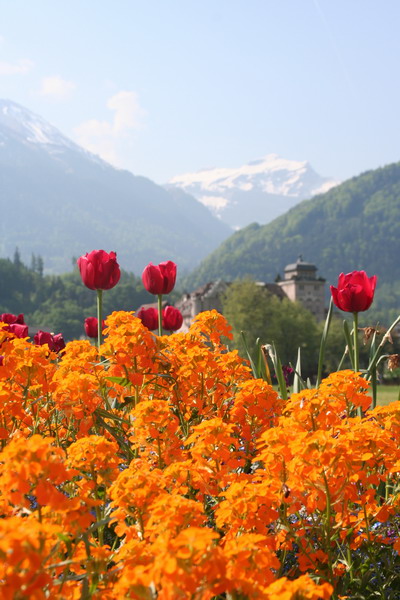
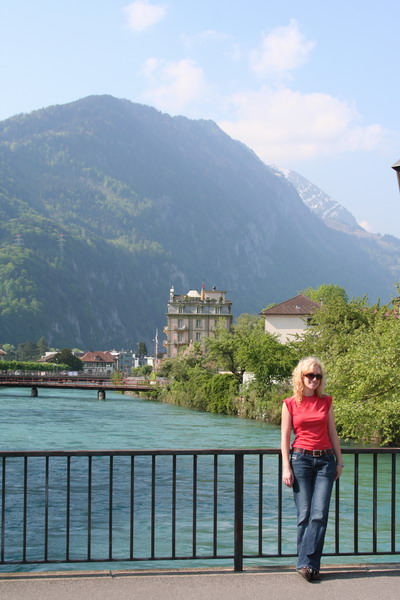
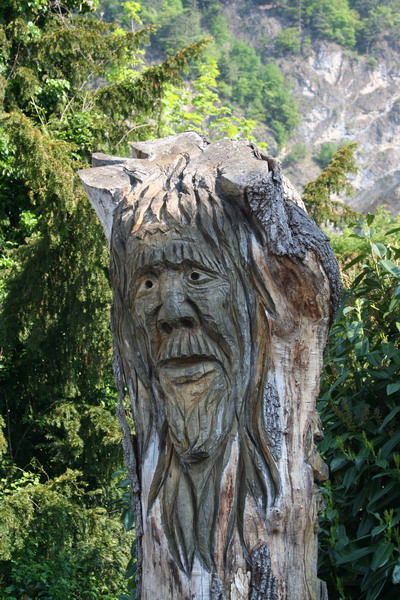
Next, we decided to see what type of adventure we could find. We heard that the paragliding was especially nice.
This is our group. To paraglide with tourists, you have to have a commercial rating (much like an airline pilot, but with less flight time required). So, when we got to the top of the mountain, we had the privilege of choosing our pilot. When was the last time you got to have a lineup of pilots and you choose the one who seems the most qualified?? 🙂 Fortunately, Anna and I chose wisely and we had very knowledgeable and skilled pilots to accompany us on the journey down to the valley floor.
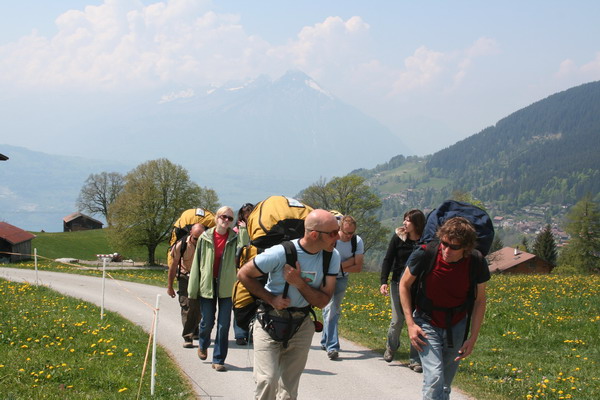
One of the reasons paragliding is safer than sky diving is that you can inspect the chute and lay it out in the right position before you
leave the ground. When you are free falling at 120 MPH, you don’t have the same luxury. Plus, the risers can become entangled and not let the chute fully inflate. With this, all of that is avoided by a simple pre-flight inspection.
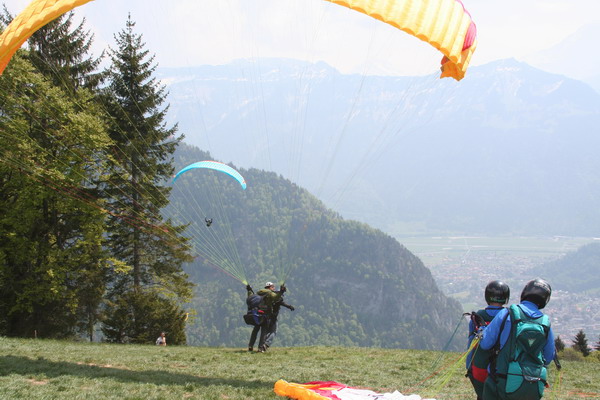
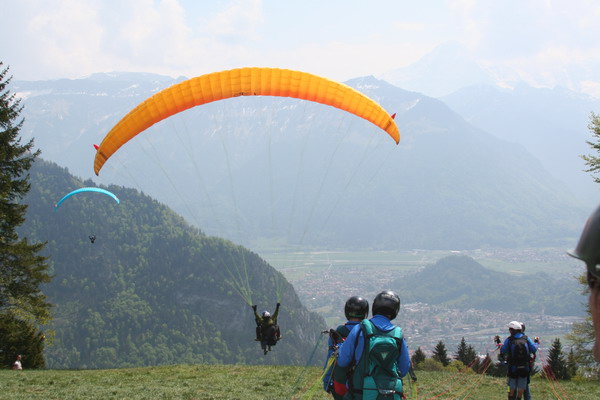
There were plenty of hang gliders launching from the same point.
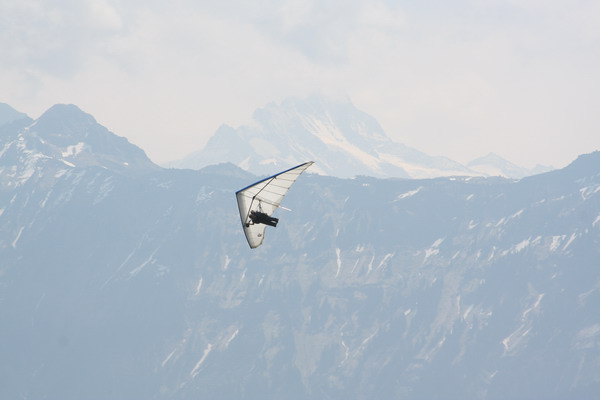
This is an aerial vantage point of the launch point.
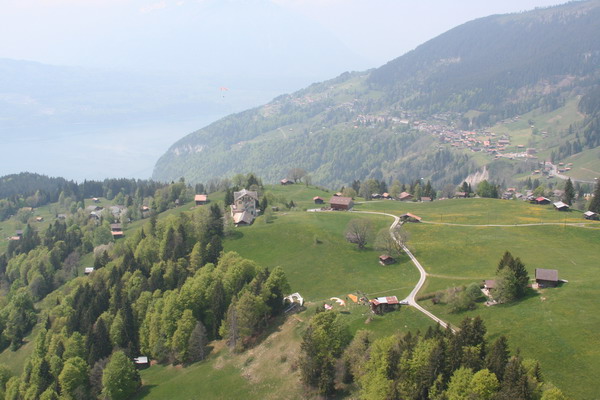
Here is Anna and her pilot flying over Lake Thun (one of the two lakes that surround Interlaken, or “between lakes”).
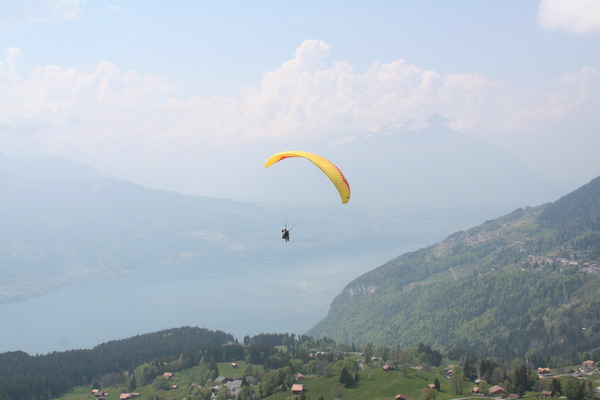
Here’s a solo flier that gives a better perspective of what it’s like.
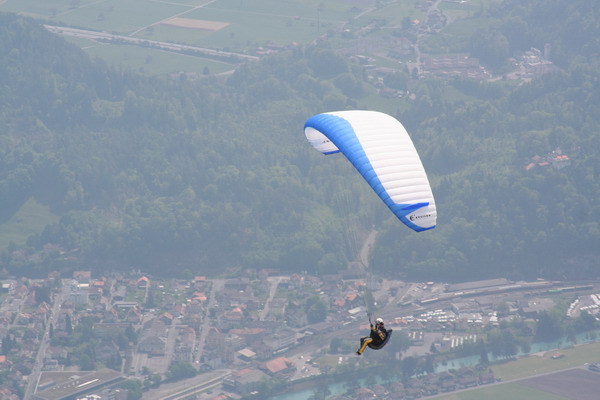
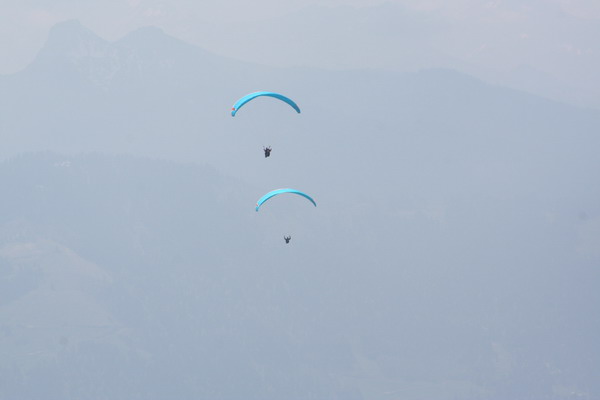
This is Interlaken with Lake Brienz in the background.
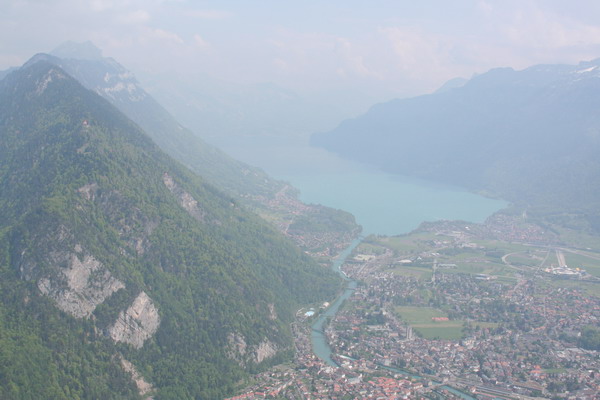
Anna flying high…
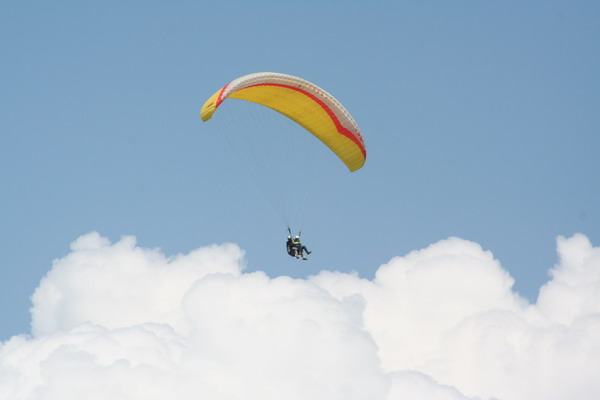
Landing is always the trickiest part, especially when both people are so close together.
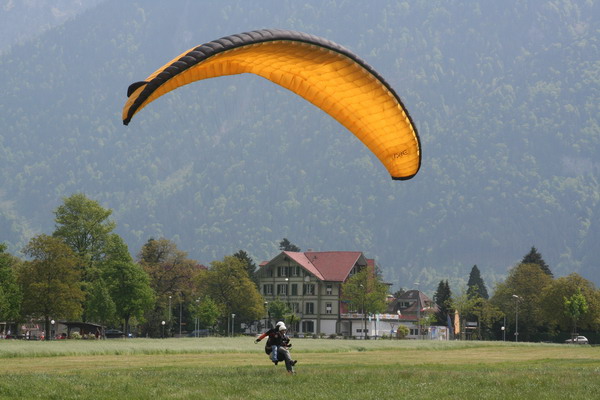
Here’s Anna on short final.
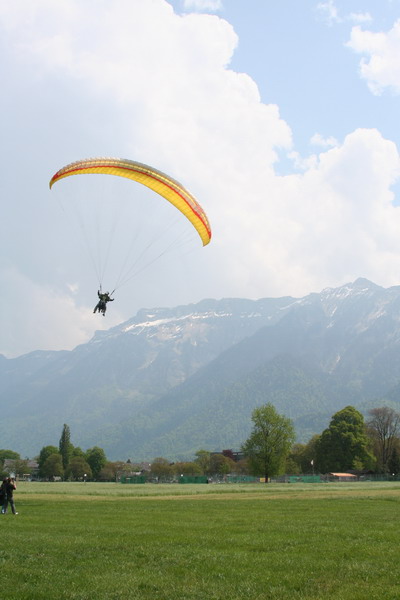
Touchdown.
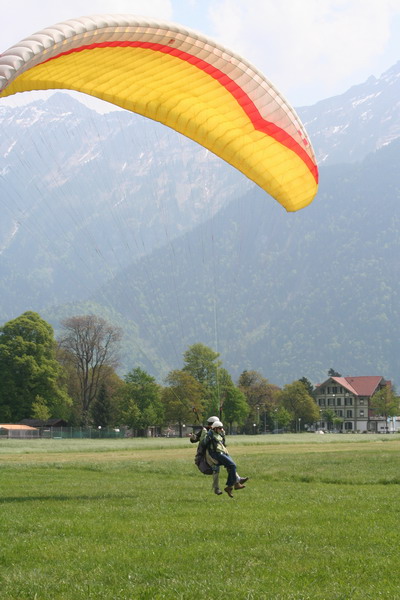
Once back on the ground, she walked away with a little swagger in her step. 🙂
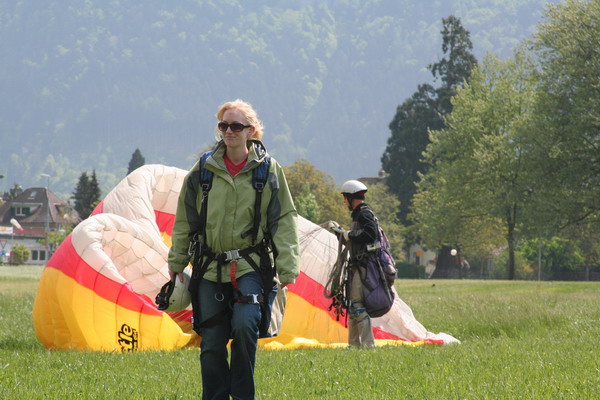
Later, we decided to take a short drive up to the Jungfrau Valley, past the little village of Lauterbrunnen.
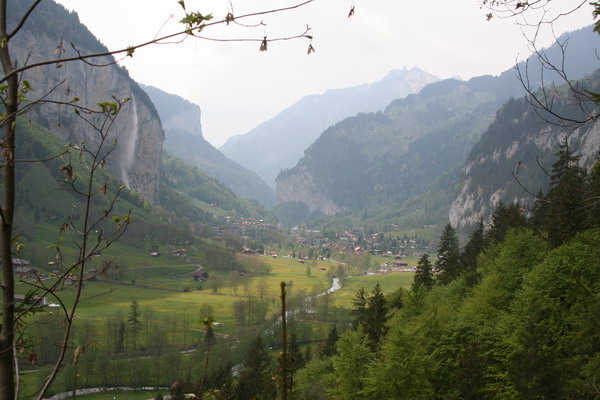
Inside the side of the mountain, erosion from glacial runoff has created a spectacular series of waterfalls. Most are inside the mountain and small tunnels have been cut out of the rock so you can go inside and have a closer look at 10 of these beautiful waterfalls. This is just down stream from the first falls. The water still retains that blue hue of ancient glacial ice.
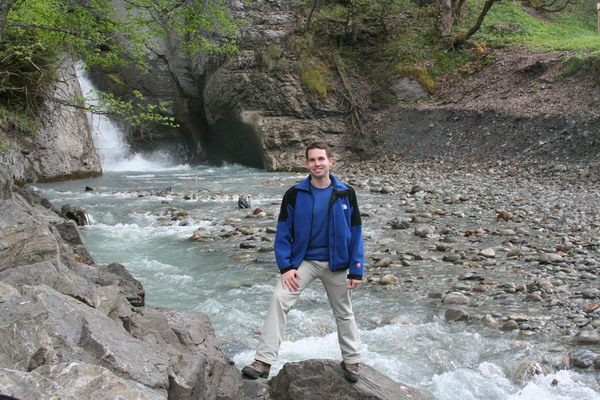
These images are from inside the mountain.
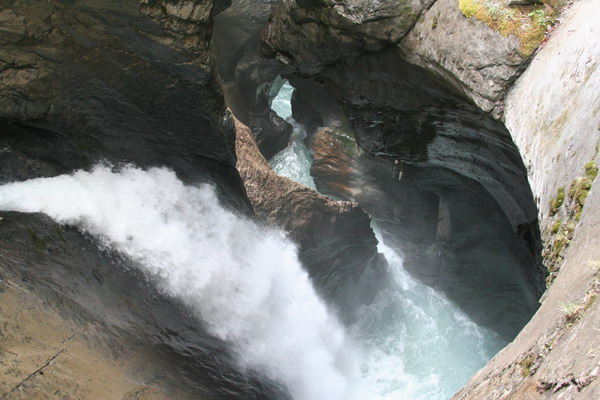
The water courses through the mountain at an average of 100 cubic feet per second (or about 3 cubic meters per second).
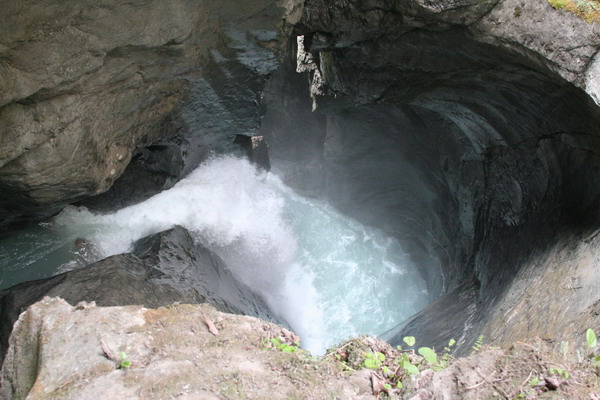
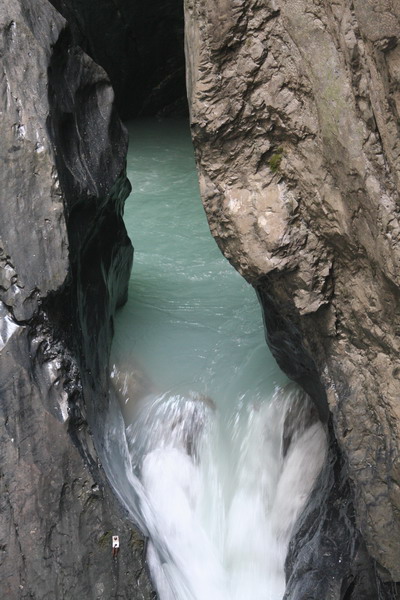
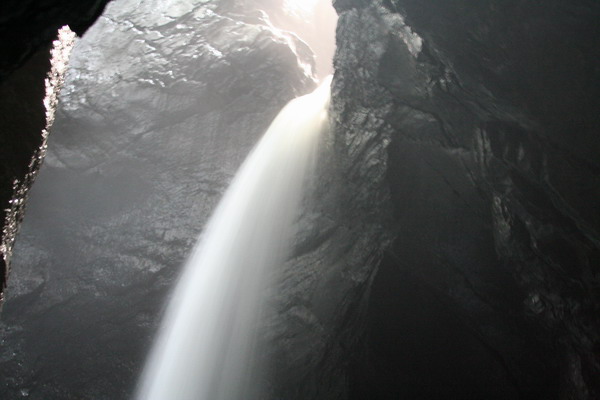
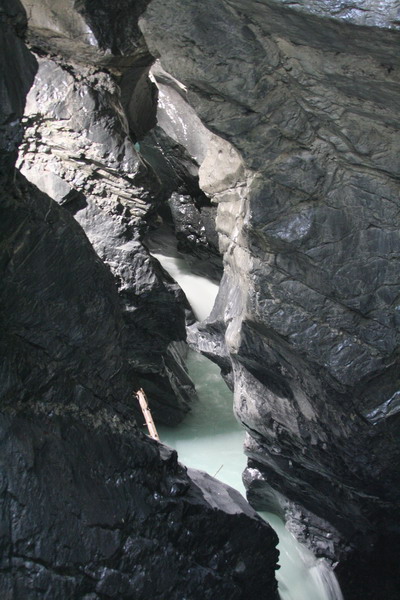
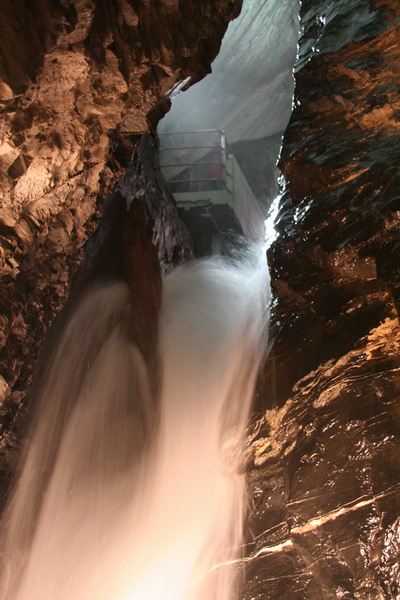
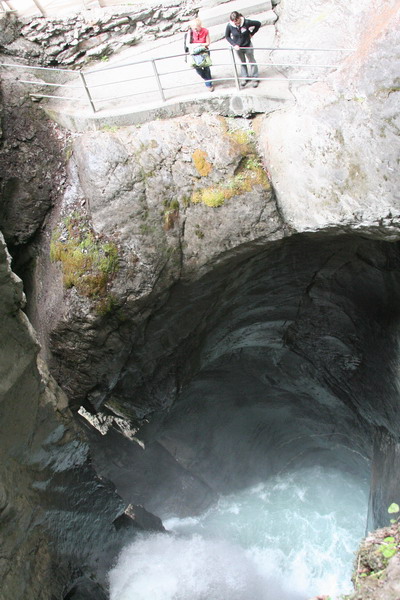

Our next adventure is a fairly new and popular European sport: Canyoning. Since it hasn’t really caught on in other parts of the world yet, let me explain what it involves. Basically you take a group of people (often the younger, “I feel like I am indestructible” types), add a couple of guides, put everyone in thick wetsuits (to ward off the bone numbing cold that comes from glacier fed streams) with life jackets, helmets and finish with a harness, then head to the nearest canyon (with a river or stream in it of course). Next comes the easy part: go from point A to point B in the canyon. Of course getting there is where the fun is. For our canyoning adventure, we hiked across stones, through the water (floating and swimming), jumped off several cliffs (not to worry though, nothing was over 30 feet), slid over natural waterslides into deep pools and rappelled off a cliff in a manner that was more like a zip line than an actual rappel.
As you can imagine, that environment is not conducive to taking pictures. So, all I have is this image from the point where we finished and had lunch.
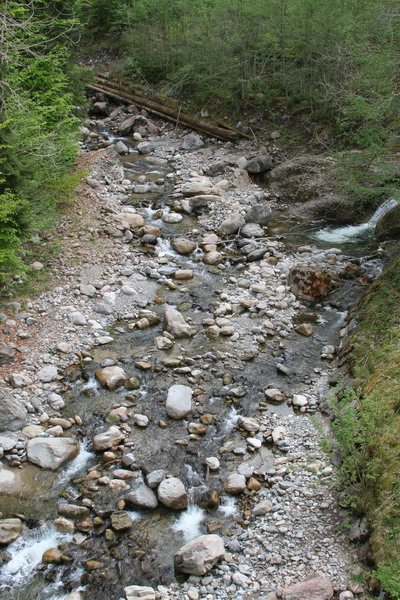
The next stop on our itinerary (and where I am writing this from) is a little town in the Lauterbrunnen Valley called Mürren.
The next post will cover our adventures (hiking), here in this charming Swiss village where cars are not allowed.
So, until then…
–Jim
Rome — part 2
OK, this entry will take you through ancient Roma.
Perhaps the most well know monument is the Flavian Amphitheater, but because of the mammoth 100′ tall statue of Nero that used to adorn the entrance. However, today it’s simply known as the Colosseum.
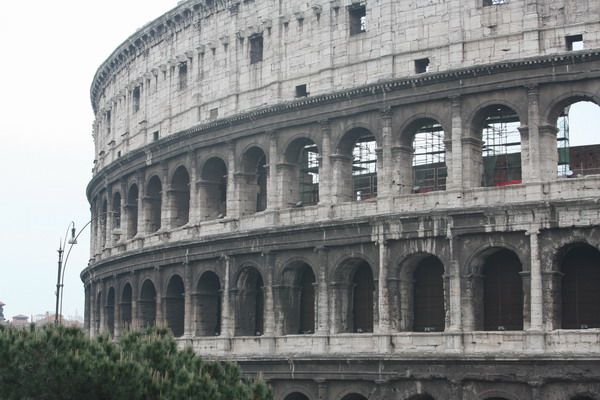
Here you can see a re-creation where the floor of the of the Colosseum was. This perspective allows you to see the inner workings below. Gladiators, or animals could be moved around under and raised up to the surface. Can you imagine seeing African animals like lions, elephants or rhinos for the first time ever as they were used in gladiatorial contests?
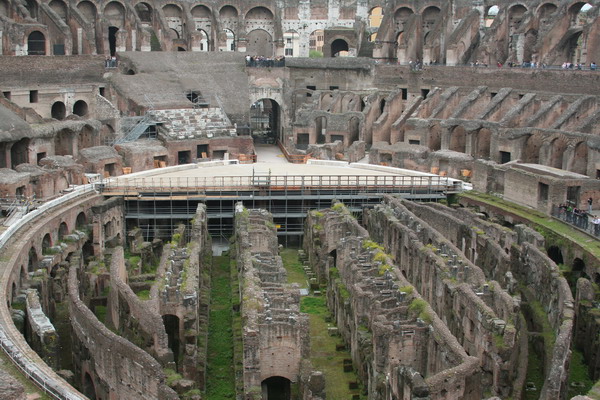
It was in use for nearly 500 years (after it was completed in 80 AD by the emperor Titus). It could hold 80,000 people. The form of the Colosseum is nearly identical to that of our modern arenas.
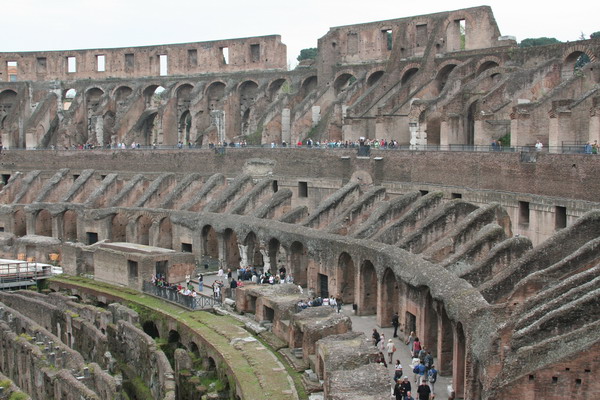
Unfortunately, earthquakes destroyed much of the south side in the mid 14th century.
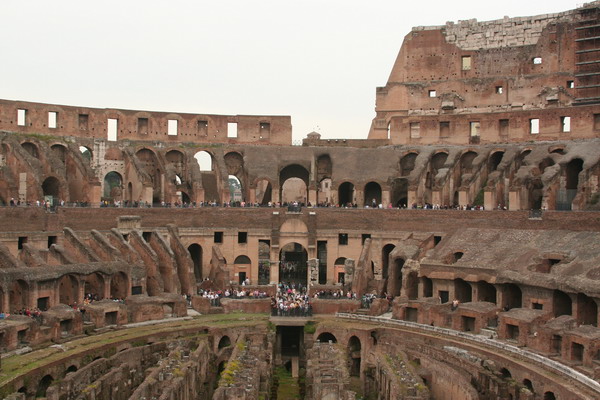
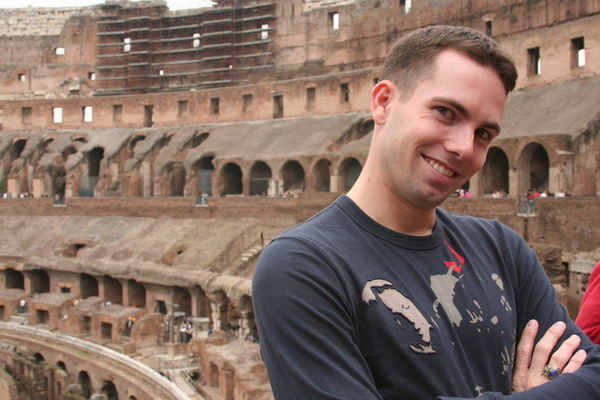
That evening, we explored several of the piazzas. This one is one of the most famous: Piazza Navona.
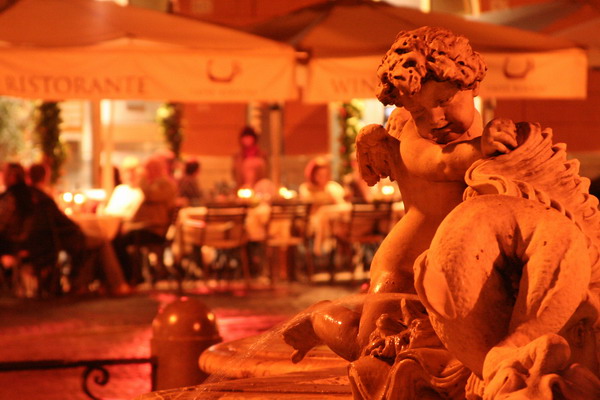
The next morning, we went to a sprawling Sunday market on the left bank of the Tiber River. We began at the Porta Portese and walked for a couple hours, but never actually reached the end. We had read it was the grandfather of flea markets, and it certainly was huge.
Next, we headed out to the outskirts of Rome to see an ancient road that connected Rome to the sea. It was designed to carry foot traffic on the sides and animal powered vehicles in the center. Here are some pictures of animal powered traffic.
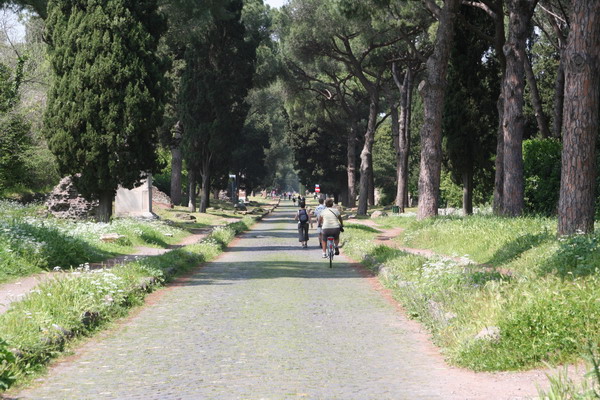
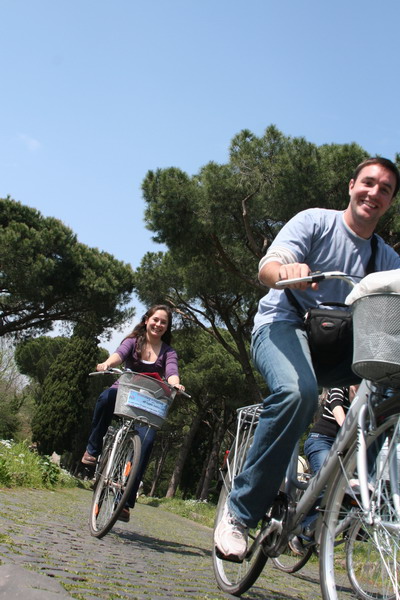
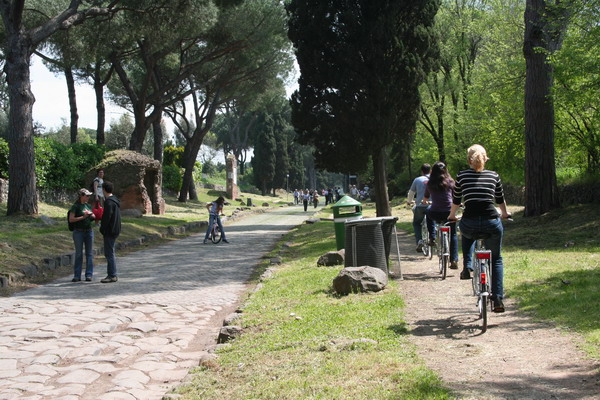
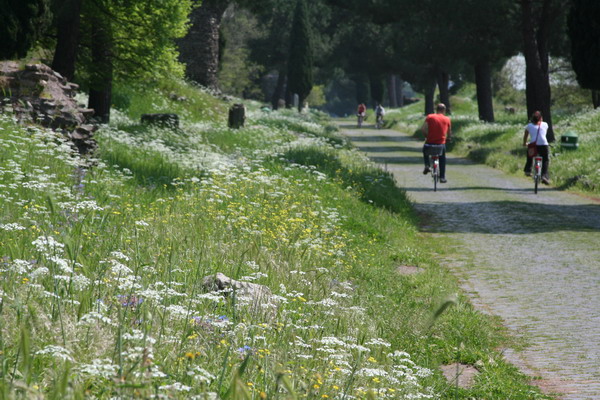
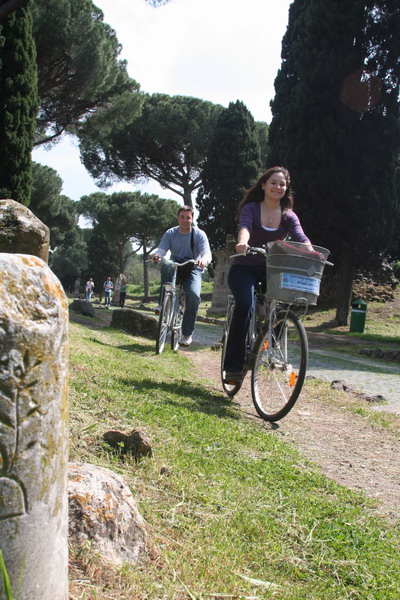
Our last afternoon was spent pursuing several fascinating museums. The first one is the National Museum of Rome.
As you can see they have a Roman copy of the famous Greek discus thrower by Myron.
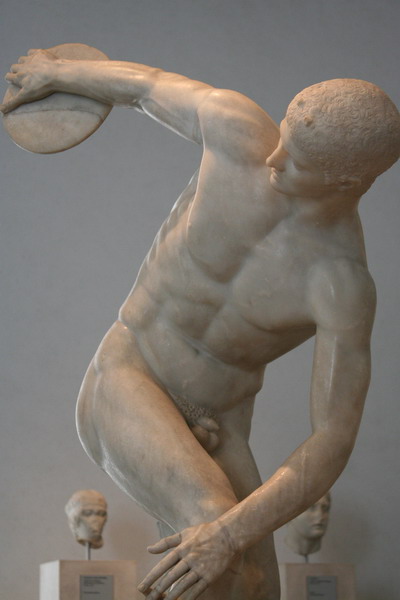
And the busts of the Caesars.

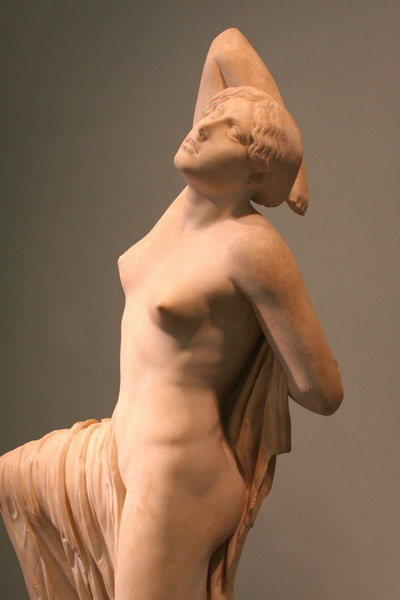
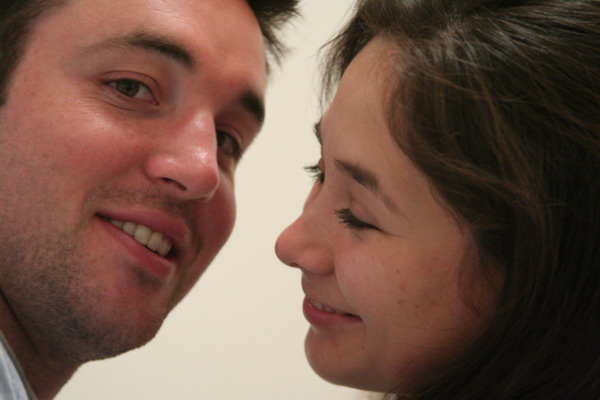
The final museum was the Borghese Gallery. Unfortunately, cameras were again not allowed inside. However, inside, it was a very pleasing blend of art in building, decorating, painting and sculpture.
Here is the outside of one of our new favorite art museums.
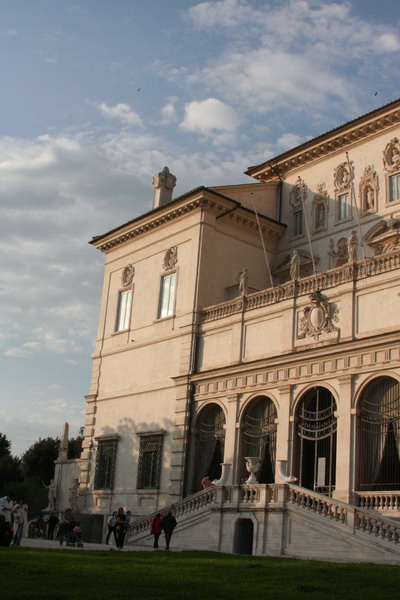
I have to add this quick addendum: for nearly a day, my batteries died. So, Jen was kind enough to let me use her camera. When I look through those images, I may add more to this post (or create another one). So, keep checking back.
Well, that concludes our experience in Rome. It was an outstanding trip and has showed us that Rome is one of our top 5 favorites cities in the world.
We have another trip planned next week to Switzerland. So, I should have some more images to share with you all soon. For those who don’t know, it looks like I will be gone for a while starting next month. So, my postings will either slow down (not that I post that often), or stop for a while. So, we will have to make this next trip memorable.
Until then…
–Jim
Rome — Center of the ancient world
This past weekend we visited the amazing and ancient city of Rome with our friends Jen and Andy. If you enjoy history, this city is rife with it (and consequently this post as well).
The history of Rome is incredibly long and storied. I won’t belabor you with a long history of the city, but suffice it to say it’s interesting.
We began our (all too brief) three day tour with a stop by the rather macabre display called the Cappucin Crypt. It is a rather artful display of the bones of about 4,000 monks of the Cappucin order. Other than being the namesake for Cappuccino, these monks from the mid-16th century up till 1870 chose to have their remains placed on display.
The heading takes a somewhat less spiritual approach: “You are what we were; You will be what we are.” Rather poignant.
Next, it was on to the happier and better known, Spanish Steps, also known as Piazza di Spagna. It’s so named for the Spanish Embassy that was next to the Piazza.
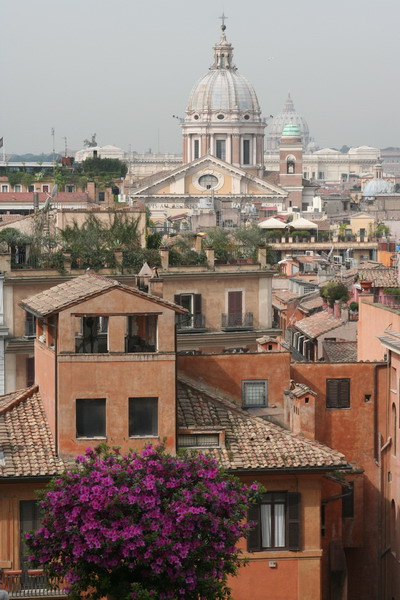
There are 138 steps leading up, away from the house where the English poet John Keats lived in the early 19th century. Anna caught me making a picture of Jen and Andy here.
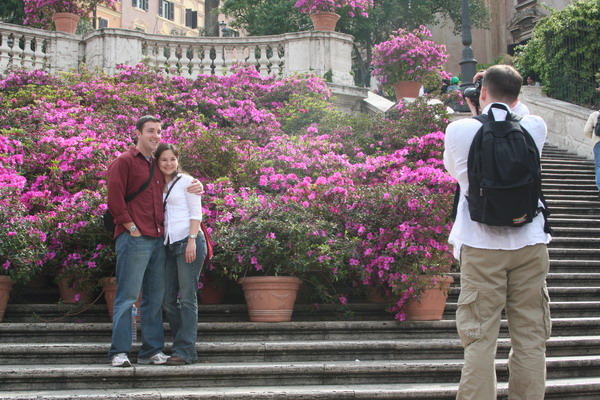
Do you know what the smallest country in the world is? Sizing up at a whopping 100 acres, is the Vatican City, with it’s paltry 980 residents. However, for many centuries, this small city state was the seat of power for the western world. Also known as the Holy See, the Vatican was granted autonomy through the Lateran Treaty, which was signed by the Vatican, the Italian king, as well as the fascist Prime Minister and de facto dictator, Benito Mussolini. Today, the Holy See is a full, but non-voting member of the United Nations and has pledged permanent neutrality in political affairs.
Since there about 54 galleries in the Vatican Museum (including the Sistine Chapel), we decided a tour guide was in order. Plus, with average of 15,000 visitors per day someone to lead us through the chaos was certainly appreciated. Here is our guide who also happened to be from Michigan.
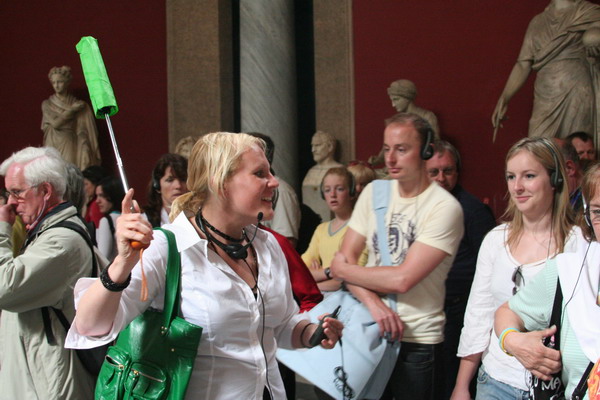
As we traversed the museums, there were exquisite paintings and sculptures that have been accumulated over the museum’s 500 year history (although only 236 years have been as an official museum, but the 500th anniversary was celebrated in October 2006).
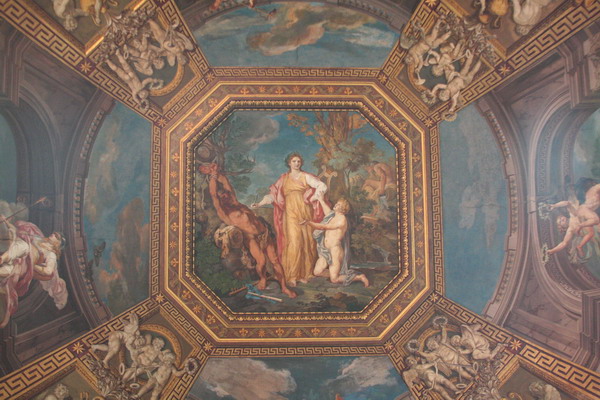
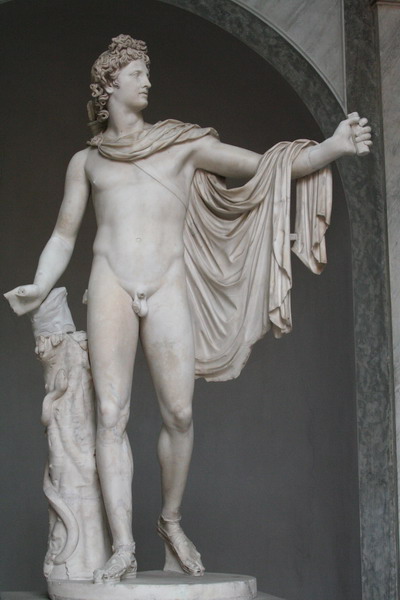
Some of the sculpture had crystal eyes, which added a startling amount of realism.
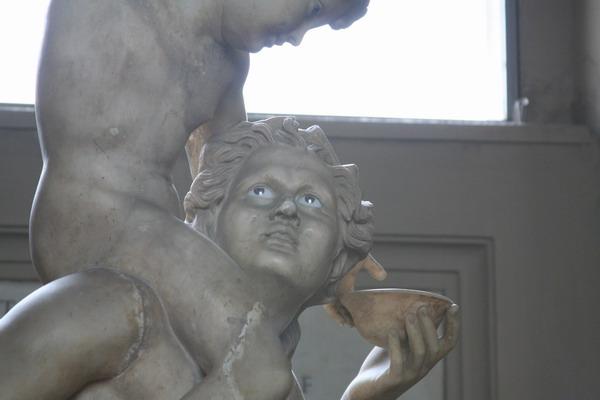
These tapestries were woven by some of the same Dutch masters we saw in Belgium.
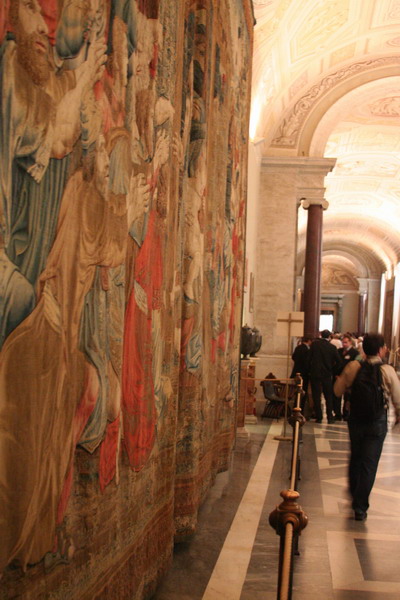
This room is known as the Gallery of Maps (also a nice perspective on the volume of people who pass through the galleries).
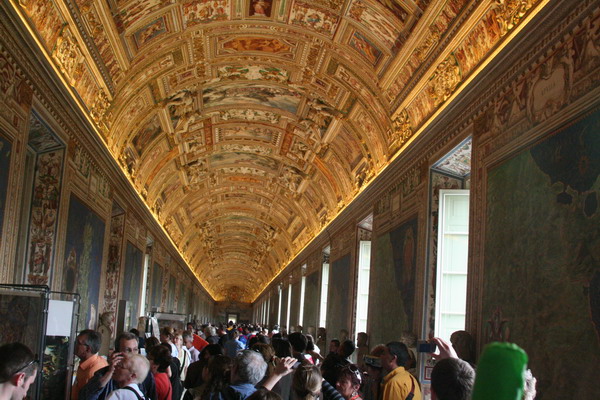
The final stop through the museum was the amazing Sistine Chapel. Functionally, this is where the papal conclave is held to elect a new pope. The current procedure to do that was established in 1274. In April 2005, Joseph Ratzinger was elected Pope Benedict XVI, by a group of cardinals in this room. In the corner, there is a small furnace where the secret ballots are burned. This is how the outside world knows when a new pope has been elected. If the smoke burns black, there must be another vote. If it is white, a new pope has been chosen by a majority vote. Interestingly, since the year 533, a pope also chooses his papal name. Pope John II was originally Mercurius, but since Mercury was also a messenger of the Roman gods, he decided it would be inappropriate to keep that name. However, it is not required to change your name, but the last pope to rule under his birth name was Pope Marcellus II in 1555.
Aesthetically, although I was familiar with the masterpiece ceiling and frescoes of Michelangelo Buonarroti, I didn’t really know the history of it, nor did I truly appreciate the scope in my mind. Although Michelangelo believed himself to be a better sculptor, he accepted a commission from Pope Julius II to paint the ceiling, which he did over four years from 1508 – 1512. Then, later from 1535 – 1541 he was commissioned by Pope Paul III to paint the Last Judgment over the alter. Perhaps the most famous part of the ceiling is the panel in which God is depicted creating Adam with his outstretched finger. Unfortunately, pictures were not allowed in the chapel (although that didn’t stop all too many tourists from snapping away). So, I don’t have any images to share with you. However, it was awe inspiring just to stand in that magnificent room.
Next, we moved out of the museum and into the largest and most impressive church in the world, St. Peter’s Basilica. It stands on the site where Saint Peter was laid to rest in 64 AD. A small shrine was built on the site. When Constantine made Christianity the state religion of Rome, he built a church on the same site. Then, in the mid 15th century when Pope Nicolas V decided to create the largest and grandest church in the world. However, it wasn’t until 1506 that it was officially begun by Pope Julius II, then not until 1626 was it finally completed. To further the idea that Michelangelo was a true Renaissance Man, he aided in the design and was the chief architect for the final 18 years of his life. Unfortunately, he never saw his design come to fruition.
With that, let us enter this grand edifice.
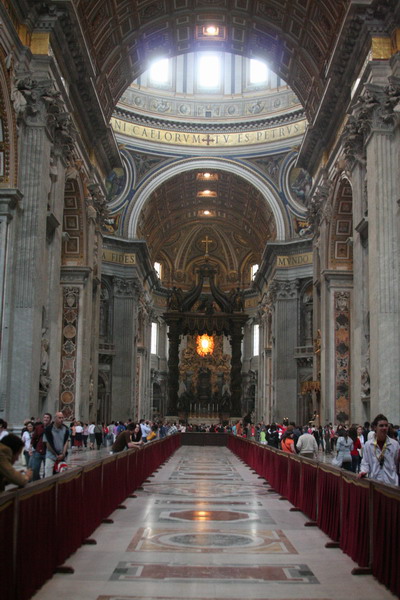
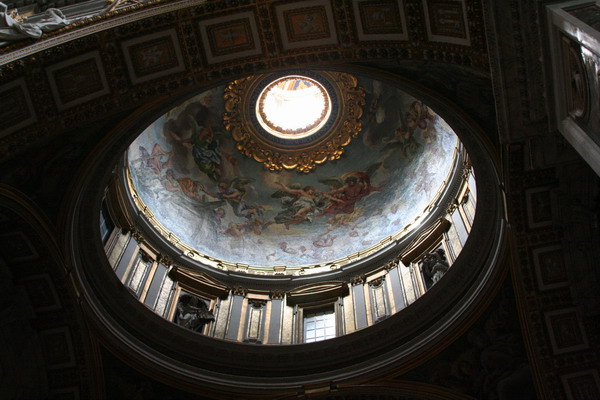
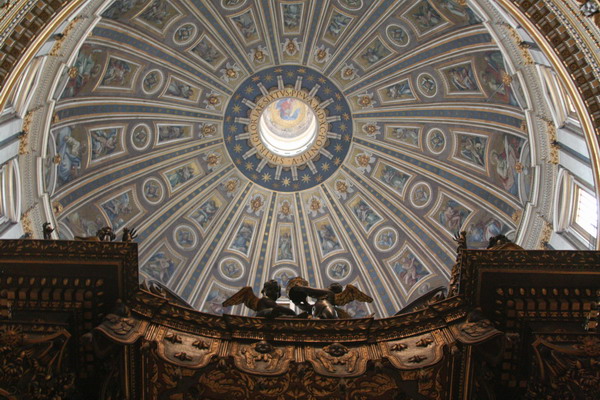
Here is the alter of St. Peter’s.
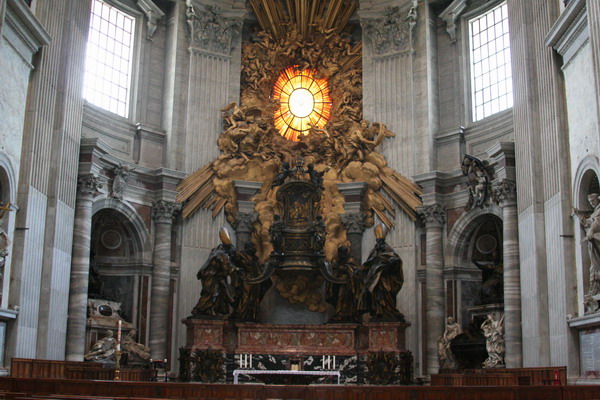
When Michelangelo was only 24 years old (in 1499), he carved the Pietà of a youthful Mary holding a crucified Jesus.
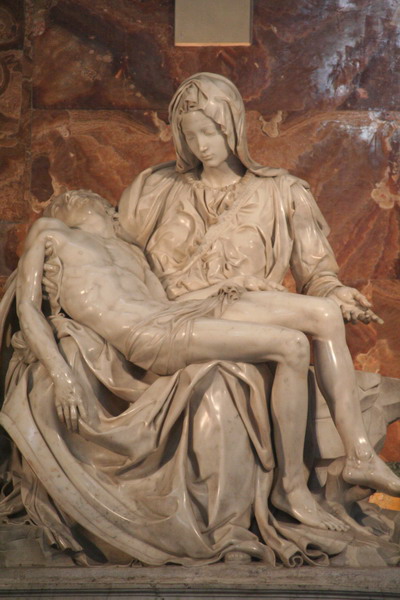
There is also a large statue of St Peter. This statue predates the current basilica and was in the first church.
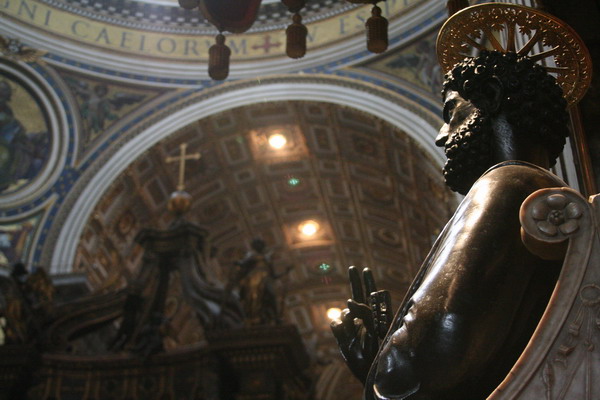
As you can see, people enjoy touching his feet.
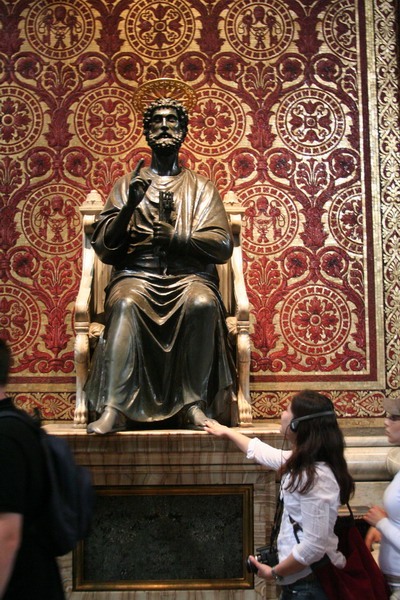
His right foot is so well worn, that the toes aren’t even visible anymore.

There was also a unique statue of Mary holding the shroud of Jesus with his likeness on it.
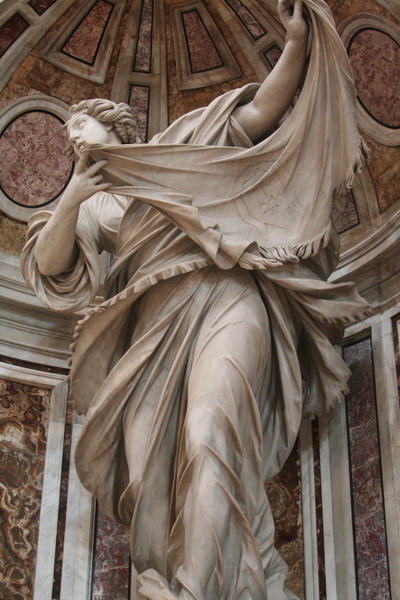
Next, we took a journey up the 323 stairs to the top of the dome.
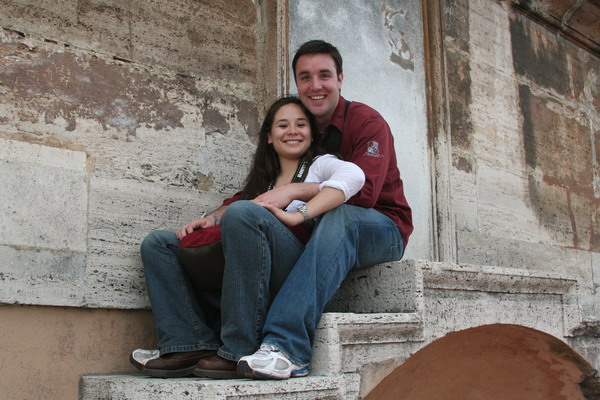
You can see that the dome has a double wall. Since the shape is parabolic, as we climbed higher, the walls curved steeper to the peak. It gave an interesting feeling as we went higher.
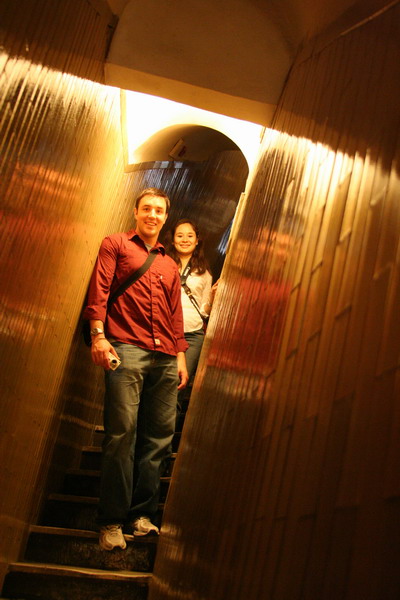
The view from the top afforded a great perspective of the Roman skyline. Here you can see Bernini’s St. Peter’s Square.
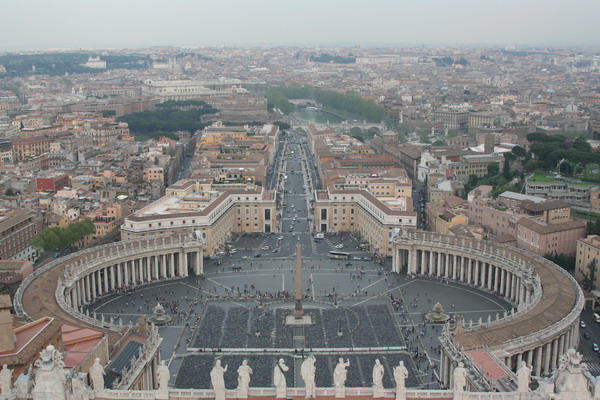
As we exited the church, we saw some of the Swiss guards who have protected the Holy See for the last 500 years. Their uniforms were purported to be designed by Michelangelo…
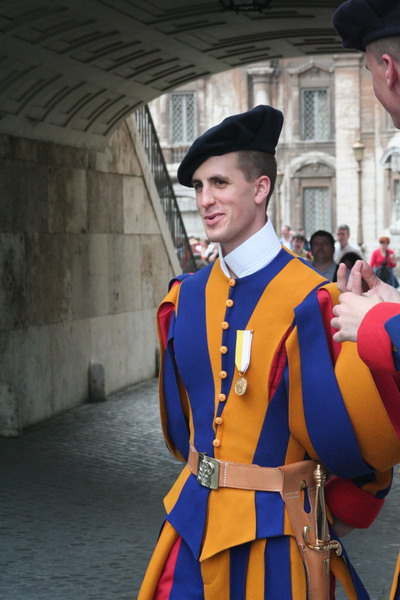
Then, back down in the square, we looked back up to see the square and Dome of St. Peters.
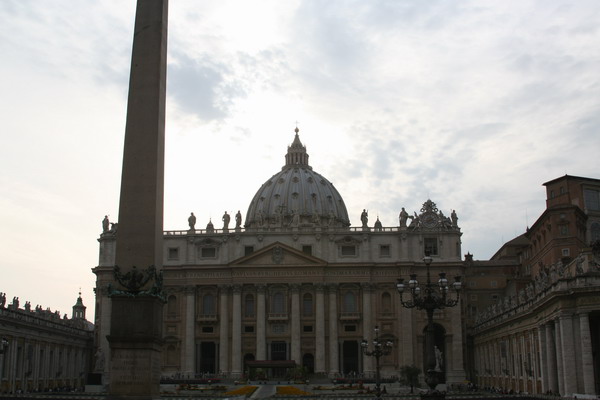
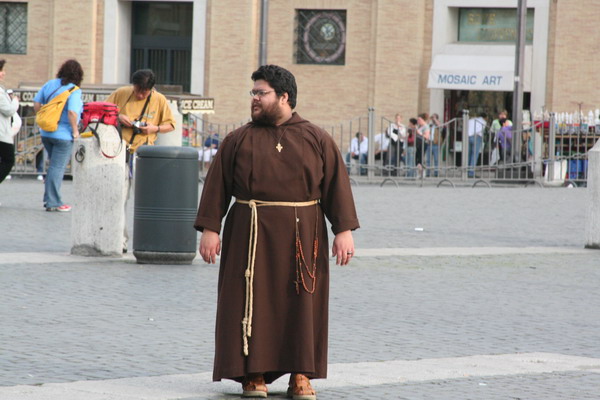
Dinner at the outdoor cafe was perfect.
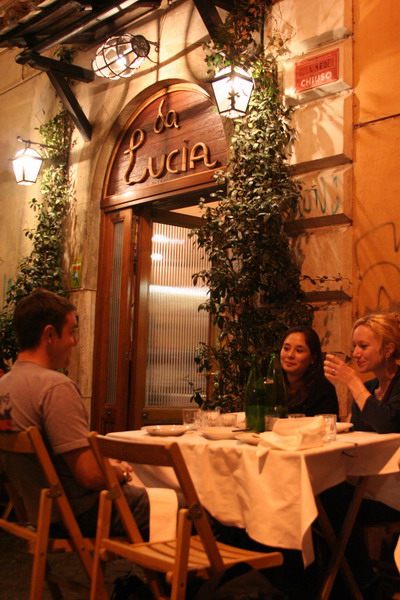
Then, over to the famous Trevi Fountain. It was complete in 1762 and is powered solely by the aqueduct it taps into (with no pumps to aid its flow).
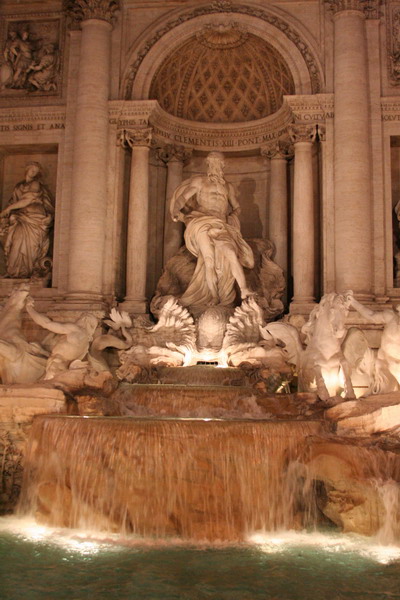
There were plenty of other people there to enjoy it with us.
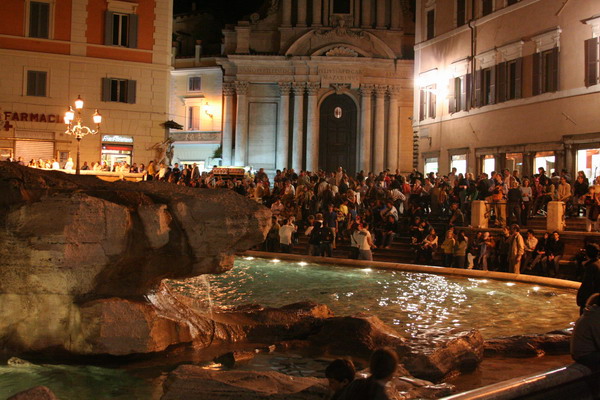
Including Jen and Andy.
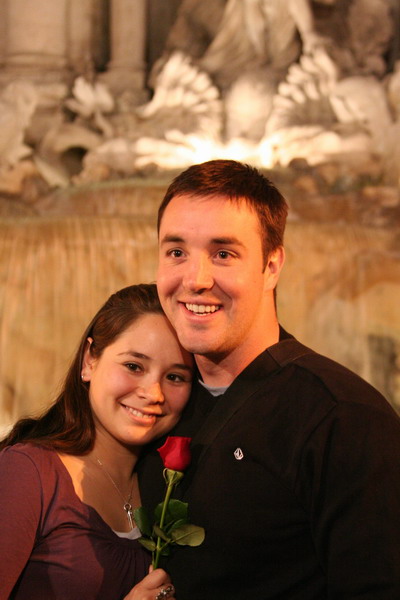
So, that concluded our first day in Roma. The next two were similarly spectacular and filled with historical discovery.
So, until then…
–Jim
